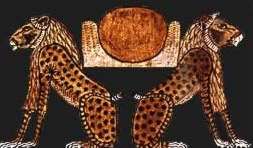
''Wholeness'' = a balance {foundation?} of something? 'Horizon' symbol? If so, what constellation would represent it? Any planets within it - to define a start point?
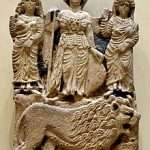 Continued: Refresher: "A round stone is a symbol of the Self...The lions a royal couple, are in themselves a symbol of totality {'16' ?}. In medieval symbolism, the ''philosopher's stone'' {a pre-eminent symbol of man's wholeness} is represented as a pair of lions or as a human couple riding on lions. Symbolically, this points to the fact that often the urge toward individuation appears in a veiled form, hidden in the overwhelming passion one may feel for another person. {In fact, passion that goes beyond the natural measure of love ultimately aims at the mystery of becoming whole, and this is why one feels, when one has fallen passionately in love, that becoming one with the other person is the only worthwhile goal of one's life}. As long as the image of totality in this dream expresses itself in the form of a pair of lions , it is still contained in such overwhelming passion. But when lion and lioness have turned into some king and queen, the urge to individuate has reached the level of conscious realization, and can now be understood by the ego as being the real goal of life." ['Man and His Symbols' / C. Jung].
Continued: Refresher: "A round stone is a symbol of the Self...The lions a royal couple, are in themselves a symbol of totality {'16' ?}. In medieval symbolism, the ''philosopher's stone'' {a pre-eminent symbol of man's wholeness} is represented as a pair of lions or as a human couple riding on lions. Symbolically, this points to the fact that often the urge toward individuation appears in a veiled form, hidden in the overwhelming passion one may feel for another person. {In fact, passion that goes beyond the natural measure of love ultimately aims at the mystery of becoming whole, and this is why one feels, when one has fallen passionately in love, that becoming one with the other person is the only worthwhile goal of one's life}. As long as the image of totality in this dream expresses itself in the form of a pair of lions , it is still contained in such overwhelming passion. But when lion and lioness have turned into some king and queen, the urge to individuate has reached the level of conscious realization, and can now be understood by the ego as being the real goal of life." ['Man and His Symbols' / C. Jung].
Question. Has Jehovah {Yahweh?} been seen stood/riding on a 'lion' ?
"Ishtar is the Mesopotamian East Semitic { Akkadian, Assyrian and Babylonian} goddess of fertility, love, war, sex, and power. She is the counterpart to the earlier attested Sumerian Inanna, and the cognate for the later attested Northwest Semitic Aramean goddess Astarte..." {Wiki/Ishtar].
The one word that has not been used in the above 'statement' = ''vegetative'' - its most important in order to define 'something'...
Cersei / Jaime Lannister ? {Game of Thrones}.

'Terrace of the Lions'. Delos.
"In the absence of a native Israelite visual art - either because the second commandment was interpreted as vetoing all images, or because of a lack of talent, or both - the entire scheme of decoration, too, was Phoenician in character. Hiram dispatched bronze and gold for the purpose; and the two giant cherubim of gold plated olive wood, whose wings roofed the Ark in the Holy of Holies, resembled the fantastic composite figures found at Byblus and Megiddo, which displayed a human head and a lions body and wings of a bird, and were sacred to Ashtoteth." [Chapter 8, 'The History of Ancient Israel' by M. Grant]. Link to other ''imaginative'' ['mystical'?] forms such as the Sphinx; the Griffin and Unicorn. Find them to understand them - rather than evaluate; only on first impressions.
Side note: "Griffins are not found in China. Origins begin in 7500BC in Greece, Turkey and Persia." [Phineas / 'Pawn Stars' / S14. EP4].
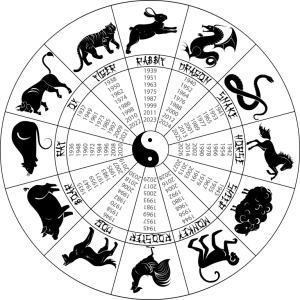
The Lunar Year of the Rat begins the Chinese zodiacal calendar. Any lions?
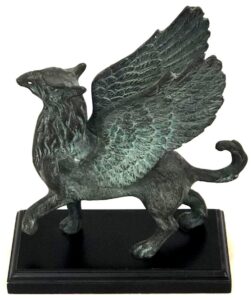 And/or: ''In ancient Greece, alliances between cities were sometimes a matter of life and death....One such bond existed between the city of Teos, which was settled around 1000BC, by groups from mainland Greece on the western coast of what is now Turkey, and its colony Abdera, on the Thracian coast of northeastern {'N/E'} Greece.....Abdera was resettled by refugees from Teos, who fled their city in the 6th century BC to escape a Persian invasion....Around 500BC Teos joined alliance against Persian rule - a rebellion known as the Ionian revolt. Teos suffered badly in the Battle of Lade {494BC}, and the people of Abdera came to the aid of their parent city. The cities remained close allies after the war, joining their legal systems and circulating the same currency - silver coins, often stamped with the image of a griffin.'' [Page 35 'Archaeology' / Jan-Feb 2023].
And/or: ''In ancient Greece, alliances between cities were sometimes a matter of life and death....One such bond existed between the city of Teos, which was settled around 1000BC, by groups from mainland Greece on the western coast of what is now Turkey, and its colony Abdera, on the Thracian coast of northeastern {'N/E'} Greece.....Abdera was resettled by refugees from Teos, who fled their city in the 6th century BC to escape a Persian invasion....Around 500BC Teos joined alliance against Persian rule - a rebellion known as the Ionian revolt. Teos suffered badly in the Battle of Lade {494BC}, and the people of Abdera came to the aid of their parent city. The cities remained close allies after the war, joining their legal systems and circulating the same currency - silver coins, often stamped with the image of a griffin.'' [Page 35 'Archaeology' / Jan-Feb 2023].
Continued: ''The Greeks sometimes identified Asteria with the Phoenician goddess Ashtarte. It is not known if the Greek goddess was in fact derived from the Phoenician. However, other Greek gods worshipped around the Aegean, such as Melikertes (Phoenician Melqart) and Ino-Leukothea were indeed imported from the East.''
Something extra: "The Arkites who are mentioned in Genesis and also the Tell Amarna tablets of 1400 BC were an ancient Canaanite people well known for their worship of the moon goddess Astarte, or Ishtar, to whom the acacia wood arc was sacred.
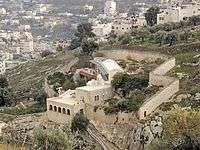
A resting place for a 'stranger'. Potters Field? Question. If anything is found - who would have been responsible - Hebrews or Christians OR the collective effort? Question 2. What would that imply? Universal knowledge common to all? In other words 'BROTHERS and SISTERS' regardless of religions?
A more detailed account [in relation to the overall subject] will be found - 'Woman's Mysteries: Ancient and Modern' by M. Esther Harding. Within chapter 10 are clues not only to the above but information on why such historical figures [such as Herod] are used within this same subject; or more importantly; what they represent, [in the above example that would be ''wasteland'']. Proving once again [if and when this subject; goes mainstream] - the viability of the material that becomes the ''head of the corner'' that defines this subjects 'foundations' ['framework'].

The Colossus of Rhodes: “To you, O Sun, the people of Doric Rhodes raise this bronze statue which reaches Olympus after calming the waves of war and crowning their city with the spoils of the enemy. Not only over the seas but also on land they light the sweet torch of freedom. “
Votive inscription on the Colossus.
Question. 'Head of the serpent' ?
For a further head scratch - put ''stranger'' in the usual box.
"I know now that my teacher is the holy man who gave the wise warning. I humbly made this confession to my father. 'Oh, if i could only find him!' My longing was sincere, for one day the saint arrived unheralded. 'Enough of tiger taming.' He spoke with calm assurance. 'Come with me; i will teach you to subdue the beasts of ignorance in jungles of the human mind.' I was initiated into the spiritual path by my saintly guru.
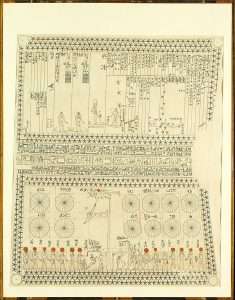
Astro ceiling in Senenmut bare tomb chamber. 'Folded'?
He opened my soul doors, rusty and resistant with long disuse. Hand in hand, we soon set out for my training in the Himalayas." [Extract from the chapter entitled the 'The Tiger Swami' from the book 'Autobiography of a Yogi'. Mentioned elsewhere]. Try ''unhinged'' in relation to ''hinged''.
'Eleven' to enlarge.
For a further head scratch - why ''unheralded?''
"Many years ago the English psychologist, F. W. H. Meyes, suggested that - ''hidden in the depth of our being is a rubbish heap as well as a treasure house''.
"I will give you the treasures of darkness and the secret places." {Isaiah 45,7}.
"...beasts of ignorance'' in relation to 'the beast that rises in the east'. S/E or S/W?
'Fingers' and 111 { 'onehundred and eleven'} - to enlarge.
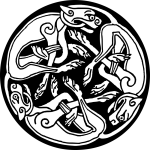
Knock 'three' times. Dogs?
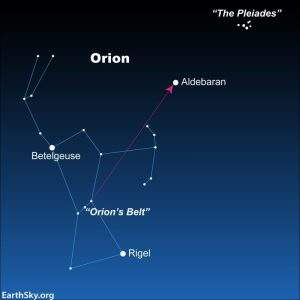
Any dog?
And/or: "What do you think about religion, Anna? Can one speak of god while drinking beer?" i asked...''How can i speak of god?'' she retorted. ''I don't know him. I don't know anyone well, except myself. I know that I've got both the angel and beast in me, and that the two of them are not looking for the same nourishment. If i listened to only the beast, I'd live like an animal. If my beast obeys the angel, it teaches me what my beast does not know...'By angel', i suggested, 'do you mean soul?'..." Soul or angel, whatever you wish: my eyes do not see him, but my heart knows him and is often looking for his company. I cant doubt him, because he shows me the way, like a dog leading a blind person..." ['Journey into the Light'].
Side note: ''Angelet is a small gold coin once used in England....''
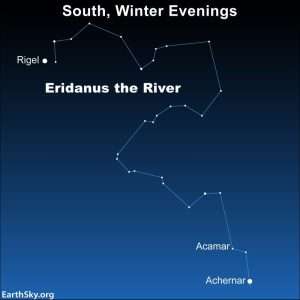
Begins at the left foot of Orion.
A working example: ''Coming back from Dubai was like my tail between my legs - to put all that effort in to get a loss was very deflating. BUT who's there when i get out of the ring? - my wife, my son, my mum and dad and brothers - IT was THEN i saw it for what it was. Although a shit moment in my life, it was also a lovely moment in my life with my family. Sometimes it just takes a little nudge to realize what you have around you'' ['Eddie Hall: The Beast versus the Mountain'].
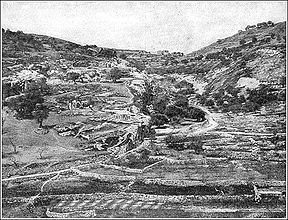
Somewhere outside ancient Jerusalem. In Roman times some say it became a rubbish heap; fires forever burning. Others say; it was just a fable; a myth; past down through the course of generations. Question. Why? Could they not think up a better one?
"So, in my appeal to the most worthy, and in exposing myself to all the dangers and anathemas which threaten revealers, i believe myself to have done a great and useful thing, directing the breath of 'god' living in humanity ['divine bit' link. This readers input], upon the social chaos, and priests and kings for the world to come. A thing is not just because god wills it, but god wills it because it is just, said the angel of the schools. It is as if he said: The absolute is reason. Reason is self existent; it is because it is, and not because we suppose it. It is, or nothing is; and how should one desire anything to exist apart from reason? Madness itself does not occur without it. Reason is necessity, is law, is the rule of all liberty and the direction of all initiative. If god exists, it is by reason. The conception of an absolute god outside or independent of reason - is the idol of black magic and the phantom of the fiend. The demon is death masquerading in the tattered garments of life, the spectre of Hirrenkesept throned upon the rubbish of ruined civilizations, and concealing a loathsome nakedness..." [ Taken from the book by E. Levi].

The loonies have taken over the asylum?

'Devil in the details'.
N.B. Some say Herod himself became 'mad'.
"Madness lies in fixity of thought, and not in fluidity." [Quote from within the book 'Where is Saint George'].
"...So of our thoughts, when it has decided to make the leap."
"...in order to 'see' rightly one has to look rightly. And to look rightly means to endeavour to see through the mists of the phantoms of things." [Quotes from within the book by Tomberg].


From Foreign Minister to Prime Minister - by way of the 'old boy network'? i.e., the deal done with the parsons daughter: Vote for me with all your boarding school mates...and i will give you...? Question. Is that how the PROFESSION of politics works?
"The 'antichrist' being the phantom of the whole of mankind; the being engendered through the whole historical evolution of humanity. He is the ''superman'' [Friedrich Nietzsche link] who haunts the consciousness of all those who seek to elevate themselves through their own effort - without grace." [Same book]. Try ''grace''.
Side note: A {working?} example {i.e., if only in the Old Testament sense of the 'word'}: "I will deliver thee into the hand of them that thou hatest, into the hand of them from whom thy mind is alienated. And they shall deal with thee hatefully, and shall take away all thy labour - and shall leave thee naked and bare: and the nakedness of the 'whoredoms' shall be discovered....I will do thee things unto thee, because thou hast gone a whoring after the heathen and because thou art polluted with their idols..." [Ezekiel 23:29-30].
Try Gog/Magog. And/or ''forgetting/remembering''. All as a means....?
Continued: "Solomon lost his divinely bestowed power after becoming besotted with a foreign [stranger?] woman. He was told by the priests of 'her land' that he could not 'sleep' with her until he had made a sacrifice to the god Moloch. This he did and subsequently committed further idolatry by building temples to two other gods, Baal and Rapha. The testament of Solomon ends with Solomon saying he wrote down his account for the benefit of others who might be inspired and aided by his knowledge, but warned off the path by his own ultimate downfall - 'So that you may find grace forever and ever." [Chapter one, 'Grimoires: A History of 'Magic' Books' by O. Davies]. Solomon who was found dead after a 'gnat' ate through his 'staff'.
"Gnawing = The act of a person or thing that gnaws. To waste or wear away; corrode; erode..."
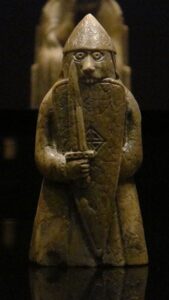
Lozenge?
"An act of divine 'magic' - or grace - is necessary to accomplish the infusion of life {'untouched by fire' link?} into that which is 'dead'." [Extract from the book by Tomberg].
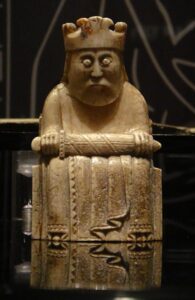
Sheathed?
Side note: "The artisan who carved the chessmen was an exceptionally talented craftsperson with an eye for fine details. Every piece is unique in possessing singular features and expressions. Some portray berserkers gnawing on their shields in anticipation of battle while others show the likeness of warriors and horsemen. Here, too, are melancholy looking queens, stout bishops, and sword-wielding kings. Such iconic pieces stir the imagination, and it isn’t hard to imagine Vikings occupying their time by playing endless games of chess, drinking tankards of ale in longhouses, and no doubt waiting out the worst of the winter before embarking on raids." [The Lewis Chessmen].
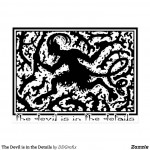 Continued: Remember - no less than Solomon; one of the main [patriarchs?] - characters of the Old Testament. Someone who took a ''turn for the worse''. Proving that regardless of what ones first impressions are [of say a subject?] a certain light shines through. In other words the subject has sincerity and depth to it - including - in the moral sense. No matter what status or position any individual may attain - those basic principles still apply. Those eternal ones. Represented [in this subject] with the 'skulls cap' as seen with [as examples] Ptah and Imhotep. Positive has to succeed over negative over a period of time - day by day. Otherwise no 'grace' is achieved. Top down in relation to bottom up.
Continued: Remember - no less than Solomon; one of the main [patriarchs?] - characters of the Old Testament. Someone who took a ''turn for the worse''. Proving that regardless of what ones first impressions are [of say a subject?] a certain light shines through. In other words the subject has sincerity and depth to it - including - in the moral sense. No matter what status or position any individual may attain - those basic principles still apply. Those eternal ones. Represented [in this subject] with the 'skulls cap' as seen with [as examples] Ptah and Imhotep. Positive has to succeed over negative over a period of time - day by day. Otherwise no 'grace' is achieved. Top down in relation to bottom up.
Hence: Forgetting {negatives} Remembering {positives}.
ALL IN RELATION TO A MIND SET.
Question. A universal or local one?
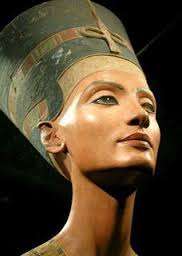
Cubit? 'A Sting in the tail'. or should that be 'tale'? THEME to enlarge.
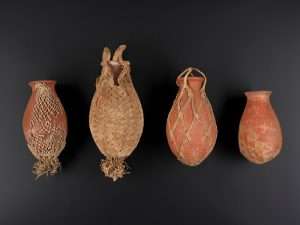
Found with the Qurna Queen and child: ''under a rocky outcrop {'overhang'?} on the north side of the valley at Thebes.'' Lozenge shape?
From a different perspective: "Know also, my child, that this disease of laziness and negligence gradually undermines with its poison {'Uraeus'?} not only the first small roots out of which virtuous habits may grow, but even, those which are deep rooted and serve as a foundation of the whole order of righteous life. As a worm {or rat?} gradually gnaws at the root of a tree, so negligence, if it persists, insensibly wears away, and destroys the very nerves of spiritual life. Through it the 'devil' manages to spread his nets {'153' ?} and set the snares of temptations for every man; and exerts particular care and sly cunning in the case of those who are zealous in spiritual life, knowing that a lazy and negligent man easily submits to lusts and falls, as it is written: 'The soul of the sluggard desireth, and hath nothing' {Prov. xiii, 4}. So be ever watchful - take good care of everything good, as it behoves a courageous warrior...." [Chapter 20 'How to Overcome Negligence from the book 'Unseen Warfare' / edited by Nicodemus of the Holy Mountain and revised by Theophan the Recluse].
REFRESHER: ’'A symbol is an energy-evoking and direct agent’'. Think about it. In relation to those positives/ negatives within a ‘river’. [ J.Campbell. ’Flight of the Wild Gander’. Chapter five. Part seven]. That link to the word ''archetype.''
''According to folklore, worms begin to emerge from the earth at the spring equinox.'' ['The Chase'].
'Conception' to enlarge.
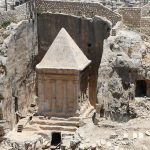
Absalom
 A working example: ''The 6th century Pope Gregory the Great assumed that the 'seven' demons were the result of a sinful life. He identified those seven with seven vices that Mary eventually overcomes, living virtuously....The Greek tradition also reflects on her spiritual battle against passions. The 12th century writer, Theophanus Kerameus wrote: 'Let no one tink that Mary had seven demons. But it is just as the gifts of the Holy Spirit are synonymously called seven spirits, as the great Isiah numbered them {Is 11:2-3}. Thus the negative ENERGIES are called 'demons' - Despondency, thriftness, contempt, envy, falsehood, greed, and every passion is an analogy with the demon that begat it.'' [Page 59 'Mary Magdalene: Insights from Ancient Magdala'/ J. Rishtine].
A working example: ''The 6th century Pope Gregory the Great assumed that the 'seven' demons were the result of a sinful life. He identified those seven with seven vices that Mary eventually overcomes, living virtuously....The Greek tradition also reflects on her spiritual battle against passions. The 12th century writer, Theophanus Kerameus wrote: 'Let no one tink that Mary had seven demons. But it is just as the gifts of the Holy Spirit are synonymously called seven spirits, as the great Isiah numbered them {Is 11:2-3}. Thus the negative ENERGIES are called 'demons' - Despondency, thriftness, contempt, envy, falsehood, greed, and every passion is an analogy with the demon that begat it.'' [Page 59 'Mary Magdalene: Insights from Ancient Magdala'/ J. Rishtine].
Question. 'Passions of Christ'? If so, what does that say for the 'relationship'. In other words Real or Symbolic?
'Mysteries of the Dark Moon' / Demetra George.
Side note: Chapter entitled the 'The seven Pillars of Wisdom' from the book 'Mystery of Numbers' / A. Schimmel.

Where have you seen it before?

'Bulls eye' = Eye of the needle?
As seen from a different perspective, {I.e.,figuratively speaking}: "The true understanding of the symbolic replacement of skullcap by crown must be found in the transformation which produce a 'new thinking' being. It is only after purification and coronation that the 'king' has the right to officiate in the temple. The true meaning of the royal diadem lies in this figurative separation 'of a part' of the cranium. In ancient Egypt, the royal diadem is designated by 'mh', which is also the word for the cubit of measure. The circular line of the diadem is indeed the very measure of the royal cubit; for each man, it shows the measure of his {her?} own cubit." ['Sacred Science']. Try ''cubit''.
Akhenaten?
Alexanders elephant scalp {skull cap]?
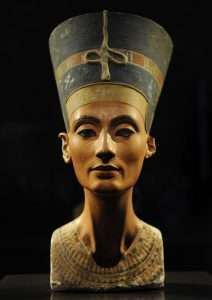
'Stamp of the feminine'. Real or symbolic?
"The word derives from the Greek διάδημα diádēma, "band" or "fillet",[1] from διαδέω diadéō, "I bind round", or "I fasten".[2] The term originally referred to the embroidered white silk ribbon, ending in a knot and two fringed strips often draped over the shoulders, that surrounded the head of the king to denote his authority. Such ribbons were also used to crown victorious athletes in important sports games in antiquity. 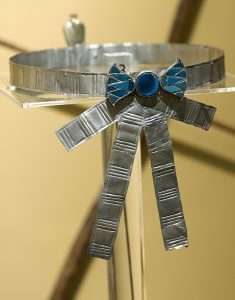 It was later applied to a metal crown, generally in a circular or "fillet" shape. For example, the crown worn by Queen Juliana of the Netherlands was a diadem, as was that of a baron later (in some countries surmounted by three globes). The ancient Celts were believed to have used a thin, semioval gold plate called a mind (Old Irish) as a diadem.[3] Some of the earliest examples of these types of crowns can be found in ancient Egypt, from the simple fabric type to the more elaborate metallic type, and in the Aegean world.
It was later applied to a metal crown, generally in a circular or "fillet" shape. For example, the crown worn by Queen Juliana of the Netherlands was a diadem, as was that of a baron later (in some countries surmounted by three globes). The ancient Celts were believed to have used a thin, semioval gold plate called a mind (Old Irish) as a diadem.[3] Some of the earliest examples of these types of crowns can be found in ancient Egypt, from the simple fabric type to the more elaborate metallic type, and in the Aegean world.
A diadem is also a jewelled ornament in the shape of a half crown, worn by women and placed over the forehead (in this sense, also called tiara). In some societies, it may be a wreath worn around the head.
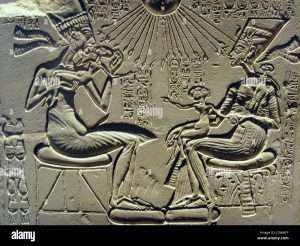
"My eyes must have narrowed, as I looked at him. Whatever one might say of Mark Hedsel, it was clear that he was no fool, and, so far as I knew, never had been. I looked at him more closely. He had changed — we all had changed in those 40-odd years. His scarf and beret had gone. They had been replaced by a smart business suit and an expensive silk tie, yet somehow he did not look much older." {'The Zelator'}.
The ancient Persians wore a high and erect royal tiara encircled with a diadem. Hera, queen of the Greek gods, wore a golden crown called the diadem."
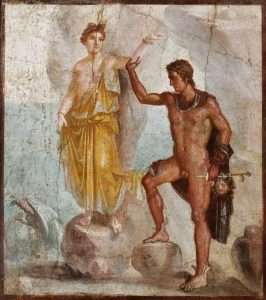 And/or: Silk in Viking Age burials has captured the interest of archaeologists and textile researchers since the first fragments were identified during the late 19th century. The delicate and exotic fabric connected Scandinavia to long-distance trade routes and provided a fundamentally different addition and unexpected golden lining to the cloth culture that was dominated by wool and linen fabrics. The archaeological material is highly fragmentary with few preserved larger pieces, and is dominated by fabric cut into long strips with little consideration for the pattern. At times, this has led to a simplified view in which the silk has been reduced to being purely ornamental and an expression of high social standing, wealth, and long-distance trade connections. The study is a reflection on the intangible values that surrounded silk in the silk-producing regions and the extent to which these ideas accompanied the fabric into Scandinavian society. Using the two sites of Birka and Valsgärde as a starting point, I examine the Scandinavian context of silks, their possible origin, and the trade routes of silk to Scandinavia. Although silk is present in various contexts, my focus is on the martial sphere of society, in which the need to express affiliation, status, and rank was fundamental, and clothing offered an opportunity to do so. Subsequently, I discuss some of the martial connotations of silk in its regions of origin and explore how these ideas may have been materialised in the silk itself. By exploring the biographies of the silk, and the ideas, cultures, and people that shaped them on their path to the north, I argue that part of the silk material in Viking-Age Scandinavia represents an intellectual import of the Byzantine, and Arabic, practice of warriors wearing silk.
And/or: Silk in Viking Age burials has captured the interest of archaeologists and textile researchers since the first fragments were identified during the late 19th century. The delicate and exotic fabric connected Scandinavia to long-distance trade routes and provided a fundamentally different addition and unexpected golden lining to the cloth culture that was dominated by wool and linen fabrics. The archaeological material is highly fragmentary with few preserved larger pieces, and is dominated by fabric cut into long strips with little consideration for the pattern. At times, this has led to a simplified view in which the silk has been reduced to being purely ornamental and an expression of high social standing, wealth, and long-distance trade connections. The study is a reflection on the intangible values that surrounded silk in the silk-producing regions and the extent to which these ideas accompanied the fabric into Scandinavian society. Using the two sites of Birka and Valsgärde as a starting point, I examine the Scandinavian context of silks, their possible origin, and the trade routes of silk to Scandinavia. Although silk is present in various contexts, my focus is on the martial sphere of society, in which the need to express affiliation, status, and rank was fundamental, and clothing offered an opportunity to do so. Subsequently, I discuss some of the martial connotations of silk in its regions of origin and explore how these ideas may have been materialised in the silk itself. By exploring the biographies of the silk, and the ideas, cultures, and people that shaped them on their path to the north, I argue that part of the silk material in Viking-Age Scandinavia represents an intellectual import of the Byzantine, and Arabic, practice of warriors wearing silk.
Back to the beginning...
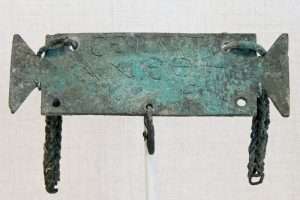
Common factors?
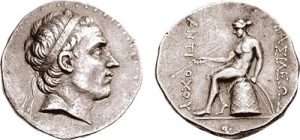
Omphalos stone: Hive shape?
"This valley was admittedly a horrible place; it started out as a location were children were sacrificed to the owl-god Moloch. Over time, the ritual murders stopped and Gehenna became the main garbage dump for the entire city. Dead bodies and all types of filth were routinely burned there. Gehenna was therefore a necessary place for cleansing and purifying the land through 'fire'. This appears to be the deeper meaning of the metaphor Jehoshua was using. The third definition of the word Gehenna in the 'World English Dictionary' is 'a place or state of pain and torment'...Many people still refer to karma as something you have to 'burn off,' and this appears to be a direct continuation of the symbolism used by Jehoshua..."
Side note. ''burn off'' relative to 'fire' relative to 'altar' relative to S/W?
Herod to enlarge.
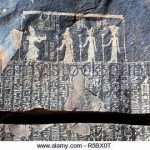
''Hung''?
And/or: ''The prima material is as cheap as dirt and can be had everywhere, only nobody knows it...It has a thousand names. But without it, the work cannot begin. The task of the alchemist is like ''shooting an arrow through a thread {'eye of the needle'?} HUNG up in a cloud,'' as Spitteler says. This prima material is ''saturnine'' - it is the most despised and rejected thing, ''thrown out into the street,'' ''cast on the dung hill,'' ''found in filth.'' [Page 170 'Alchemical Studies'].

Side note: {something to be learnt?}: "Although the keys to the mysteries are given to the initiate of the Western Way, each must still find the way in darkness by the light of personal intuition....The deceased 'gear' {'sarcophagus'?} was sometimes smashed to indicate that it was, henceforth, relegated to the Otherworld..." [Page 38 'The Western Way'].
Question. Any other reason to ''smash'' something. Recall the ''nose'' on the Sphinx {was it really due to Napoleon's sharp shooters?} or the ''defacement'' of such ''gear'' that belonged to such individuals as Akhenaten? To name but one.
Djedefre?
Continued: "...However, Paul never once mentioned Hell in any of his letters. The only possible exception in some Bible translations is where Paul is quoted as saying that Jehoshua triumphed over Hell in 1 Corinthians 15:55, but here, the Greeks word translates as ''the grave." This is the same word that is mistranslated in the Old Testament as ''Hell'' and was originally written as sheol." [Extract from the book ' The Synchronicity Key' by D. Wilcock].
Recall what '15' represents and/or the 'triple' of any number and/or the 'power' of same, i.e.,in the above example that would be 125...
Side note: 15th September 1940 ?

Herodium {Herodeion}. Three sarcophagus found. Two 'white' one 'red'. 'Red' one purposely smashed? Transcendent third not yet achieved? {indicative of}. "One decorated , the other UNdecorated - "the one decorated looked like ivy with flowers..." [ 'Herod's Lost Tomb' / Nat. Geographic]. Question. Lilies?
And/or: ''In Spell 125 of the Book of the Dead, the deceased declares that he has: 'Not trapped birds in the preserves of the gods; nor caught the fish of their marshlands.'' [Page 45 'Ancient Egypt Magazine' / Jan-Feb / 2023].
Ducks?
All in relation to: ''Classical authors agreed that Egyptian priests were forbidden to eat fish and, since the king was nominally High Priest of every cult, the prohibition extended to the Pharaoh himself.'' [Page 43].
Archetypes?
Fishers of Man?
Side note: Eating to fast = ''gobble'' link to the sound turkeys make = Christmas/winter link to death/rebirth? ['The Chase'].
REFRESHER: "The jackal-headed vase was called Duamutef, and contained the stomach, and occasionally the large intestine...The real meaning of this name is shown by the way it is written on the sarcophagus of Amenophis II, d*wa*mut*f, in which the hieroglyph 'wa' represents a knot coming untied. 'Mut' {meaning both Mother and Vulture} symbolizes the function of decomposition which takes place in the stomach {'belly'?} as in a womb and makes possible the generation of a new life. This is also the function of the jackal, which converts putrefying matter into vital nourishment. This is the first stage of any genesis...'' ['The Opener of the Way']. Continued elsewhere. Try ''knot'' and/or ''dog'' {i.e.,jackal}.
Try Akhet and/or 'antechamber'.
SIDE NOTE: "...in its 'physical' form as a 'Lily', i.e.,"as bearer of symbolic meaning". Chapter two. Same book. Try ''lily''. As a means...?
'Mans Search for Meaning' / Viktor Frankl.
Refresher: A 'working' example {i.e.,something hinted at}: "He arrived at the Atelier. The sculpture received him cordially and asked him to come in...Jean Thomas looked around at the new decor. On the stiff curtains hanging from column to column were engravings of religious paintings - primitive paintings and those of the Renaissance, of Giotto, della Francesca, and Fra Angelico. There were Madonnas and angels. Before the Holy See, there was a beautifully illustrated Mass book on a pulpit. At the feet of the black Virgin was a spray of lilies, which contrasted with the ebony of the statue." ['Journey into the Light'].
''Book'' in relation to a 'method'. Try that one.

Sculptured by ''The favourite of the King''.

Fish hook? Fisher of man?
As is the intent of: "I write this book with a master plan in mind. I do not go blindly word by word, hoping that sooner or later a sentence will 'evolve'. The sculptor sees the finished statue in the UNcarved block." ['Serpent in the Sky' / J. West].
Sculptor is a small constellation bordered by Aquarius and Cetus to the north, Fornax to the east, Phoenix to the south, Grus to the southwest, and Piscis Austrinus to the west. The bright star Fomalhaut is nearby.
''Fomalhaut is the brightest star in the Southern Fish constellation'' [Wiki].
Side note: The 1924-26 excavation put flesh on the legend. A pedestal of a statue of Zoser was found. On it, alongside Zoser’s title of Neterikhet (body of the neter) , Imhotep is cited with his manifold titles: Chancellor of the King of Lower Egypt, the First after the King of Upper Egypt, Administrator of the Great Palace, Hereditary Lord, the High Priest of Heliopolis, Imhotep the Builder, the Sculptor, the Maker of Stone Vases.
Aquarius?

Real or symbolic? Higher of the lower?
And/or: "The Egyptian sculptor imbued each statue in a similarly talismanic way, by concentrating the divine energy of the god portrayed with its appropriate correspondences; the hieroglyph for sculptor was ‘he-who-keeps-alive.’
God said to man I have placed you in the world that you may more readily see what you are I have made you neither earthly nor heavenly, neither a mortal nor a immortal being, in order that you, as your own sculptor, may carve features for yourself. You may degenerate into an animal, but by using your free will you may also be reborn as a god-like being.{'The Western Way' / C+J Matthews}.
Objective / Subjective as a means......
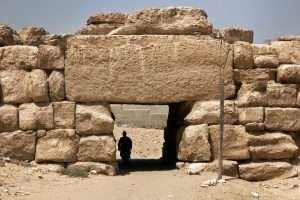
An unbelievable feat of ancient architecture, The Wall of the Crow is 656 feet long, 32 feet high and 32 feet at the base. Standing near the Sphinx, this ancient wall was constructed in the 4th Dynasty of Egypt and the true purpose still remains unknown.
Continued: Pisces Austrinus originated with the Babylonian constellation simply known as the Fish (MUL.KU).[2][3] Professor of astronomy Bradley Schaefer has proposed that ancient observers must have been able to see as far south as Mu Piscis Austrini to define a pattern that looked like a fish.[4]  Along with the eagle Aquila the crow Corvus and water snake Hydra, Piscis Austrinus was introduced to the Ancient Greeks around 500 BCE; the constellations marked the summer and winter solstices, respectively.
Along with the eagle Aquila the crow Corvus and water snake Hydra, Piscis Austrinus was introduced to the Ancient Greeks around 500 BCE; the constellations marked the summer and winter solstices, respectively.
And/or: ''Machina Electrica (Latin for electricity generator) was a constellation created by Johann Bode in 1800. He created it from faint stars between Fornax and Sculptor, to the south of Cetus. It represented an electrostatic generator. The constellation was somewhat popular during the 19th century and had appeared in a number of star charts, but was eventually rendered obsolete when the International Astronomical Union standardized constellation boundaries in 1930 and is now no longer in use.'' [Wiki].
137 ?
REFRESHER: The 1924-26 excavation put flesh on the legend. A pedestal of a statue of Zoser was found. On it, alongside Zoser’s title of Neterikhet (body of the neter) , Imhotep is cited with his manifold titles: Chancellor of the King of Lower Egypt, the First after the King of Upper Egypt, Administrator of the Great Palace, Hereditary Lord, the High Priest of Heliopolis, Imhotep the Builder, the Sculptor, the Maker of Stone Vases.

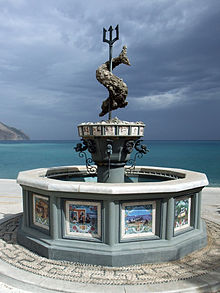 A working example: ''Since it was first displayed in 1883, two decades after it was first discovered, the 'nine' foot tall marble statue of Winged Victory Nike has awed visitors to the Louvre....It was placed by the sculptor above the theater in the Sanctuary of the Great Gods on Samothrace {N/E}....where one can see 'right down through the HEART of the sanctuary - and then out to sea'....ancient contexts of which are obscure. Nike is depicted alighting on a warships prow that served as the sculpture's base {'struggle' link}. The prow being made of blocks of Lartian marble, a blue-grey stone {battering ram} with pink and white veins - quarried from the coast off the Island of Rhodes {i.e., S/E Greece}.....Lions heads {with hair locks} in the form of fountains and lions manes also found.''
A working example: ''Since it was first displayed in 1883, two decades after it was first discovered, the 'nine' foot tall marble statue of Winged Victory Nike has awed visitors to the Louvre....It was placed by the sculptor above the theater in the Sanctuary of the Great Gods on Samothrace {N/E}....where one can see 'right down through the HEART of the sanctuary - and then out to sea'....ancient contexts of which are obscure. Nike is depicted alighting on a warships prow that served as the sculpture's base {'struggle' link}. The prow being made of blocks of Lartian marble, a blue-grey stone {battering ram} with pink and white veins - quarried from the coast off the Island of Rhodes {i.e., S/E Greece}.....Lions heads {with hair locks} in the form of fountains and lions manes also found.''
Question. Did those ''hair locks'' cover the middle of the forehead?
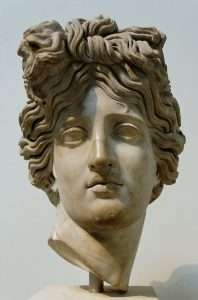
Apollo: Curl or knot?
''He has outlived that rage of early youth i.e., from dawn to noon {'zenith'}. He is no longer impulsive, but implacable....an immutable Will...breath from the sculptured stone.'' [Page 54 'Hathor Rising' / A. Roberts].
Something 'set' in stone?
Side note: David slays Goliath with a stone to the forehead. One of 'five' taken from the nearby stream. A fresh water one.
''Pure'' link?
'Bald' to enlarge.
 Refresher: "He who aspires to be a sage and to know the Great Enigma of Nature must be the heir and despoiler of the Sphinx: his the human head, in order to posses speech; his the eagles wings, in order to scale the heights; his the bulls flanks, in order to furrow the depths; his the lions talons, to make a way on the right and the left, before and behind." [Quote taken from the chapter entitled 'The Candidate' from the book by E. Levi].
Refresher: "He who aspires to be a sage and to know the Great Enigma of Nature must be the heir and despoiler of the Sphinx: his the human head, in order to posses speech; his the eagles wings, in order to scale the heights; his the bulls flanks, in order to furrow the depths; his the lions talons, to make a way on the right and the left, before and behind." [Quote taken from the chapter entitled 'The Candidate' from the book by E. Levi].
Continued: ''From the foundations and interior bronze FISHHOOKS found as 'offerings to the gods' .....and hairpins and magnetized iron rings {initiation rings} given to pilgrims in thanks- 'for a safe sea passage'....'' ['Archaeology' / Sep/Oct 2021].
Side note: ''A sharp U-SHAPED bend in a road is called a hairpin bend.'' ['The Chase' / S15 E17].
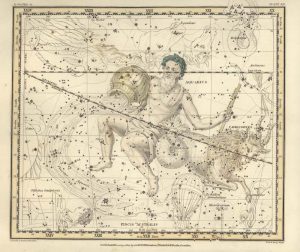
Southern fish 'drinking' the water from the urn. Age of Aquarius?
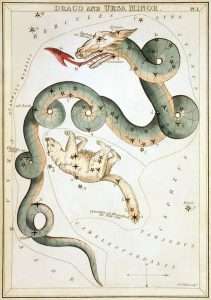
Biting ones tongue?
''Fomalhaut, aka Alpha Piscis Austrinus, is sometimes called the Loneliest Star. That’s because it’s the only bright star in a wide stretch of sky. From the Northern Hemisphere, Fomalhaut arcs in solitary splendour across the southern sky in autumn. Some call it the Autumn Star. From the Southern Hemisphere, you’ll look higher up to see Fomalhaut in your season of spring. In 2021, Fomalhaut isn’t so solitary. Two brighter planets, Jupiter and Saturn, appear near it in the sky. Fomalhaut will be the one that’s twinkling......Fomalhaut is the 18th brightest star in the night sky. It’s part of the faint constellation Piscis Austrinus, the Southern Fish. In a dark sky, you’ll see a half-circle of faint stars of which bright Fomalhaut is a part. This star pattern marks the open mouth of the Southern Fish.'' [https://earthsky.org].
Twingle, twingle little star.....

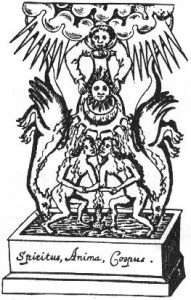 Among early Arabs Fomalhaut was Al Difdf al Awwal, the First Frog : and in its location on the Borgian globe is the word Thalim, the Ostrich, evidently another individual title. Flammarion says that it was Hastorang in Persia 3000 b. c, when near the winter solstice, and a Royal Star, one of the four Guardians of Heaven, sentinels watching over other stars; while about 500 b. c. it was the object of sunrise worship in the temple of Demeter at Eleusis ; and still later on, with astrologers, portended eminence, fortune, and power.
Among early Arabs Fomalhaut was Al Difdf al Awwal, the First Frog : and in its location on the Borgian globe is the word Thalim, the Ostrich, evidently another individual title. Flammarion says that it was Hastorang in Persia 3000 b. c, when near the winter solstice, and a Royal Star, one of the four Guardians of Heaven, sentinels watching over other stars; while about 500 b. c. it was the object of sunrise worship in the temple of Demeter at Eleusis ; and still later on, with astrologers, portended eminence, fortune, and power.
The Chinese knew it as Pi Lo Sze Xnn. With Achernar and Canopus it made up Dante's Tre Facelle; and sixty years ago, Boguslawski thought that it might be the Central Sun of the Universe.....
''Fomalhaut culminates (reaches its highest point in the sky) at different times on different dates. Here are just a few approximate times and dates of culmination:
Part 1 to enlarge.
July 15: 4:30 a.m. daylight saving time (DST)
August 15: 2:30 a.m. DST
September 15: 0:30 a.m. DST
October 15: 10:30 p.m. DST
November 15: 8:30 p.m. DST
December 15: 5:30 p.m. standard time.''Question. What is the common factor.
Question 2. What does it REPRESENT?
"The joy of good conscious is the accord between the moral rhythms of the 'lower' and 'higher' self. The beatitude [Matthew v,8] promising those who have a pure heart that they will 'see' god - signifies the accordance of their basic rhythm with the 'divine' rhythm. Joy is therefore the state of harmony of the inner/outer rhythms - of rhythm below with that of above..." [Extract from the book by Tomberg].
Try ''pure'' to 'see' it in the alchemy 'sense of the word'.

Any lions manes?
"They thought in terms of spiritual essences or ideals, and 'spirits' are hard to pin down..." ['The Chemistry of Alchemy'].
As one example: "To understand Sendivogius's method for isolating saltpeter, we must first understand what is meant by ''salt''. The term salt is used to describe a host of chemical compounds that resemble and behave like regular table salt, which is sodium Chloride, NaCI. A salt is usually white {'pure' link} and crystalline, although it can be different colours such as our friend copper{II} sulfate, which is blue. Salts are often soluble in water, but some salts are more soluble than others. In 'Discourse of Fire and Salt' - Blaisede Vigenere {1523-1596} stated that ''[saltpeter] is made of - fire and salt - the first because it burns, and the second because it dissolves in water." [Same book]. All as a means...?
''Salzburg in Austria translates as salt fortress - Origins for The Sound of Music.''
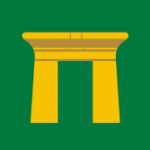
Qena = 'New City''.
''Salzburg is an Austrian city on the border of Germany, with views of the Eastern Alps. The city is divided by the Salzach River, with medieval and baroque buildings of the pedestrian Altstadt (Old City) on its left bank, facing the 19th-century Neustadt (New City) on its right. The Altstadt birthplace of famed composer Mozart is preserved as a museum displaying his childhood instruments.''
"The 'good life' is a process. The good life is a process, not a state of being. It is a direction, not a destination. The good life constitutes a direction selected by the total organism, when there is psychological freedom to move in ANY direction." [Taken from Part three, 'on matters of existence' from the book, 'Striking Thoughts' { Bruce Lee's Wisdom for Daily Living} by J. Little.
Analogy of same?..."When Dr Ian Jones asked me how i dealt with the visions without the aid of medication, i replied: ' I just fire bullets of logic at them as they come zooming towards me and give them no credence; then i flick them away as if they are annoying, buzzing mosquito's." [Extract from the book by Q. S. Lam].
Bees in relation to gnats {'flies'?} in order to define something - in order to understand something - relative to the bigger picture? Knowledge after all is power. True, untrue? A help or a hindrance?
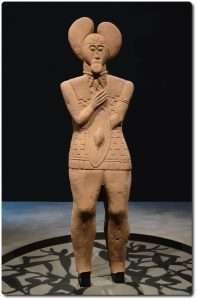
Celtic Warrior {therefore 'fire' link}. Head gear? Kidneys or Beans? Blood/WATER link? Above/below the 'navel'? Recall Celtic rituals with body parts. Foretelling of ones destiny?

'Squash Blossom' and/or Butterfly Whorls.
"I tried to ask him why he liked me, he couldn't give me an answer and then he said, ''Go away Fred, go and fly away like a helicopter." My son paused before continuing, ''Fred is in the forest with his Mummy. His Mummy is good but Fred is bad and he has a baby in his tummy - a baby caterpillar." I told him that Fred had planted a worm in my head, to which my son replied, ''Yes, Fred has planted hundreds of caterpillars in my head, too...We need to lock him up in a cupboard with a key and make him very small. Look, this is how small we have to make him,'' he said making a tiny triangle with his hand. ''Go and make caterpillars on the sun Fred and not in my head or Mummies head." My son doesn't appear to be afraid of Fred. He's even suggested that we eat Fred in one of my tofu noodle soups. I said i would prefer to eat him on toast with lots of butter, but that actually it would be better not to eat Fred at all because he probably wouldn't taste very nice. Is talking about Fred the right approach? Is it even age appropriate? I don't know, but what is the alternative - to buckle under the strain of Fred's rants? I have tried to explain very complicated mental health issues in an imaginative, simple and honest way that my son will understand. He has even suggested hitting Fred in the face with his neon green ball until he's dead. I told him that was not the way and that maybe we had to make Fred our friend, since i don't think he had many. My son looked at me and i could tell he almost felt sorry for Fred. Could i keep him at bay through these stories? Just about. If i continued like this, Fred might just put down his sticks, and stop pummelling the walls of my mind." The author ,i.e.,Q. S. Lam, then writes a poem entitled...'Is There Light'...
According to this subject there is, i.e.,..
''The ancient Greek word psyche means ''butterfly'', a creature who undergoes a long period of metamorphosis....before transformation or awakening is possible...'' [Page 152 ''The Search For The Beloved' / J. Houston].

Whats the common factor besides the lotus?
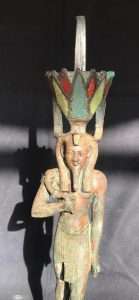
Right arm/hand? Hands in relation to feet. One a beginning. The other an ending/completion of {say} a cycle. Which and why?
And/or: ''The Cosmic butterfly represents that part of your cosmic intelligence that has lived through and has become the story of a FULL complete CYCLE of metamorphic transformation.....It weaves the future patterns in your life as well as the world around you {karma i.e., 'like attracts like'?}, as it flutters from flower to flower and from dream to local reality and all thats inbetween {unconscious - conscious link}.....It prepares the birth of our new era....It is the source archetype of the....'' [Page 196 ''The Quest of the Rose: Cosmic keys of our Future Becoming' / A. Smitsman and J. Houston. Brackets - this readers].
''The mind is more like a butterfly, to be caught in a gossamer web {'net'?} rather than a hard steel trap.'' [Page 130 'The Path Through the Labyrinth' / M. Green].

Eight link? Flower pattern?
A working example: ''Located on the western base of the Sacramento Mountains in New Mexico, the Three Rivers Petroglyphs site is one of the largest rock art sites in the Southwest. Incidently, this site is located at the same latitude as both Phoenix and the geoglyphs: 33 degrees. The park contains over 20,000 petroglyphs carved atop a ridge by the Mogollon culture between 900 and 1400AD. One of the geometric designs located there is a Maltese cross within a circle surrounded by a ring of seventeen dots. The Hopi are also familiar with this cross, which is represented by two hair discs laid perpendicular to each other. Also known as 'nogla' or ''butterfly whorls'' these items are traditionally worn by maidens.'' [Page 276/7 'The Orion Zone: Ancient Star Cities of the American S/W' / Gary David].
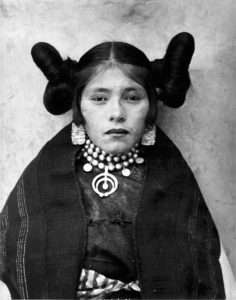
Side note: Ornament attached to pearls. Head and spindle body? Curved arms almost meeting each other - like a Celtic torc. Upside down?
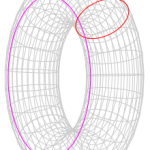
Horn or spindle Torus? Side note: Torus type ornaments found in a cave 90,000 years ago. Denisovans? {'Ancient Unexplained Files' / DiscHistory Channel/ 27.8.21].
Refresher: "It seems unlikely that anyone in our day would be able to explain the deeper meaning of 17, and yet this number was quite important in the ancient Near East. The local god of Urartu, the area around Mount Ararat, received a seventeen fold 'sacrifice' {body parts?}, and perhaps 17 spread out from there into adjacent countries. In the Bible it is connected to the flood, which began on the seventeenth day of the 2nd month and lasted till the seventeenth day of the 7th month. At that point, Noah had reached Mount Ararat...One has speculated that 17 is connected to the ark, or with floating on waters {'floating islands'?} - in this connection one may think of Odysseus, who floated on a raft for seventeen days after leaving Calypso. In Egypt, on the 17th day of a month, Osiris is cast into the river in Typhon's coffin. There is also the Greek tradition ....to cut timber for boats on the 17th day of the month. [Chapter entitled: 'Number of Conquest' {17} from the book 'The Mystery of Numbers' / A. Schimmel].
''Onehundred and fiftythree'' to enlarge.
And/or: ''We meet Athena in the opening episode of The Odyssey - the goddess and namesake of all this wonder, the initiator of all the action - as she argues the case for Odysseus before her father Zeus and the Olympian gods...She reminds them that it has been almost twenty years since he has seen his home. The first ten spent in Troy. Then weeks spent wandering from one harrowing {Hogs back?} adventure to another. Finally ending up imprisoned in the middle of the sea, the kept man of Calypso...The great stuck place of his life. The actual famed 'adventure' took only a few weeks - apart from the year spent with Circe, the rest of the time he was stuck in the middle of nowhere....The long resting place to the soul's development...a place to rest and vegetate.'' [Page 62/245 'The Hero and the Goddess: The Odyssey as Pathway to Personal Transformation' / J. Houston].
''Seven'' and Aberfoyle to enlarge.

Cherry Street Inn {Groundhog Day}.
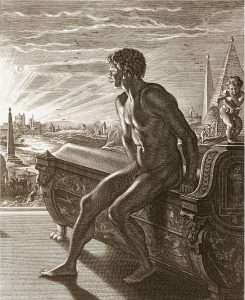 Side note: Akhenaten 'died' after being on his 'throne' for 17 years. No one knows what happens to Nefertiti.
Side note: Akhenaten 'died' after being on his 'throne' for 17 years. No one knows what happens to Nefertiti.
Spirit / Soul?
And/or: "So, you you're stuck with him and I'm stuck with me {Leonard}.
{Ria}: I'M not stuck with him!
Oh Sorry. I thought you said somethng about glue on the inside of your wedding ring." [Wendy Craig: 'Butterflies' ].
From a different perspective: ''In 1717 a legendary {but unproven} ceremony is said to have taken place in London, forming a new order of Druids....'' [Page 61 'Idiots Guide to Paganism].
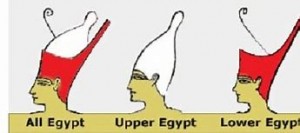
The probosis of the butterfly? Try ''honey''.

The Great Waffler? waffle uk/ˈwɒf.əl/ us/ˈwɑː.fəl/verb [ I ] to talk or write a lot without giving any useful information or any clear answers. {2} to be unable to make a decision.
Go to top of page Go to bottom of page
As the author herself says in the final sentence of the book..."She's in there somewhere, waiting patiently inside to re-emerge whole again."
''Patience is the mother of will. If you have no mother, how can you be born?" Gurdjieff.
'Metamorphoses' by Ovid.
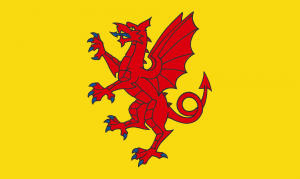
"Arthur of the Dragons! came a voice from overhead." Question. 'Mother of Dragons'? Spirit/Soul? Which and why? Toes/tongue = Green language? In ascent?
 "This little man, the size of a thumb, is the 'Ishon' of the Hermetic and Old Testament texts. The man the size of a thumb, resides in the midst, within the self, of the past and future....the Tom thumb of fairy tales, this inner dwarf or 'Ishon' which is prepared to 'reveal' things that are normally hidden......is meant to symbolize an esoteric aspect of Spiritual development....the fool has to learn from the 'smaller' inner man....It is worth bearing in mind that, in materialistic terms, the inner man must be smaller than the outer man. This inner man is linked with the spine, which in itself is linked with the staff...This symbolism applies to the staves in the hands of the Tarot Fool: one staff is the spine of the outer fool, the other that of the inner fool." [Bibliographic notes to chapters 4, and 7, of the book 'The Zelator']. Agree or disagree?
"This little man, the size of a thumb, is the 'Ishon' of the Hermetic and Old Testament texts. The man the size of a thumb, resides in the midst, within the self, of the past and future....the Tom thumb of fairy tales, this inner dwarf or 'Ishon' which is prepared to 'reveal' things that are normally hidden......is meant to symbolize an esoteric aspect of Spiritual development....the fool has to learn from the 'smaller' inner man....It is worth bearing in mind that, in materialistic terms, the inner man must be smaller than the outer man. This inner man is linked with the spine, which in itself is linked with the staff...This symbolism applies to the staves in the hands of the Tarot Fool: one staff is the spine of the outer fool, the other that of the inner fool." [Bibliographic notes to chapters 4, and 7, of the book 'The Zelator']. Agree or disagree?
'Swamplands of the Soul: New Life in Dismal Places' by J. Hollis.
"There is a thought, a recurrent fantasy perhaps, that the purpose of life is to achieve happiness. After all, even the Constitution of the United States promises ''life, liberty, and the pursuit of happiness." Who does not long to arrive, some distant day at that sunlit meadow where, untroubled, we may rest easy, abide awhile and be happy? But nature or fate, or the gods, has another thought which keeps interrupting this fantasy. The split, the discrepancy between what we long for and what we suffer as limitation, has haunted the Western imagination...

Memnon.
 ...The litany arising from the gap between hope and experience is endless. Whether to suffer it stoically, react heroically or whine about one's condition seems onerous yet unavoidable choice. But Jungian psychology, and the disciplined practice of personal growth it promotes, offers another perspective based on the assumption that the goal of life is not happiness but meaning....
...The litany arising from the gap between hope and experience is endless. Whether to suffer it stoically, react heroically or whine about one's condition seems onerous yet unavoidable choice. But Jungian psychology, and the disciplined practice of personal growth it promotes, offers another perspective based on the assumption that the goal of life is not happiness but meaning....
....We may well experience moments of happiness, but they are ephemeral and can neither be willed into being nor perpetuated by hope. Rather, Jungian psychology, as well as much of the rich religious and mythological tradition from which it draws many of its insights, avers that it is the swamplands of the soul, the savannas of suffering, that provide the context for the stimulation and the attainment of meaning. As far back as 2500 years ago, Aeschylus observed that the gods have ordained a solemn degree, that through suffering we come to wisdom. Without the suffering, which seems the epiphenomenal requisite for psychological and spiritual maturation, one would remain unconscious, infantile and dependent...
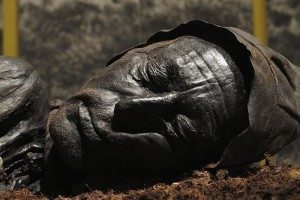
Victim or volunteer {'initiate'?}. ''Meaningful'' ? Sad or glad?

"The statues of Amenhotep III {Memnon} on the Western bank of the Nile {facing east}: 'sitting, as they have for ages, in grand and mournful solemnity'. Believed to be the Pharaoh of Exodus {1500BC}: 'The other statue was thought to be his brother' {his 'weird'?}. The statues and their thrones, BUT NOT their pedestals {'thirteen' feet in height}, were originally hewn out of a single stone." AND/OR: "When all the gods, men, and animals were invited by the divine messenger, Hermes, to attend the wedding of Zeus and Hera, the nymph Chelone alone remained at home, to shew her disregard of the solemnity. But Hermes then descended from Olympus, threw Chelone's house, which stood on the bank of a river, together with the nymph, into the water, and transformed her into a lazy tortoise, who had henceforth to carry her house on her back." [Page 47 'Egypt and Nubia' / D. Roberts, W. Brockedon and G. Croly]. 'Melancholy' to enlarge.
''Marshes'' and ''deserts''?

Happy or Sad?
'Mans Search for Meaning' / Viktor Frankl.
''Fantasy {phantasia} meant a subjective figment of the mind without objective validity.''
'The Forge and the Crucible' by M. Eliade.
Confirmation? by yet another..."Sri Yukteswar's health was excellent; i never saw him unwell. To show respect for a worldly custom he permitted his students, if they so wished, to consult doctors. ''Physicians,'' he said, ''should carry on their work of healing through 'gods' laws as applied to matter.'' But he extolled the superiority of mental therapy, and often repeated: ''Wisdom is the greatest cleanser."... He numbered many doctors among his disciples. ''Those who have studied physiology should go further and investigate the science of the soul," he told them. "A subtle spiritual structure is hidden just behind the bodily mechanism." [Extract from the book 'Autobiography of a Yogi'. Mentioned elsewhere].
Dion Fortune to enlarge.

''I'M just glad he got his flowers while he was alive.'' {BBC NEWS/21.2.22}. R.I.P.
Side note: Besides their resemblance to a turtle’s head, Chelone flowers have a unique botanical feature — a sterile stamen in addition to four fertile ones. The sterile stamen is useful in helping to identify the various Chelone species. For example, it is green in C. glabra, white in C. obliqua, and rose-tipped in C. lyonii.....
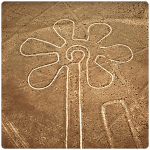 Chelone lyonii is a native perennial wildflower that originally was found in Virginia to Alabama but has been introduced to the Northeast. Loving disturbed sites or along the margins of wetlands, lakes, or rivers, Chelone lyonii prefers moist rich soil sites and benefits from good composted leaf mulch in the garden. It grows in full sun to part shade but needs adequate moisture for full sun situations. It has some susceptibility to mildew if air circulation in the site is low and soil moisture conditions are stressful.
Chelone lyonii is a native perennial wildflower that originally was found in Virginia to Alabama but has been introduced to the Northeast. Loving disturbed sites or along the margins of wetlands, lakes, or rivers, Chelone lyonii prefers moist rich soil sites and benefits from good composted leaf mulch in the garden. It grows in full sun to part shade but needs adequate moisture for full sun situations. It has some susceptibility to mildew if air circulation in the site is low and soil moisture conditions are stressful.
Introduced to the trade by North Creek Nurseries, it was selected for its clean foliage, great growth habit, and deep pink flower coloring. It is wonderful in a rain garden, naturalized moist site planting, perennial border, or as a container plant. Chelone is well-noted for being prime diet fodder for multiple species of Lepidoptera larvae while also being resistant to deer and other mammals due to its bitter foliage."
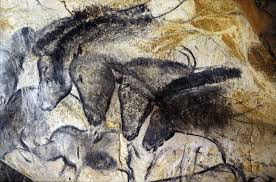

Stable or unstable? American or UNAmerican?
REFRESHER: "If one has the power to endure the way of rebuke with great passion, and if his mind can control its fantasies, then he can ride {his mind} like a horse. He can control it as he desires, spurring it on to go forward, or reigning it to stop where he pleases. At all times his imagination remains subject to his will, not straying from its authority....This is truly a mighty 'warrior'...He is like Uriel, who constantly gazes at 'the light of god', delighted in gods Mysteries." [Page 84, 'Meditation and Kabbalah'].
Try ''deer'' and ''horse'' to take it further towards a MIND SET.
'Mindfulness: A Practical Guide to Finding Peace in a Frantic World' by M. Williams and D. Penman.
Iceni Tribe: The horse people.
''While the meaning of the name Iceni is unknown, it is tempting to see it as derived from a Proto-Celtic adjective cognate with Latin picea 'pine tree,' the Italic tribal name Piceni, English picene, and with the English hydronym Itchen.''

Burkhan Khaldun. Pines?
"Initiates inside and outside the Church create great works of art and architecture to help condition humanity for its future 'evolution.' They also carry enough clues for those who are so minded as to be able to decode them." [Same chapter, same book i.e.,J. Black].
A more {practical?} analogy..."From Hermopolis, city of Hermes {Thoth}, master of Writing, Numbers, Measurement and Time, comes the description of the Nun, the primordial environment, picturing 'its' qualities and characteristics: 'He {the Demiurge} created the 'eight'. He formed its body as that of a sacred child who issues forth from a lotus in the middle of the Nun.' The primordial Eight, as envisaged at Hermopolis {the Ogdoad}, together form, as the text indicates, a single entity. The Nun is envisaged as a swampy mire, a seething primal cradle in which live four couples of serpents and frogs...[Extract from the book 'Egyptian Mysteries' by L. Lamy].
Side note: "The ogdoad is the first cube. It is called 'safety' and 'foundation'. The seed of the ogdoad is the first even number. It is the sum of the monad, triad and tetrad. The sequence from the monad to it adds up to thirtysix, which is the time within which they say: 'seventh month child-ren are formed'....." [Page 188 'Alexandria'. Vol 3. D. Fideler].
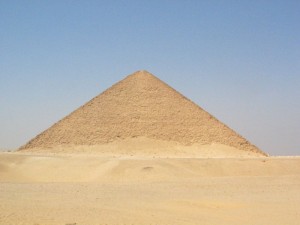
'Red' pyramid - Egypt. 'THIRD' one built. First 'true' pyramid. Same gradient {learning curve?} as the lessor one {slower?} on the 'Bent' pyramid. Step by step increments? Question. Dont we all start off {in haste?} 'quickly' before finding a more suitable rhythm? Representation of. Side note: Recall Herod's red sarcophagus. Try ''fire'' i.e.,what it implies in the overall 'scheme of things'. Understanding that defines the concept of the Benben stone - the same one that the author of 'Imhotep the African' attempts to explain, i.e., the 'tip' of a PYR-ramid. Try 'tip' / 'Pyr' / 'Atum' / 'mound' i.e.,balance between wet/dry etc. to 'see' what that author cannot. To 'see' into that ancient mindset.
Question. Can you by now put those keys together to define something while recalling what symbol represents that stage of {a learning process?} that results in ''wisdom'' - and WHY?
N.B. Hermes = Transition {stretching?} ones boundaries. Thoth = God of balance/equilibrium. Both attributes {aspects} intermix to define an end result, {mechanics of}. The process {qualities?} needed to achieve that end. Representational of. Question. Agree or disagree?

'Line of sight'?
A work in progress {the very first one?}: "When seen in the evening sky, Mercury is represented by Hermes, the swift messenger of the gods and the guardian of travellers. It is in the latter role that he has his moment of prominence in Book 24 of the Iliad. Hector has been killed...Traditionally, Hermes is also a thief and trickster - attributes recalled by Homer when the god is called upon in vain to steal Hector's body from Achilles so that it can be returned to his father, King Priam...The god can only take him part of the way...The sequence is: Priam leaves Ursa Major, and is taken across the zodiac by Hermes {Mercury} before meeting Achilles in Canis Major. After paying a ransom for Hectors body, Priam is urged to return home by Hermes while it is still 'dark'.
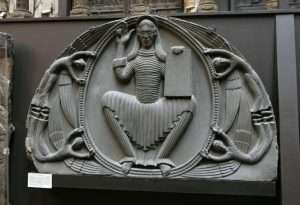
Any thumbs? Water symbol in the form of a 'dress'?
The first hurdle Priam meets on his outward journey is the zodiac, where Hermes is instructed by Zeus, 'It is you who are most suited to escort men on their way - go and so conduct Priam to the ships of the Greeks'. As a planet, Hermes cannot move outside the boundaries of the zodiac, and after crossing the zodiacal band {'girdle'?} he takes his leave of Priam when he says: 'I will now leave you, and will not enter into the presence of Achilles'. Although it would not be possible to see Mercury both in the evening and the morning in the course of one night, Homer seems to reinforce the position of the planet in the zodiac when Priam, returning home, is once again met by Hermes and is escorted to the topmost boundary of the zodiac, from where Priam has to continue his journey without the gods help." ['Homer's Secret Iliad'].
What about the female aspect? 'AFAR'?
Planets {versus?} constellations as a means...?
The real question however remains the same. Why go to ALL this fcking effort? {Excuse the Greek}.
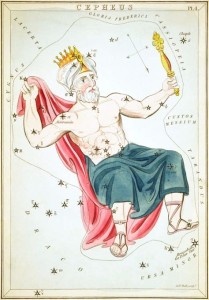
Cepheus = the 'beginning of a journey' ? Question. Large or small? Recall Orion. All as a means...?

"A broadly accurate guide or principle, based on practice rather than theory." 'Wide/narrow' to enlarge.
Refresher..."This little man, the size of a thumb, is the 'Ishon' of the Hermetic and Old Testament texts. The man the size of a thumb, resides in the midst, within the self, of the past and future....the Tom thumb of fairy tales, this inner dwarf or 'Ishon' which is prepared to 'reveal' things that are normally hidden......is meant to symbolize an esoteric aspect of Spiritual development....the fool has to learn from the 'smaller' inner man....It is worth bearing in mind that, in materialistic terms, the inner man must be smaller than the outer man. This inner man is linked with the spine, which in itself is linked with the staff {turquoise?}...This symbolism applies to the staves in the hands of the Tarot Fool: one staff is the spine of the outer fool, the other that of the inner fool." [Bibliographic notes to chapters 4, and 7, of the book 'The Zelator'].
''Mountain low, Valley high.''
Side note: Small 'headless' Sphinx found under the very large one {also headless} at Gebel el Silsila.
Flat headed? Erect or oblique?
"To everything there is a season, and a time to every purpose under the heaven."
Refresher:...''the Chair of Lethe {of forgetfulness}, : ''that welds itself to the flesh, from which one cannot rise."
Side note: ''Lethe'' a link to ''zero'' and ''negation''. {wiki}.
"The Freemasonic scholar Albert Pike called the picture of Solomons Temple...'an abridged image of the cosmos'. Think on it, relative to the ''individual'' i.e.,.....
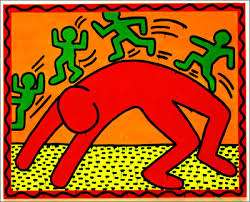

Found with the Qurna Queen and child: ''under a rocky outcrop {'overhang'?} on the north side of the valley at Thebes.'' Something 'fired' contained within something 'weaved'. Lozenge shape?
"Ancient Greek philosophers among them Heron of Alexandria, who studied with Egypt's priests in the 2nd century, suggested that the soul possessed an innate universal knowledge that exterior objects awakened through the senses. This concept resembles Jung's idea of a collective unconscious that is accessed through sensory experience and that speaks primary through the emotions. The ancient Greek root word for 'symbol' meant ''something that is thrown across,'' like a bridge between sacred and profane worlds, or between inner and outer realities. Symbols provides 'nets' of meaning [omphalos + '153' link?]. The mind synthesizes impressions gleaned from an image as the warp threads and connects them by emotional responses as the weft threads. Based in intuition, the symbol erects a scaffolding {'stack'} of related impressions, implied ideas, analogies and resonances. Within this synthesis, we grasp the whole, simultaneous existence of all things in motion, appearing together {'gathering'?} for a brief, but eternal and absolute moment." [ Part three entitled 'The Light Within' from the book ' Dreams of Isis' by N. Ellis]. Try ''pattern''.
''Grasp'' in relation to 'Manifested'.
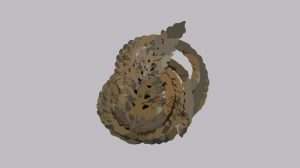
Found on Oak island. Created from 'two' strands - '13' branches - within the pattern of a 'triple spiral'. Question. A feather in the CAP?
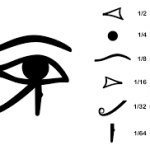
Use the minds eye to 'see' something!
A working {practical?} example..."Before we arrived, not even knowing why we were coming to Hovenweep {remember, we originally intended to build the medicine wheel at Chaco Canyon}, Mary had written a poem in honor of our journey. She says that it came to her all in one piece, and she simply wrote it down. As we gathered together in a giant kiva-unroofed, but so deep that we had to climb down into it by ladder - she read us this poem: 'The Weaving' - ''We stand here, surrounded by the sacred mountains, at the sipapu, where our world began. We come from the four corners of this earth...We are here to create a weaving of a new reality. In any weaving, beauty is created by the warp, weft, and the pattern. We bring: for the foundation, the warp thread...These we braid together and string on our loom to form the warp, the shape of our weaving. Onto this we weave the weft of our daily journey, the thread of beauty, spun, one moment at a time, with each step of integrity, as our actions spin time into history. And the pattern? The pattern that will call the rest of the human race into understanding... " [From the book 'Serpent of Light Beyond 2012' / D. Melchizedek]. Try ''pattern'' and/or ''net'' in relation to defining something {logos?}.
''Kun'' to enlarge.
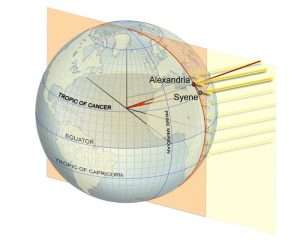 Understanding the above gives a closer assessment of such sacred objects as the Inca Khipus. In other words even though no absolute answer has yet been forthcoming as to the meaning of such artifacts - THIS SUBJECT - will get as close as one can to that eventual answer. Try ''weaving'' and/or ''knot'' symbolism - as a start point.
Understanding the above gives a closer assessment of such sacred objects as the Inca Khipus. In other words even though no absolute answer has yet been forthcoming as to the meaning of such artifacts - THIS SUBJECT - will get as close as one can to that eventual answer. Try ''weaving'' and/or ''knot'' symbolism - as a start point.

''The Great Turning at Hand''. Question. The next 'Great' cosmic event = Supernova or comet explosion? AND/OR: Lunar OR Solar eclipse? Define subject material to narrow down those POSSIBILITIES. Enlarged throughout. Try Antares.
"Nothing is known about the Chacoan culture {i.e., S/W America. Corner of.} because no written texts have been discovered." Quote by B. Cox ['Wonders of the Universe/ Gravity' BBC4]. A stone sculpture/painting discovered on the 'lip' of an overhang. At 'right angles' to the 'vertical' cliff 'face'. 'Three' {'pyr' link} symbols = hand {left}, crescent moon {dark; therefore link to 'transcendent third'} and star {clockwise rotation?}. All in relation to an event that took place in 1054 {supernova}. That external event could indeed be its origin, but its true INTENT is that inner one. Something external used to REPRESENT something INTERNAL. S/W in relation to N/W {star}. N/E {naked hand} its start point. Mid-point {dark aspect of moon} as a reflection of something. Something UNknown {dark} becoming known {transcendent third}. Anything? Among others try ''overhang'' and/or ''right angles'' and/or ''horseshoe'' {i.e.,the 'opening' of the 'crescent' moon is towards the observer, i.e.,relative to a S/W position}.

Nice bit of blue? Amenhotep to enlarge.
"When the individual is born again, the blue star is born with it. When the star exploded, my cycle of coming and going had ended." Coincidence or a meaningful one? Enlarged elsewhere.
First Witness?
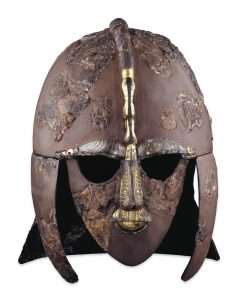
Meeting place {'crossroads'?} of N-S = 'middle' of the forehead. E-W eye line represented with twin BOARS. Melancholy or Joy?
A working example {i.e.,in the personal sense of the word} yet those core 'elements' {universal ones} infer same. Can you 'see' it?: "I had expected him to be intense, yet self assured - serene in his spiritual insight; yet his face seemed to be restless, even tortured. Electric forces seemed to ray from the hair upon his face. His sparse moustache seemed to press down into his jaw, drawing his mouth into a thin and compact line, as though life experiences had pushed him into a severity at variance with his spiritual knowledge. Even his intense intellectual quality, so clearly expressed in the high forehead, seemed to be pulling him asunder: his mind was lifted upwards by the shock of wild hair, yet drawn earthwards by the weight of his heavy dark eyebrows..." ['The Zelator'. Emphasis, this readers].
Try ''hair'' as a means…..?
And/or recall the sharp jaw lines of both Akhenaten and 'wife'.
'Fat of the Land'?

Venus: Side note: Everyone would call him Taliesin ('radiant brow') the chief of poets. Dr. MacCulloch suggests that there was an earlier Taliesin than the sixth-century bard, and that he was a Celtic Apollo; which would account for the 'radiant brow' and for his appearance among other faded gods and heroes at King Arthur's Court in the Romance of Kilhwch and Olwen. (Apollo himself had once been a dweller in the sea—the dolphin was sacred to him—and oddly enough John the Baptist seems to have been identified by early Christian syncretists in Egypt with the Chaldean god Oannes who according to Berossus used to appear at long intervals in the Persian Gulf, disguised as the merman Odacon, and renew his original revelation to the faithful. The case is further complicated by the myth ofHuan, the Flower-goddess Blodeuwedd's victim, who was really the god Llew Llaw, another 'sea dweller'.)
And/or: I use the word 'myth' in its strict sense of 'verbal iconograph' without the derogatory sense of'absurd fiction' that it has acquired—yet remain constant in general outline. Perfect faithfulness to the Theme affects the reader of a poem with a strange feeling, between delight and horror, of which the purely physical effect is that the hair literally stands on end. A. E.

Apollo: Curl or knot?
Housman's test of a true poem was simple and practical: does it make the hairs of one's chin bristle if one repeats it silently while shaving? But he did not explain why the hairs should bristle.
The smell or taste of wisdom?
Intuitive?
Box-brooch to enlarge.
A work in progress: ''The HELMET very scandinavian . Must have made quite an impression on the battlefield. Here on the front we have two dragons....Over the eyebrows two boars...very potent symbols to the Anglo-Saxons. Let me explain why. In the pagan beliefs of the early Anglo-Saxons the boar symbolised fertility. The goddess Freya rode one into battle - that is when she wasn't riding her cat-drawn chariot {3x3 and/or 'nine lives'?}. This was one of a few times in history when saying that someone was a boar in bed - was actually a compliment.'' [Dr Nina Ramirez 'Treasures of the Anglo-Saxons' /BBC4/2010].
Question. What do you think?
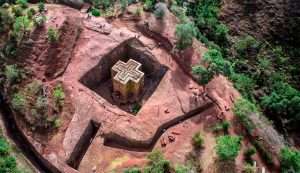
The Church of Saint George was carved downwards from a type of volcanic tuff. This is the sole architectural material that was used in the structure. It has been dated to the late 12th or early 13th century AD, and thought to have been constructed during the reign of King Gebre Mesqel Lalibela, of the late Zagwe dynasty.
'Sweat of the Brow'?
Salt?
All saints revile her, and all sober men Ruled by the God Apollo's golden mean— In scorn of which I sailed to find her In distant regions likeliest to hold her Whom I desired above all things to know, Sister of the mirage and echo. It was a virtue not to stay, To go my headstrong and heroic way Seeking her out at the volcano's head. Among pack ice, or where the track had faded Beyond the cavern of the seven sleepers: Whose broad high brow was white as any leper Whose eyes were blue, with rowan-berry lips. With hair curled honey-coloured to white hips. Green sap of Spring in the young wood a-stir Will celebrate the Mountain Mother, And every song-bird shout awhile for her; But I am gifted, even in November Rawest ofseasons, with so huge a sense Of her nakedly worn magnificence I forget cruelty and past betrayal. Careless of where the next bright bolt may fall. {In dedication to the book 'The White Goddess' / R. Graves}.
'The Echo Maker'.

''Transforming fingers'' ? In 'profile' rather than ''face on'' ? {i.e., as with the Easter Island figures}.
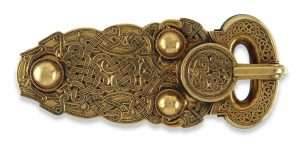
Anglo-Saxon Belt buckle.Orion?
"The Beast is like our ego and egocentric interests. It represents the work of 'self' alone, without 'gods' influence. The mark is erased when the work of our hands and thoughts of our minds are cooperating with god, rather than simply being self driven. The Beast is our lower nature at our most selfish, self-centered, self glorifying point of existence." ['Wisdom of the 4th Way' / Mentioned elsewhere]. Continued elsewhere.
''Birds and boars were not the only animals depicted on the Sutton-Hoe treasures - there were also snakes - lots of them...Why the fascination with snakes?
Get into that MIND SET ENLARGED THROUGHOUT BEYOND:

Hero?
''The snakes are world serpents in Norse mythology. Legend has it he was the son of another god who Odin threw into the sea where he grew into a serpent. A serpent large enough to surround the earth and grab his own tail. It was literally the worm that turned the world. They believed that if the worm let go of its tail then it would be the end of the world.''
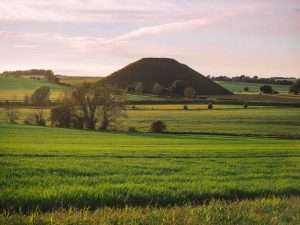
Silbury Hill: 'Truncated'?
And/or: It is still quite common to come across curiously striated hills, roughly conical in shape but with flattened tops, and to find in connection with them an accompanying folk-tale of the Great Worm which, meeting its fate at the hands of a local Hero or Saint, squeezed the hill in its coils, imprinting the land with the shape of its agony. Here is embodied the story of a great change which overtook the Dragon power and its relationship with mankind.
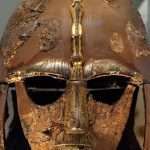
Dragon? Above or below the clouds? Heavy brow?
It may seem a long way from the Dragon priests to the heroes remembered chiefly as slayers of the dragon; yet they are closely related to the pattern of change and decay which overcame the Native Mysteries. Dragonpriest to Dragon-slayer is but a small step when seen in the light of the Christian adoption of ancient sites to build their churches. {'The Western Way' / C+J Matthews}.
Define {'see'} those symbols to understand why no written texts NEEDED to be left behind.
In the 'spiritual' SENSE of the word.
''According to folklore, worms begin to emerge from the earth at the spring equinox.'' ['The Chase'].

Sandels?
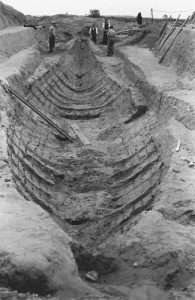
'Eightyeight' feet in length.
"Sutton Hoo derives its name from Old English. Sut combined with tun means the "southern farmstead" or "settlement" and hoh refers to a hill "shaped like a heel spur". The same ending survives in a few other placenames, notably Plymouth Hoe and Fingringhoe. Hoo was recorded in the Domesday Book as Hoi/Hou.
'Hoeing the fields'?
Side note: In the coronation of King Charles III {'Sixth' of the 'Fifth' 2023}...Words such as Kingship, Spurs, Embrace, Servant, Jewelled Sword, ''embroidered gold coat with girdle and belt'' - all used.
Any Ermine?
Continued: ''In Norse mythology, Sleipnir /ˈsleɪpnɪər/ (Old Norse: {ˈslɛipnez̠]; "slippy"[1] or "the slipper") is an eight-legged horse ridden by Odin. Sleipnir is attested in the Poetic Edda, compiled in the 13th century from earlier traditional sources, and the Prose Edda, written in the 13th century by Snorri Sturluson. In both sources, Sleipnir is Odin's steed, is the child of Loki and Svaðilfari, is described as the best of all horses, and is sometimes ridden to the location of Hel. The Prose Edda contains extended information regarding the circumstances of Sleipnir's birth, and details that he is grey in color.''[Wiki].
Hippo/Croc. As another means.
REFRESHER: "I remained obstinately silent.....The dual scales of maya - that balance every joy with a grief! My young heart {artichoke?} was not yet malleable to the transforming fingers of my guru." [Extract from the book on Paramahansa Yogananda. Enlarged elsewhere].

White 'crown' of Upper Egypt. Bulb?

Whats the common factor?
And/or: ''For our next course, i offer the very essence of maturity, a stuffed artichoke, prepared in a way i was taught by my Sicilian grandmother....the great bulb of life. It is prickly on the outside, a fortress of walls within walls, yet within contains both a culture and a psychology.'' ['Feast of Maturity' within the book 'A Mythic Life' Page 292].
Demeter?
From a different perspective: ''Legend says Cuthbert had 'three' onions in his hand when close to dying.'' ['Walking Through History: Northumbria'].
And/or: ''Onion is the Latin for large pearl.'' ['The Chase' / 2018].
Refresher: ''St Cuthbert died alone in his remote refuge on the Farne Islands but his relics were buried at Lindisfarne...He became a medieval cult figure inspiring pilgrims from all over britain, including Alfred the Great, who claimed to have been inspired to unite Britain by a dream of the saint.'' [Page 94 'Readers Digest' / July 2022].
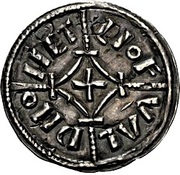
lozenge?
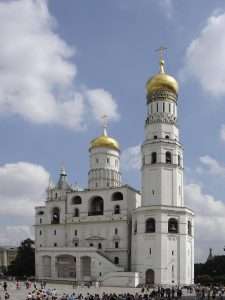
Remedy for a nose bleed?
"Nature is a net of correspondence to be deciphered and integrated into a holistic {whole?} worldview." [extract from the book 'The Magister'. Parenthesis, this readers].
N.B. The root of the word ''holy'' = whole i.e.,a reunion of the ''whole?''
... ''eternal and absolute moment,'' what T. S. Eliot defines as a 'timeless moment' and others as a eureka moment. Question. What symbol is used to define that 'action of the mind,' and why? Question two. Why should it be necessary to explain it at all?
"The no-mans land between Physics and the psychology of the Unconscious [is] the most fascinating yet the darkest hunting ground of our times." Carl Jung.
Refresher: King Aha - the very first of Egypt. Predates all others. Coincidence or a meaningful one?
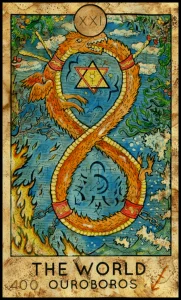
Uuroboros: Chains below. Tree ties above. Inner/outer. 'Orange'?
Side note: King Ka and THE ''Scorpion King'' and Narmer all identified around same time. One relates more to Abydos the other Thebes/Karnac. One before that bend in a river the other after it. Two of those names relate to ONE individual, i.e., nebty and/or Horus name. In other words Someone's NEW NAME.

Sense of smell no longer needed? How about intuition?
Step Pyramid/Meidum/Bent Pyramid/Red Pyramid/ Giza {three] Pyramids. Eighth = Djedefre's, i, e., N/W of ALL those monuments - the HIGHEST spot in Egypt.
Octave?
Question. Where would that second beginning start {of a 'higher' level}?
Orion? i.e., something ''under his belt''?
Upside down?
Question 2. Of those 'three' which was known as the most benign?
"Psychology and esotericism set out to explore the darkness outside of our knowledge, whether it be dwelling in the 'unconscious' or the 'astral', the mundus imaginalis, or the dark side of the Tree of Life." [Extract from the book 'The Magister']. Define ''astral'' before those first impressions define something else. Link that answer up to that universal framework.
OR WITHIN A LANDSCAPE?
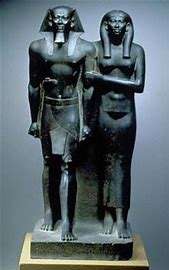 "Let him who seeks, continue seeking until he finds. When he finds he will become troubled. When he becomes troubled he will be astonished, and he will rule over all." [ The 'Nazarene' from, The Gospel of Thomas].
"Let him who seeks, continue seeking until he finds. When he finds he will become troubled. When he becomes troubled he will be astonished, and he will rule over all." [ The 'Nazarene' from, The Gospel of Thomas].
"...the 'nails' of objectivity - which give conscience to thought."
The symbol of which is the Crown of Thorns, i.e.,"The 'thorns' of the crown center function as the 'nails' of objectivity..." [Taken from 'letter 5' from within the book by Tomberg].
Before those first impressions take hold; remember that Christ himself also understood the same subject by way of - the same method?
THEREFORE A UNIVERSAL 'MIND SET' AND NOT A SINGULAR ONE?
"In his right hand he held seven stars, and from his mouth came a sharp, two-edged sword, and his face was like the sun shining with full force. When i saw him, i fell at his feet as though dead. But he placed his right hand on me, saying: 'Do not be afraid, i am the first and last, and the living one. I was dead, and see, i am alive for ever and ever; and i have the keys of Death and of Hades..." [Rev. 1:16-18. Taken from the book 'Wisdom of the 4th Way'].
Recall what 'Revelation' implies {elsewhere} - in relation to such {archetypes?} as say - Hades [Part 1].
Question. Full circle?
"What is a symbol anyway? In effect, it is the good old ''outward sign of an inward grace,'' or a practical link between objective and subjective existence. It is a body containing a soul, matter holding a meaning, a focus of force, a condenser of consciousness, or a ''thought tank." Anything and everything can be a symbol. Whatsoever connects consciousness, and life together from one level to another, or even to different points on the same level is a symbol. Figures, letters, words and ideographs are very good examples of symbols, since these join thinking with living." [ Chapter 3, of the book by William Gray]. Try ''fertiliz{s}ation'' or ''crystalliz{s}ation''.
Understanding that framework in relation to the ''divine bit'' gives a deeper meaning to those words [ intent of] - highlighted.
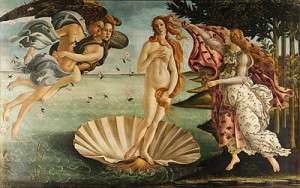 'The Birth of Venus' by Botticelli. 'The Primavera' [ also known as ''Allegory of Spring''], painted by same, of which has been said....."One of the most popular paintings in Western art"..........."One of the most written about, and controversial paintings in the world." [ Wikipedia ].
'The Birth of Venus' by Botticelli. 'The Primavera' [ also known as ''Allegory of Spring''], painted by same, of which has been said....."One of the most popular paintings in Western art"..........."One of the most written about, and controversial paintings in the world." [ Wikipedia ].
To understand their true meaning, define those KEYS. As an example... what can sometimes be found within a Scallop shell. Put that answer in the search box.
''Carapace.''
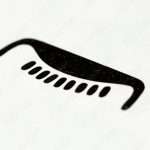
Egyptian Nebu symbol meaning 'gold'.
"The word ' Scallop ' can bring several images to mind: perhaps first as a decorative motif used on the edge of draperies or clothing or jewellery. The shell of the Great Scallop [Pecten maximus. Latin for 'comb'], was a symbol used by artists throughout the centuries. Greek temples and Roman vases were adorned with shell motifs. A famous example from mediaeval times is the Triton Fountain in Rome. The marble fountain, designed by Bernini in 1642, shows Triton, son of the sea god Poseidon, perched on a large, open scallop shell, supported by two dolphins."...........
Side step: Hanumān reassures Sītā, giving Rāma's signet ring as a sign that Rāma is still alive. He offers to carry Sītā back to Rāma; however, she refuses and says that it is not the dharma, stating that Ramāyaṇa will not have significance if Hanumān carries her to Rāma – "When Rāma was not there Rāvaṇa carried Sītā forcibly and when Rāvaṇa was not there, Hanumān carried Sītā back to Rama." She says that Rāma himself must come and avenge the insult of her abduction. She gives Hanumān her comb as a token to prove that she is still alive.
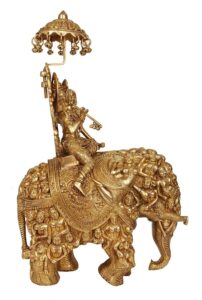

Three and four? Wide or long?
The name Rāmāyaṇa is composed of two words, Rāma and ayaṇa. Rāma, the name of the main figure of the epic, has two contextual meanings. In the Atharvaveda, it means 'dark, dark-coloured or black' and is related to the word rātri which means 'darkness or stillness of night'. The other meaning, which can be found in the Mahabharata, is 'pleasing, pleasant, charming, lovely, beautiful'.[12][13] The word ayana means travel or journey. Thus, Rāmāyaṇa means "Rama's journey" with ayana altered to yaṇa (due to the amalgamation of "a" in Rama and the "a" in ayana, as per the Sanskrit grammar rule of internal sandhi).[14][15]
A working example: "At Udal {Island on West Orkneys} the largest extensive collection found of Viking combs in the UK: "Interpretation, still a work in progress....Could be a comb making industry." + Bone needles {made from bird bones}: "Perhaps to fasten his cloak or keep his hair in place." ['Digging For Britain' / S2 EP2].
Brooch?
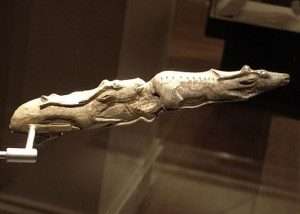
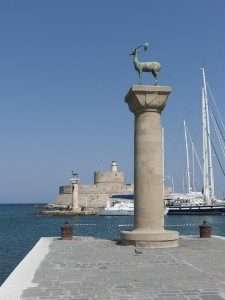
Stag and deer.
And/or: “We know from Norse sagas that hair had a great significance for Vikings as a mark of distinctiveness. They took a great deal of care with their grooming and often carried combs with their swords and knives on their belts. They frequently even took combs to the grave. It is an investigation relying as much on molecular analysis of bone material, work pioneered by Professor Matthew Collins at the University’s BioArCh laboratory, as on traditional archaeological techniques. Dr Ashby's fascination with combs was sparked when, as a Masters student at York, he became involved in a debate about when the Vikings first arrived in Orkney.

Frieze_of_Imdugud_Anzu_grasping_a_pair_of_deer_from_Tell_Al-Ubaid.
Research in the 1990s suggested combs of pre-Viking style were made from reindeer antler, which could only have come from Norway, indicating that contact with Scandinavia must have begun earlier than thought. But by looking at the way combs are manufactured, where they are found and what raw materials they use, we can also reveal many other fascinating details about Norse society and how international links developed. Dr Ashby, together with colleagues from Aarhus University, recently helped establish that Vikings from the arctic north were trading with a western Danish outpost called Ribe by 725. That is seven decades before they appeared in Britain. Combs and associated manufacturing waste from early archaeological deposits in the town's old marketplace were discovered to be made from reindeer antler. As with Orkney, this raw material is not local so it was probably brought from Norway by northern travellers: perhaps the first Vikings."

The taiga or boreal forest has been called the world's largest land biome.[3] In North America, it covers most of inland Canada, Alaska, and parts of the northern contiguous United States.[4] In Eurasia, it covers most of Sweden, Finland, much of Russia from Karelia in the west to the Pacific Ocean (including much of Siberia), much of Norway and Estonia, some of the Scottish Highlands,[citation needed] some lowland/coastal areas of Iceland, and areas of northern Kazakhstan, northern Mongolia, and northern Japan (on the island of Hokkaidō).
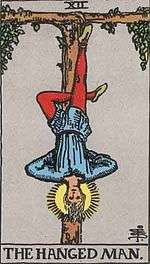 And/or: "Perhaps no one has ever been as excited to see a comb as Danish archaeologist Søren Sindbæk. He and a team of archaeologists from Aarhus University recently unearthed one at a historic Viking town called Ribe in Denmark. Even more exciting, he says, the word "comb" is inscribed on one side while what amounts to the version of "to comb" is on the other. For anyone who's not a career archaeologist or Viking history enthusiast, the find may seem trivial, but it could potentially tell historians about the birth of a Viking alphabet and, as a result, how the historic Viking Age rose to prominence. To understand why the comb is important, you have to rewind to the late 8th century, a critical moment in time for the Vikings. It was the dawn of the Viking Age, which began just before 800 C.E., and language in the region had undergone hundreds of years of evolution.
And/or: "Perhaps no one has ever been as excited to see a comb as Danish archaeologist Søren Sindbæk. He and a team of archaeologists from Aarhus University recently unearthed one at a historic Viking town called Ribe in Denmark. Even more exciting, he says, the word "comb" is inscribed on one side while what amounts to the version of "to comb" is on the other. For anyone who's not a career archaeologist or Viking history enthusiast, the find may seem trivial, but it could potentially tell historians about the birth of a Viking alphabet and, as a result, how the historic Viking Age rose to prominence. To understand why the comb is important, you have to rewind to the late 8th century, a critical moment in time for the Vikings. It was the dawn of the Viking Age, which began just before 800 C.E., and language in the region had undergone hundreds of years of evolution.
Then, suddenly, the alphabet changed. The runes, or letters, used by the group's predecessors became more uniform and modern to match the evolved way of speaking. Tall and vertical, the new lines were easy to carve into wood or stone, says Sindbæk. "We don't know why or when that happened," he says of the new alphabet being used. "It doesn't seem to be gradual." Meaning the new alphabet was likely created by one person or one institution and then disseminated. But why, when, and by whom? Archaeologists aren't sure."
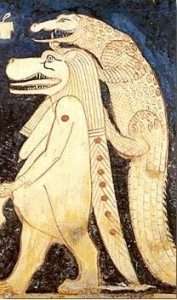
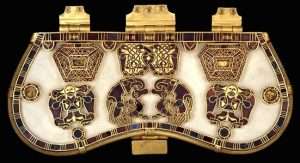
Sutton Hoo purse clasp: Wolfs / eagles and ducks.
Side note: I sent them a picture of the fossil, and the elders came up with two suggestions, Siksagiaq and Tiktaalik. We went with Tiktaalik for its relative ease of pronunciation for the non-Inuktitut-speaking tongue and because of its meaning in Inuktitut: “large freshwater fish.” .....Tiktaalik was the lead story in a number of newspapers the day after the find was announced in April 2006, including above-thefold headlines in such places as The New York Times....In the midst of the press hubbub, my son’s preschool teacher asked me to bring in the fossil and describe it. I dutifully brought a cast of Tiktaalik into Nathaniel’s class, bracing myself for the chaos that would ensue. The twenty four and five-year-olds were surprisingly well behaved as I described how we had worked in the Arctic to find the fossil and showed them the animal’s sharp teeth. Then I asked what they thought it was. Hands shot up. The first child said it was a crocodile or an alligator. When queried why, he said that like a crocodile or lizard it has a flat head with eyes on top. Big teeth, too. Other children started to voice their dissent. Choosing the raised hand of one of these kids, I heard: No, no, it isn’t a crocodile, it is a fish, because it has scales and fins. Yet another child shouted, “Maybe it is both.” Tiktaalik' s message is so straightforward even preschoolers can see it. ['Your Inner Fish' / N. Shubin].


Flat head?
Continued: ''Erasmus Darwin {Grandfather to Charles Darwin} who lived in the market town of Lichfield for twentyfive years - his work output was prolific. As well as being a doctor and inventor, he was also an active poet, geologist and botanist. Inventor of the 'differential steering' which Ford and the car industry used right up to the 1940's. A good family man with eighteen kids. Died in 1802. Charles Darwin born in Shrewsbury seven years later. Charles Darwin did a lot of his fossil hunting in the Shrewsbury area which later led to his formulation on ideas about evolution. BUT it was Erasmus who had the ideas on evolution long before his grandson Charles. Erasmus believed that all life originated in the sea - and he had a Coat of Arms which had three scallop shells with a Latin motto which translated: 'Everything from shells'....'' ['Jay Blades: The Midlands Through Time' / S1 EP1 / CH 5].
'Carapace'.
Side note: In the Montelirio tholos and Ivory Lady graves - several hundred thousand beads made up their burial garments - made from marine shells such as scallops. ['Archaeology' / May-June 2024].
Continued: ''Darwin had been a Freemason throughout his life, in the Time Immemorial Lodge of Cannongate Kilwinning, No. 2, of Scotland. Later on, Sir Francis Darwin, one of his sons, was made a Mason in Tyrian Lodge, No. 253, at Derby, in 1807 or 1808. His son Reginald was made a Mason in Tyrian Lodge in 1804. Charles Darwin's name does not appear on the rolls of the Lodge but it is very possible that he, like Francis, was a Mason, as he held many Masonic beliefs such as Deism throughout his life.''
Mind set?
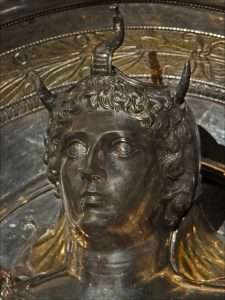
Wearing the elephant scalp.
Tyrian purple (Ancient Greek: πορφύρα porphúra; Latin: purpura), also known as royal purple, imperial purple, or imperial dye, is a reddish-purple natural dye. The name Tyrian refers to Tyre, Lebanon, once Phoenicia. It is secreted by several species of predatory sea snails in the family Muricidae, rock snails originally known by the name Murex (Bolinus brandaris, Hexaplex trunculus and Stramonita haemastoma). In ancient times, extracting this dye involved tens of thousands of snails and substantial labour, and as a result, the dye was highly valued. The colored compound is 6,6'-dibromoindigo.
Cleopatra Selene II.
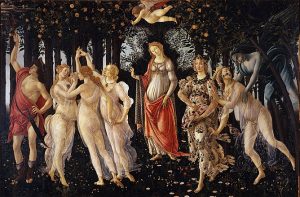
Inner = female aspect. Outer = male aspect {younger/elder?}. 'In all its innocence and finery'. Picking apples?
Side note: "Arachne was a maiden who became famous throughout Greece, though she was neither wellborn nor beautiful and came from no great city. She lived in an obscure little village, and her father was a humble dyer of wool. In this he was very skillful, producing many varied shades, while above all he was famous for the clear, bright scarlet which is made from shellfish, and which was the most glorious of all the colors used in ancient Greece.
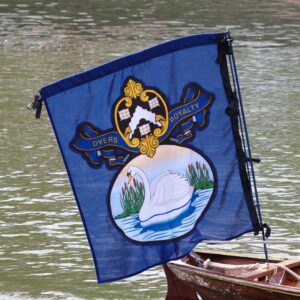
Dyers' Company flag during Swan Upping
Even more skillful than her father was Arachne. It was her task to spin the feecywool into a fine, soft thread and to weave it into cloth on the high-standing loom within the cottage. Arachne was small and pale from much working. Her eyes were light and her hair was a dusty brown, yet she was quick and graceful, and her fingers, roughened as they were, went so fast that it was hard to follow their flickering movements. So soft and even was her thread, so fine her cloth, so gorgeous her embroidery, that soon her products were known all over Greece. No one had ever seen the like of them before. At last Arachne’s fame became so great that people used to come from far and wide to watch her working. Even the graceful nymphs would steal in from stream or forest and peep shyly through the dark doorway, watching in wonder the white arms of Arachne as she stood at the loom and threw the shuttle from hand to hand between the hanging threads, or drew out the long wool, fine as a hair, from the distaff as she sat spinning. “Surely Athena herself must have taught her,” people wouldmurmur to one another. “Who else could know the secret of such marvelous skill?"

'fire' shape?
Continued: From a poem by Q. S. Lam entitled: 'A small Cloud'..."A small cloud has been hanging over her for as long as she can remember. Today the tears fell, like slender rivers; the mask slipping off and fell to the floor. There she sat in the middle of the ocean, the dolphins were singing and she didn't sing back. She threw small daggers at them. A little dolphin winked and squeaked. Opening her eyes, she wasn't so alone anymore - perched on a small rock, she stared out at the ocean - kicked down the door of her mind - to take a gentle stroll. What did she see? More closed doors, not a shaving of light, only a small cloud floating stubbornly, and a broken plate - ''Chuck it away'', a distant voice whispered. The landscape on the plate; painted with such care faded now - just an outline: ''Time to paint a new picture'', the voice whispered again: And step into a new landscape with fresh things to discover..." Other examples of same author - elsewhere.
'Cloud of Unknowing' or Cloud of Witnesses?
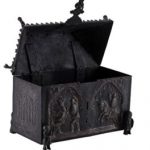
From a different perspective: A templars reliquary box. 'Iron' into 'gold' - as a means....?
N. B. In the golden coffin of Tutankhamun, on top of his abdomen {'belly'?}, a golden handled dagger made of 'iron' from the sky.
Question. What symbol represents the heart?
Higher/lower. Which and why?

Where have you seen it before?
That ''new picture'' could be : "In the fantasy we have taken, it is true that this animus figure cut the woman off from life, behaving in a most orthodox and exemplary manner, so that the natural feminine was quite suffocated, and because everything he told her was in fact material that is stressed again and again in the Logos world, she had no way of escape but through what seemed an unjust sickness. To come again to the feminine realm means to face the animus from a NEW STANDPOINT. St. Augustine said that woman has no soul for she is soul. If a woman has the courage to leave the logos world and seek and give value to the feminine truth, the animus is her guide and friend. Whole in herself, her sons are free, and she passes to them the mystery of the soul that they, too, may face life." ['The Old Wise Woman: A Study of Active Imagination' / R. Weaver]. Hence...
A working example: ''Jesus said, look, i will guide her to make her male, so that she too may become a living spirit resembling you males. For every female who makes herself male will enter the kingdom of heaven.'' ['Gnostic Gospel of Thomas' / verse 114].
114?
A working example: ''What we did is name my tics. Its like an alter-ego thing - so we callled it Frankie...its like somebody else.'' Betsy: 'Britains Tourette's Mystery' / Ch. 4 / 2022].
And/or: ''At the cross of her ''station keeping'' stood the mournful mother weeping - close to Jesus to the last. Briused, derided, cursed, defiled; she beheld her tender child; all the scourges rent.'' [10th 'Station of the Cross' / Magdala / Day 45 'Easter Week' / Kathleen Nichols].

A ''trickster'' type exercise? To get the cognitive faculty in 'motion'? {Static or dynamic}?
"Quintessential saviors of the shipwrecked and drowning, dolphins are the nimble ''sea people'' {Bacchylides of Ceos} who can be relied upon to buoy us up and carry us back to shore, protect us from marine marauders, keep us company in our lone passages through treacherous channels and, if we're lucky, escort our ships out of trouble before they founder in the first place. The reasons for wild dolphins' long history of beneficence towards us is a mystery, but their role as our rescuers from imminent submergence is attested in outer reality as well as in our dreams.  There is something suggestive in the similarity of the Greek words for dolphin {delphis} and for womb or uterus {delphys}. Just as the goddess Aphrodite is born from the surf and is often shown on the back of a dolphin, the streamlined creatures who are so conspicuously attuned with their marine world are emissaries of the womb of the ocean, where all life arose, and to which the whales, rare among mammals, returned to live after having spent some evolutionary time as earth dwellers...Dolphins are sometimes 'trickster' type - as they don't mind playing jokes on..." ['The Book of Symbols' / Taschen. 'Dolphin'].
There is something suggestive in the similarity of the Greek words for dolphin {delphis} and for womb or uterus {delphys}. Just as the goddess Aphrodite is born from the surf and is often shown on the back of a dolphin, the streamlined creatures who are so conspicuously attuned with their marine world are emissaries of the womb of the ocean, where all life arose, and to which the whales, rare among mammals, returned to live after having spent some evolutionary time as earth dwellers...Dolphins are sometimes 'trickster' type - as they don't mind playing jokes on..." ['The Book of Symbols' / Taschen. 'Dolphin'].
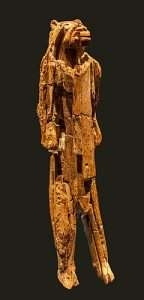
Any sea shells in that cave?
A side step..."Digby, [ Nova Scotia ] is known as the ''Scallop Capital of the World.'' United Empire Loyalists from New York and New England, led by the British Admiral, Sir Robert Digby, settled in Digby in 1783. Situated on the South Western shore of Nova Scotia on the Bay of Fundy, the town was built as a fishing and lumber center. Digby is the gateway to Nova Scotia, for visitors arriving by ferry from Saint John, New Brunswick..." [ www.scalloppearl.ca/scallop.htm].
Question. Oak Island = S/E shore?
 Side note: Not far from the Andalusian coast in southwestern Iberia, an unusual group of women was laid to rest around 4800 years ago. Their communal tomb known as the Montelirio tholos, was built into the east side of a natural hill....Several hundred thousand beads made up their burial garments - made from marine shells such as scallops. ['Archaeology' / May-June 2024].
Side note: Not far from the Andalusian coast in southwestern Iberia, an unusual group of women was laid to rest around 4800 years ago. Their communal tomb known as the Montelirio tholos, was built into the east side of a natural hill....Several hundred thousand beads made up their burial garments - made from marine shells such as scallops. ['Archaeology' / May-June 2024].
She Who Loves Silence?
Continued: ''The flag of the Canadian province of Nova Scotia is inspired by the cross of St. Andrew.'' ['The Chase'].
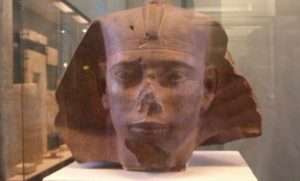
He is the king who introduced the royal title Sa-Rê (meaning “Son of Ra”) and the first to connect his cartouche name with the sun god Ra.
And/or: ''Canada's maritime provinces are New Brunswick, Prince Edward Island and Nova Scotia.''
"Nova Scotia" means "New Scotland" in Latin[11] and is the recognized English-language name for the province. In both French and Scottish Gaelic, the province is directly translated as "New Scotland" (French: Nouvelle-Écosse. Gaelic: Alba Nuadh). In general, Romance and Slavic languages use a direct translation of "New Scotland...."
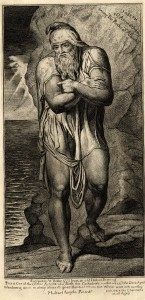
Something west?
Continued: "Scallop pearls or Lion Paw pearls, are extremely rare non - nacreous pearls, produced by a bi-valve mollusk, commonly known as the Scallop, Lions Paw or in Spanish ''Mano de Leon'' [hand of the lion]." [www.internetstones.com/scallop-pearls]."
Side note: The sea hare mollusc.
N.B. Scratch of lion in relation to a cat = more 'intent'. Question. Intent of what? Question 2. Do the 'scratchings' relate to the inner or outer of the shell? What does that imply? If only in relation to a subject.
'Nine' life's?
And/or: '' Cats always land on their feet.''
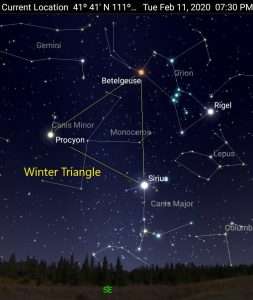
On the Shoulders of giants?
''The cat righting reflex is a cat's innate ability to orient itself as it falls in order to land on its feet. The righting reflex begins to appear at 3–4 weeks of age, and is perfected at 6–9 weeks. Cats are able to do this because they have an unusually flexible backbone and no functional clavicle (collarbone).'' [Wiki].
''Felinity: (usually uncountable, plural felinities) (uncountable) The state of being feline. (countable) Any feline characteristic. She walked with grace and felinity. (humorous) catkind, all cats collectively.''
"Clavicula: This term translates to both “little key” and “collarbone.” It is derived from the Latin word clavis, which means “key.” Interestingly, the collarbone is called the clavicle because its long, slender shape with a slightly bent lateral end resembles a key. Additionally, the bone rotates along its axis like a key when the shoulder is abducted."
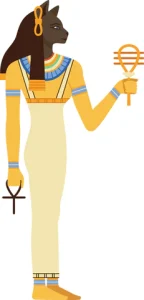
''Inspiration'' to enlarge.
A working example: ''In a more cosmological vein, energy is the expression of spirit opposing form....As the shadow trapped within the person struggles towards consciousness, as the soul trapped within the mortal shell animates the living body, so in a relationship, the individual struggles against the bond of 'marriage'. Energy is the measurable expression of the revolt of spirit against its imprisonment in matter. How that energy manifests, whether constructively or destructively, depends upon how well the opposites within the self have been resolved.'' [Page 88 'Dreams of Isis' / N. Ellis].

Male or female?
Side note: {something hinted at}: "The constellation Felis the Cat - a word which Latin lexicographers now write Faelis, was formed by La Lande {1805}....Its inventor said of it: 'I am very fond of cats. I will let this figure scratch on the chart. The starry sky has worried me quite enough in my life {the study of it?} - so that now I can have my joke with it.'...It has long been discontinued in catalogues and charts. Proctor assigned this title to Canis Minor, but no one has followed him in this change." [Page 221 'Star Names and Their Meaning'].
Question. Joker/trickster {'fool'?} only?
Egyptian Cat goddess?
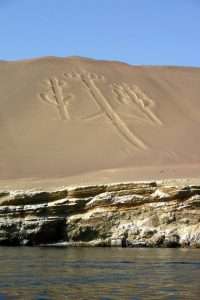
Older than the ''Candelabra''? Question. What would represent 'FIRE'?

The term sliding doors moment became popularised in the late 20th century, meaning seemingly inconsequential moments that nonetheless alter the trajectory of future events. AND/OR: Cupid then reappears with a golden cup. They all drink from it and dance before forming up in procession again, led by the Queen. She carries a small crucifix of pearl, which is imbued with great significance, for it is said that it was ‘this very day wrought between the young King and his Bride’. We say no more than to provide the hint that the crucifix is the paramount symbol of vicarious sacrifice and that pearl represents by its appearance a solidification of the life forces. This is sometimes referred to as the ‘gluten of the white eagle’, more familiar to nineteenth-century psychical research in the form of ‘ectoplasm’, or more subtle etheric forms of it.
''While restoring a viewing area {'horizon'?} overlooking the Nazca Lines {Southern Peru} an undocumented cat geoglyph found - ''crouching on a steep hillside'' ....Based on its resemblance to same, on textiles, ceramics etc., belonging to the Paracas culture - figure dated to around 200BC...This means it predates many Nazca geoglyphs by 400 years....''Part of the Paracas 'religious' cosmology at the time. The cat was considered a diety of the earth, together with the killer whale for water and the Condor for air. '' [ 'Archaeology' / Jan/Feb 2021].
REFRESHER: ''Error runs down a plane while truth as to .....?''
''It was a small group of individuals belonging to the Paracas culture that came south to begin it all.'' { 'Ancient Secrets of Peru' / Nat. Geo / 2019].
Initiation into a 'mystery club' and/or therefore mind set?
A side step: "In Latin a pearl was 'unio', because, as Pliny writes, it is 'the unique gem', or because pearls are only found singly...Oysters open and shut, like doors [folding doors in English were once called 'bivalves'], and the open shell of an oyster looks like the number 8." [Quote from the Lexicon chapter to the book ' The Book of Babel: Words and the Way We See Things' by N.Lewis].
Side note: ''The Imperial State Crown contains four pearls that are said to have been used as earrings by Elizabeth I.'' ['The Chase' / 2018].
Something hinted at: ''Profound progress in thinking will not come about by the demonstration of a new geometric theorem. In what way is evolution assisted by showing the relationships of the Golden section to the pentagon and that into a hexagon, as well as all the logical sequences of the Platonic solids - i know these things - as such they only represent mental satisfaction. It is more important for me to discover, in the functions of Phi, of Pi, and of the pentagon, the function that compels them to be what they are. It is more important to know why, through the spring equinox, the male mollusk becomes female..." [ Page 60 'The Egyptian Miracle'].
The 30th Anniversary is known as the Pearl Anniversary because, historically, wives celebrating their 30th Anniversary were presented with pearls.
Sed Festival? {and/or 'feast of the tail'}.
Dionysus?
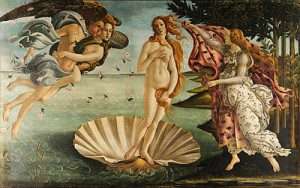
A 'creative' act?
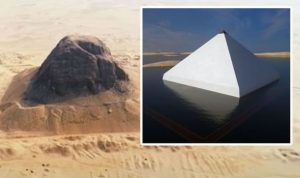
Senusret II was the fourth pharaoh of the Twelfth Dynasty of Egypt who ordered for the construction of the Pyramid of Lahun before his death. The ancient ruler took a great deal of interest in the Faiyum oasis region and began work on an extensive irrigation system from Bahr Yussef through to Lake Moeris in Middle Egypt. Question. 'Opening' or closing?
"When we look into George O'Keeffe's slightly open clamshell we see the chaste beauty of the primordial shell of existence, a reminder of the sea's salty, elemental first fruits of life. Or again, the slightly open shell imparts subtle, feeling-toned qualities: the receptive, intimate, sensual and shy. It speaks of the creative and gestative, the introverted containment that fosters the essence of a life...Their rough round shells, invite our projections of prying open the world with our consciousness - ''the world is my oyster'' - extracting its treasures, assimilating its good, The shell opening {'unfolding'?} of itself evokes the wonders of revelation and incarnation. And the closing of the shell: hidden process, reticence, and isolation; ''clamming up,'' a drawing of boundaries; a gathering in; being ''secret, and self contained, and solitary as an oyster''..." [Extract from the book ' The Book of Symbols: Reflections on Archetypal Images' by Taschen].

Sun / Moon / Cross / Cup symbolism . All represented in human form. A representation of something OUTSIDE of the obvious. Parts within the whole. The Micro within the Macro. Other examples elsewhere.
"The scalloped shell that one finds on the ancient coat of the pilgrims is the symbol of the secret water {sweet?} that contains everything and in which the star {pearl?} of the Magi was reflected. The sages of the Middle Ages related this shell to Mercury-Hermes, who was known in Egypt as Thoth. It is said that Thoth is the master {lord?} of the 'secret water' {sweet?}...Mercury was thought to be the intermediary of the gods, the great voyager, who establishes a constant relationship between the Principle Functions and their earthly manifestations {i.e., as one example - Nova Scotia?}..." ['Journey Into The Light'].
REFRESHER: ''The star of your BEING is rising.'' {i.e., to travel by ones own light}.
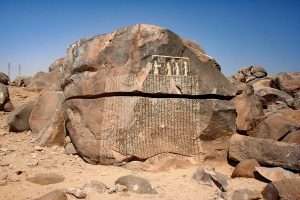
''Crack between the worlds''? Split belly? Navel?
A working example: ''The stone sarcophagus was left in a chamber at the bottom of the immense corrider like a seed deposited in a womb....Seti I lay thirtyone centuries beneath a YELLOW peaked stone mountain. Its shape resembles the stone pyramids of Giza...It recalled the primordial stone that arose from the watery abyss at ''the first time'' of creation. Its apex brushes the BELLY of sky, a beautiful goddess, the mother whom the ancients called Nut. In 'death' she brought him to her bosom, made him an ''indestructible star within her body''. So say the ancient Pyramid Texts, 'His Body to earth, his soul to sky'...'' [Page 138 'Dreams of Isis'].
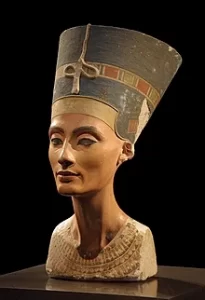
Seat of Conscience?
Something extra - in the abstract sense of the word: ''The making of a thing whether with divine {that universal 'bit'} or human hands, involves the manipulation of a kind of genetic code that weaves itself among 'three' planes. The upper causal plane emanates from ''pure undifferentiated'' being, and the lower physical plane manifests form. Above, lies pure being; below, matter. Between the two is a formless intermediate plane that crackles with bodies of electric force. Filled with love, anger, fear and desire, its energies build the aufu and its subsequent incarnations in the way that sand, as an irritant, acts to build the oxysters future pearl. These spiritual bodies are not perceptible; rather, they are bodies of pure thought. These energetic forces of desire, concentration and affirmation are ruled by the sekhem {the power of the will}, the ren {the power of the name}, and the ab {the heart, or seat of conscience}. [Page 176 'Dreams of Isis'].
''St. Elmo's fire — also called Witchfire or Witch's Fire[1] — is a weather phenomenon in which luminous plasma is created by a corona discharge from a rod-like object such as a mast, spire, chimney, or animal horn[2] in an atmospheric electric field. It has also been observed on the leading edges of airplanes, as in the case of British Airways Flight 009. The intensity of the effect, a blue or violet glow around the object, often accompanied by a hissing or buzzing sound, is proportional to the strength of the electric field and therefore noticeable primarily during thunderstorms or volcanic eruptions.
 St. Elmo's fire is named after St. Erasmus of Formia (also known as St. Elmo), the patron saint of sailors. The phenomenon, which can warn of an imminent lightning strike,[3] was regarded by sailors with awe and sometimes considered to be a good omen.''
St. Elmo's fire is named after St. Erasmus of Formia (also known as St. Elmo), the patron saint of sailors. The phenomenon, which can warn of an imminent lightning strike,[3] was regarded by sailors with awe and sometimes considered to be a good omen.''
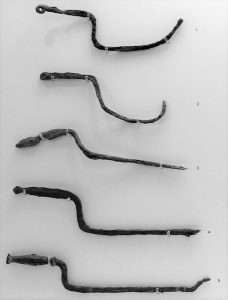
Straight lines and curves. 90/180?
''Erasmus of Formia, also known as Saint Elmo (died c. 303), was a Christian saint and martyr. He is venerated as the patron saint of sailors and abdominal pain. Erasmus or Elmo is also one of the Fourteen Holy Helpers, saintly figures of Christian tradition who are venerated especially as intercessors.... in the Golden Legend credited him as a bishop at Formia over all the Italian Campania, as a hermit on Mount Lebanon, and a martyr in the Diocletianic Persecution. There appears to be no historical basis for his passio.''
Side step: ''Many of the stars in Orion are hot and young, evolving rapidly and ending their lives in colossal cosmic explosions called supernovae....If, on our computer, we were to run Orion rapidly into the distant future, we would see a startling effect, the births and deaths of many of its stars, flashing on and off like fireflies in the night.'' [Carl Sagan from the book: 'The Orion Zone: Ancient Star Cities of the American S/W' / Page 268].
Gold and Silver?

Sweet or Sour?
Side note: 'Sweet water' = Living water? {Old/New Testament}. That ''living water'' represented with Jacobs Well. Found within the area that was first arrived at - OUT of Exodus. From 'fire' i.e., burnt desert to its remedy ''water''. A healing process. Represented with the Samaritan woman. ['Day 18: Give Me This Water. Jacobs Well. Samaria' / Kathleen Nichols/Magdala].
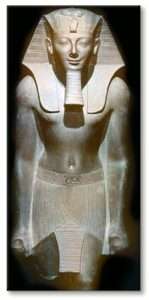
'Handle' on the moment?
From a different perspective: "To use the yang of water, you use the light of fire to illumine and absorb it. This shows that the 'sun and the moon' are originally ONE thing......
The darkness of the sun {Amun?} is the vitality of the true moon {Amun-Ra?}; the 'moon cavern' is not on the moon but on the sun {Denderah}. That is why it is called the 'moon cavern', for otherwise it would be enough just to say the 'moon'. The white of the moon is the light of the true sun {Karnak}. The sunlight being on the moon is what is called the 'root of heaven'. Otherwise it would be enough to just to say 'heaven'. When the sun and moon are separated, they are but half; only when they come together do they form a whole." [Page 48 'The Secret of the Golden Flower' / T. Cleary. Brackets/Italics- this readers].
'Divide / Multiply' as a means....
Eclipse?
"Duality" enlarged THROUGHOUT.
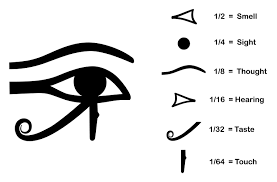
Middle of the forehead?
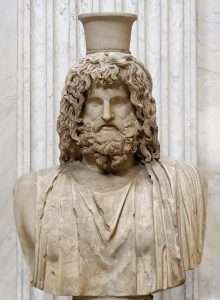
"Head Jar"?
Just outside the town of Nazca a headless person found in 3' of SAND - in the Nazca 'sitting'' position {'Enthroned'?}. A ceremic ''head Jar'' close by {'fire' link} with a painting of a tree emerging from the head {water/soul link}. No burial of headless person found before {a FOUNDATION of something?}. But many solitary heads {without the bodies} found at their main temple site at Cahuachi - with 'vegetative' matter in the form of a ''twisted/knotted rope'' emerging from a hole in the middle of the forehead - together with {royal?} burials of the elite in the sitting position. A short distance away begins the Nazca Lines - the highest point of which are found Spondylus Shells ''always identified with rain and water'' - another bivalve mollusc. ''Why carry a rare seashell across the scorching desert only to bury it on a mountain top.'' ['Ancient Secrets of Peru' / Nat Geo /2019].
Egyption equivalent = Abydos/Denderah in relation to al-qurn {i.e., 'She Who Loves Silence'}.
Spirit and Soul as a means...?
"Spondylus is a genus of bivalve molluscs, the only genus in the family Spondylidae.[2] They are known in English as spiny oysters or thorny oysters (though they are not, in fact, true oysters).

Astro ceiling in Senenmut bare/naked tomb chamber. 'Folded'? Hinged? Sheep decans to enlarge.
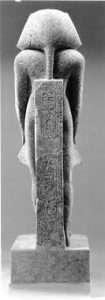
Attached to a rock?
The many species of Spondylus vary considerably in appearance. They are grouped in the same superfamily as the scallops.....They are not closely related to true oysters (family Ostreidae); however, they do share some habits such as cementing themselves to rocks rather than attaching themselves by a byssus. The two halves of their shells are joined with a ball-and-socket type of hinge, rather than with a toothed hinge as is more common in other bivalves. They also still retain vestigial anterior and posterior auricles ("ears", triangular shell flaps) along the hinge line, a characteristic feature of scallops, though not of oysters. As is the case in all scallops, Spondylus spp. have multiple eyes around the edges of their mantle, and they have relatively well-developed nervous systems. Their nervous ganglia are concentrated in the visceral region, with recognisable optic lobes connected to the eyes."
And/or: "The taxonomic term Bivalvia was first used by Linnaeus in the 10th edition of his Systema Naturae in 1758 to refer to animals having shells composed of two valves.[3] More recently, the class was known as Pelecypoda, meaning "axe-foot" (based on the shape of the foot of the animal when extended). The name "bivalve" is derived from the Latin bis, meaning "two", and valvae, meaning "leaves of a door".[4] ("Leaf" is an older word for the main, movable part of a door. We normally consider this the door itself.) Paired shells have evolved independently several times among animals that are not bivalves; other animals with paired valves include certain gastropods (small sea snails in the family Juliidae),[5] members of the phylum Brachiopoda[6] and the minute crustaceans known as ostracods[7] and conchostracans."

Venus rules over Taurus: A beginning or end?
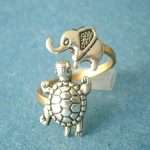
'Wedding' ring? carapace?
"Bivalvia (/baɪˈvælviə/), in previous centuries referred to as the Lamellibranchiata and Pelecypoda, is a class of marine and freshwater molluscs that have laterally compressed bodies enclosed by a shell consisting of two hinged parts. As a group, bivalves have no head {'headless'?} and they lack some usual molluscan organs, like the radula and the odontophore. The class includes the clams, oysters, cockles, mussels, scallops, and numerous other families that live in saltwater, as well as a number of families that live in freshwater. The majority are filter feeders. The gills have evolved into ctenidia, specialised organs for feeding and breathing. Most bivalves bury themselves in sediment, where they are relatively safe from predation. Others lie on the sea floor or attach themselves to rocks or other hard surfaces. Some bivalves, such as the scallops and file shells, can swim. Shipworms bore into wood, clay, or stone and live inside these substances.
N.B. The word to describe "no head" is vestigial i.e., the remnants of a head.
'Little head'?
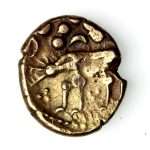
Teeth for a 'key'?
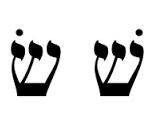 Continued: The shell of a bivalve is composed of calcium carbonate, and consists of two, usually similar, parts called valves. These valves are for feeding and for disposal of waste. These are joined together along one edge (the hinge line) by a flexible ligament that, usually in conjunction with interlocking "teeth" on each of the valves, forms the hinge. This arrangement allows the shell to be opened and closed without the two halves detaching. The shell is typically bilaterally symmetrical, with the hinge lying in the sagittal plane. Adult shell sizes of bivalves vary from fractions of a millimetre to over a metre in length, but the majority of species do not exceed 10 cm (4 in).
Continued: The shell of a bivalve is composed of calcium carbonate, and consists of two, usually similar, parts called valves. These valves are for feeding and for disposal of waste. These are joined together along one edge (the hinge line) by a flexible ligament that, usually in conjunction with interlocking "teeth" on each of the valves, forms the hinge. This arrangement allows the shell to be opened and closed without the two halves detaching. The shell is typically bilaterally symmetrical, with the hinge lying in the sagittal plane. Adult shell sizes of bivalves vary from fractions of a millimetre to over a metre in length, but the majority of species do not exceed 10 cm (4 in).
Bivalves have long been a part of the diet of coastal and riparian human populations. Oysters were cultured in ponds by the Romans, and mariculture has more recently become an important source of bivalves for food. Modern knowledge of molluscan reproductive cycles has led to the development of hatcheries and new culture techniques."
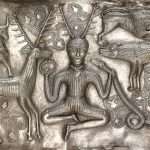
Whats he sat on?
 And/or: ''Three young mummies found at the top of an ACTIVE Volcano. Mount Llullaillaco, at the border of Argentina and Chile. 22000 feet. Ritually placed 'Two Young' girls and one boy, wrapped in clothing. Purposely placed in a 'cavern' at the top of an ice covered volcano. Crossed legged. Natural mummification. 1500AD from ''the middle of the Inca culture''. Gold and silver figurines found alongside figurines made from SPONDYLUS shells. Maidens headdress of feathers from the Amazon jungle. SEMI-CIRCULAR in design. Large trumpet type bells can be seen being worn around one of the childs neck. The OLDEST ONE. Fire and ice as a means....? A beginning or ending of a previous cycle. Which and why? ['Ancient Unexplained Files: Mystery of the Child Mummies'].
And/or: ''Three young mummies found at the top of an ACTIVE Volcano. Mount Llullaillaco, at the border of Argentina and Chile. 22000 feet. Ritually placed 'Two Young' girls and one boy, wrapped in clothing. Purposely placed in a 'cavern' at the top of an ice covered volcano. Crossed legged. Natural mummification. 1500AD from ''the middle of the Inca culture''. Gold and silver figurines found alongside figurines made from SPONDYLUS shells. Maidens headdress of feathers from the Amazon jungle. SEMI-CIRCULAR in design. Large trumpet type bells can be seen being worn around one of the childs neck. The OLDEST ONE. Fire and ice as a means....? A beginning or ending of a previous cycle. Which and why? ['Ancient Unexplained Files: Mystery of the Child Mummies'].
"The description of the region by the word Argentina has been found on a Venetian map in 1536....In English, the name "Argentina" comes from the Spanish language; however, the naming itself is not Spanish, but Italian. Argentina (masculine argentino) means in Italian "(made) of silver, silver coloured", derived from the Latin argentum for silver. In Italian, the adjective or the proper noun is often used in an autonomous way as a substantive and replaces it and it is said l'Argentina.
The name Argentina was probably first given by the Venetian and Genoese navigators, such as Giovanni Caboto. In Spanish and Portuguese, the words for "silver" are respectively plata and prata and "(made) of silver" is plateado and prateado, although "argento" for "silver" and "argentado" for "covered in silver" exist in Spanish. Argentina was first associated with the silver mountains legend, widespread among the first European explorers of the La Plata Basin."
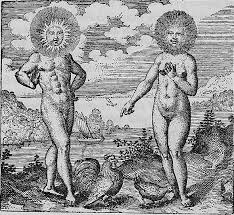
''The father of the One Thing [explained within] is the sun; its mother the moon.'' [Michael Maier, Atalanta Fugiens, Frankfort 1617]. Extract taken from Chapter 5, 'The Emerald Tablet' by Dennis Hauck.
"Smiths Cove {Oak Island} was settled in 1759 by people of the New York area named Potter, Smith, Sulis and Odelle. One of the earliest settlers was Joseph Potter Jr [1763]. In 1783 Mr Potter exchanged land grants with a Loyalist named Joseph Smith from which the community derived its name."........."Trinity Anglican Church [Queen St, Digby], was built in 1785. The church was designed by Steven C. Earle, the noted New England architect. It is the only church in Canada, to be built by Shipwrights, and its design is similar to an upside down wooden ship." [www.rootsweb.ancestry.com/~nsdigby/trivia.htm].
Side note: ''Francis Bacon was born into a family of courtiers in 1561. At the age of twelve a masque he had written, 'The Birth of Merlin' was performed before Queen Elizabeth the 1st....When James the 1st came to the throne, Bacon quickly achieved his long ambition of becoming the Lord Chancellor....One of Bacons responsibilities was the distribution of Land grants in the New World.....He admitted he was fascinated by secret codes and ciphers.... It is interesting to note that his favourite code was the ancient 'cabalistic cipher', in terms of which the name 'Bacon' has the numerical value of thirty-three...'' [Page 395 'The Secret History of the World' / J. Black].
''New Name''? Shakespeare?
Jeremiah Chapter 33?
Question. Any ''33'' on Oak Island?
A working example: ''Unas is well attested by historical sources with three ancient Egyptian King lists dating to the New Kingdom...He occupies the 33rd entry in the Abydos King List - written during the reign of Seti 1....Thirtythree also mentioned in the Aegyptiaca, a history of Egypt written in the 3rd century BC in the reign of Ptolemy II by the Egyptian priest Manetho.'' [Intro 'Pyramid Texts' / W. Budge].

'Nature is a labyrinth in which the very haste you move with will make you lose your way''. Quote by Bacon.
And/or: ''John Dee was born into a Welsh family living in London. A brilliant young scholar....In the late 1570's he formed a circle called the Dionisii Areopagites with among others Edmond Spenser, whose poem The Faerie Queene is famous for Rosicrucian and other esoteric imagery....The Cabala was central to his studies. He believed in the mathematical foundation of all things....IT IS a little known fact, but documented, that at the height of his fortunes Dr Dee owned a charter granting him ownership of the vast landmass called Canada, and his vision of a British Empire - a phrase he coined - helped inspire and guide the nations voyages of discovery.'' [Pages 418 -420 'The Secret History of the World' / J. Black].
'Mercury'?
Neolithic equivalent....Seahenge. Enlarged elsewhere. Different 'keys' but with the same principle in mind. Question. Why? More importantly.....Why go to all this effort?
Side note: The Cove of Cathbad? As a means...? {Douglas Monroe}.

Kew Gardens. 'The Palm House'. Built to look like the inverted keel of a ship?
Continued: Further head scratch...''Potter'' [potters wheel? i.e.,as one example the Egyptian 'Khnum'] ''Smith'' [blacksmith?] Sulis [eye?] Odelle [a girls name; therefore 'feminine' aspect? Can also mean ''harmonious'']. Question. Coincidence or a meaningful one or conspiracy theorist? Further notes [clues?] to evaluate correctly - i.e.,to 'evaluate' the purpose and intent of Oak Island - found elsewhere. Look above.
Side note. Phil Harding of 'Britain's Ancient Tracks' {enlarged elsewhere} talks about how ingrained {''congealed''} the HORN 'handles' of the 'digging tools' were - with clay {Red deer}. Question. A Sacred act?
Same question to the clay 'reinforcing rod' that the ancients used to support such bronze forms as the Egyptian 'cat' or the Chinese 'swan' figures as seen in the program narrated by Dan Snow. Known as Direct Lost Wax Technique. Enlarged elsewhere.


Libra. 'Bump'?
A piece of prose..........."You can destroy yourself by fire...by anger expressed outwards...as well as by coldness turned inwards. You will notice that this is not a choice. You either hate too much or love too much. Some say the world will end in fire, others say in ice. From what i've tasted of desire, i hold with those who favour fire. But if it had to perish twice, i think i know enough of hate, to say that for destruction, ice is also great, and would suffice". [Robert Frost. 1874-1963. 'Fire and Ice'. Taken from.. 'Speaking From the Heart' by Sister W. Beckett].
'A Song of Ice and Fire' / G. Martin.
REFRESHER: As seen from a different perspective: "Berossos asserted that the earth was to be 'submerged' when all the planets met in Cancer, and consumed by 'fire' when they met in Capricorn." ['Star Names and Their Meaning' under 'Cancer'].
Cancer/Capricorn either side of equator. One referred to as Gate of the Gods and the other Gate of Men. Why?
"The messenger of god said, 'The Quran was sent down in seven modes. Every verse in it has an external and an internal meaning and at each boundary there is a vista," [Tabari].

The term bangs originally referred to hair cut bang-off (i.e., straight across at the front), although the term is now applied to diverse forms of hair styling. It is probably related to bang-tail, a term still used for the practice of cutting horses' tails straight across. The term fringe refers to the resemblance of the short row of hair to ornamental fringe trim, such as those often found on shawls.
"The messenger of god said, 'If anyone makes the care of his external welfare the sum total of his cares, god will protect him from worldly care; but if he has a variety of cares relating to the matters of this world, god will not be concerned in which of its valleys he perishes."[ Ibn Majah]. Both taken from 'The Book of Hadiths' [Sayings of the Prophet Muhammad, from the Mishkat al- Masabib] by C. L. Eaton.
Try ''Valley'' in relation to Herod in its negative sense {representation of}. AND/OR Mount of Olives in relation to Temple Mount - in the positive 'sense of the word'.
Question. How would the Egyptians represent same principles?

“Most certainly, I tell you, one who doesn’t enter by the door into the sheep fold, but climbs up some other way, is a thief and a robber."
".....the heart is the hinge [key], on which the world turns." [Chapter 31,'The Sacred History']. Think about it, relative to what the 'Precession of the Equinoxes' represents. ....
Side note: In British English, a sheep pen is also called a folding, sheepfold or sheepcote. Modern shepherds more commonly use terms such as closing or confinement pen for small sheep pens. Most structures today referred to as sheepfolds are ancient dry stone semicircles."
And/or: Apollo[a] is one of the Olympian deities in classical Greek and Roman religion and Greek and Roman mythology. Apollo has been recognized as a god of archery, music and dance, truth and prophecy, healing and diseases, the Sun and light, poetry, and more. One of the most important and complex of the Greek gods, he is the son of Zeus and Leto, and the twin brother of Artemis, goddess of the hunt. He is considered to be the most beautiful god and is represented as the ideal of the kouros (ephebe, or a beardless, athletic youth). Apollo is known in Greek-influenced Etruscan mythology as Apulu....
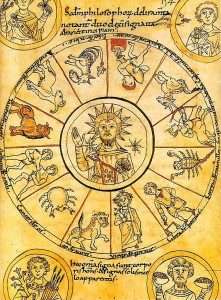
 The name Apollo—unlike the related older name Paean—is generally not found in the Linear B (Mycenean Greek) texts, although there is a possible attestation in the lacunose form ]pe-rjo-[ (Linear B: ]𐀟𐁊-[) on the KN E 842 tablet,[6][7][8] though it has also been suggested that the name might actually read "Hyperion" ([u]-pe-rjo-[ne]).....The etymology of the name is uncertain. The spelling Ἀπόλλων (pronounced [a.pól.lɔːn] in Classical Attic) had almost superseded all other forms by the beginning of the common era, but the Doric form, Apellon (Ἀπέλλων), is more archaic, as it is derived from an earlier *Ἀπέλjων. It probably is a cognate to the Doric month Apellaios (Ἀπελλαῖος),[10] and the offerings apellaia (ἀπελλαῖα) at the initiation of the young men during the family-festival apellai (ἀπέλλαι).[11][12] According to some scholars, the words are derived from the Doric word apella (ἀπέλλα), which originally meant "wall," "fence for animals" and later "assembly within the limits of the square."[13][14] Apella (Ἀπέλλα) is the name of the popular assembly in Sparta,[13] corresponding to the ecclesia (ἐκκλησία). R. S. P. Beekes rejected the connection of the theonym with the noun apellai and suggested a Pre-Greek proto-form *Apalyun.[15]
The name Apollo—unlike the related older name Paean—is generally not found in the Linear B (Mycenean Greek) texts, although there is a possible attestation in the lacunose form ]pe-rjo-[ (Linear B: ]𐀟𐁊-[) on the KN E 842 tablet,[6][7][8] though it has also been suggested that the name might actually read "Hyperion" ([u]-pe-rjo-[ne]).....The etymology of the name is uncertain. The spelling Ἀπόλλων (pronounced [a.pól.lɔːn] in Classical Attic) had almost superseded all other forms by the beginning of the common era, but the Doric form, Apellon (Ἀπέλλων), is more archaic, as it is derived from an earlier *Ἀπέλjων. It probably is a cognate to the Doric month Apellaios (Ἀπελλαῖος),[10] and the offerings apellaia (ἀπελλαῖα) at the initiation of the young men during the family-festival apellai (ἀπέλλαι).[11][12] According to some scholars, the words are derived from the Doric word apella (ἀπέλλα), which originally meant "wall," "fence for animals" and later "assembly within the limits of the square."[13][14] Apella (Ἀπέλλα) is the name of the popular assembly in Sparta,[13] corresponding to the ecclesia (ἐκκλησία). R. S. P. Beekes rejected the connection of the theonym with the noun apellai and suggested a Pre-Greek proto-form *Apalyun.[15]


Bought soul's or just sycophants?
Side note: "After the conquest of the region by Alexander the Great and the subsequent wars between his generals, and according to the new interpretation of a new historical and iconographic source for Hellenistic history, a mosaic of Apamea discovered in 2011, proposed by Olszewski and Saad,[2] the foundation of Pella, the Macedonian military camp (katoikia) took place in the fall 320 BC, just after the Treaty of Triparadeisos (320 BC) at the initiative of Antipater, and Cassander's inspiration. In view of this interpretation, the authors disagree with the earlier hypothesises attributing the foundation of Pella to Alexander the Great or to Antigonus I Monophthalmus. From about 300 BC Pella receive a new status of polis, was fortified and established as a city (polis) by Seleucus I Nicator who named it after his Bactrian wife, Apama, daughter of the Sogdian warlord Spitamenes.[3]

Goddess of crossroads.
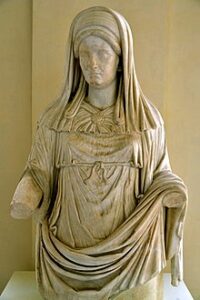 The site was enclosed in a loop of the Orontes which, with the lake and marshes, gave it a peninsular form whence its other name of Cherronêsos. It was located at a strategic crossroads for Eastern commerce and became one of the four cities of the Syrian tetrapolis. Seleucus also made it a military base with 500 elephants, and an equestrian stud with 30,000 mares and 300 stallions.
The site was enclosed in a loop of the Orontes which, with the lake and marshes, gave it a peninsular form whence its other name of Cherronêsos. It was located at a strategic crossroads for Eastern commerce and became one of the four cities of the Syrian tetrapolis. Seleucus also made it a military base with 500 elephants, and an equestrian stud with 30,000 mares and 300 stallions.
After 142 BC, the pretender Diodotus Tryphon made Apamea the base of his operations...Much of Apamea was destroyed in the 115 AD earthquake, but was subsequently rebuilt....
Side note: "Armboth Fell has probably as good a claim as any to be regarded as the most centrally {'crossroads'?} situated fell in Lakeland, for straight lines drawn between the northern and southern boundaries and between the eastern and western, would bisect hereabouts. {Since these boundaries are arbitrary, however, individual opinion, will differ on this point}. 'Lakeland Fells: Book Three' / A. Wainwright.
'Line of Sight'.
With or without 'hands'?
'Afar'?
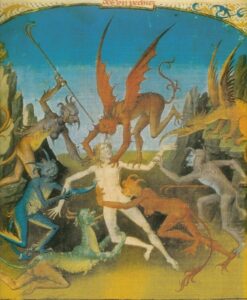

"YOU EXPECT SOMETHING BETTER FROM your PRESIDENT." During their efforts to overturn the results of the election, Trump and his ally Rudy Giuliani repeatedly claimed that Freeman and Moss had committed election fraud. A heavily edited, brief clip of security footage was widely circulated online and by Trump allies as supposed proof.{NBC News}.
Continued: The Great Colonnade was situated along the main avenue of Apamea and ran for nearly 2 kilometres (1.2 mi), making it among the longest in the Roman world. It was rebuilt after the original, dating from the Seleucid Empire, was devastated along with the rest of Apamea in the 115 AD earthquake. Reconstruction started immediately and over the course of the second century the city was completely rebuilt, starting with the Great Colonnade.[24] The colonnade was aligned along the north-south axis, making up the city's "cardo maximus". Starting at the city's north gate, the colonnade ran in an uninterrupted straight line to the south gate. The northern third of the colonnade's stretch is marked by a monumental votive column that stood opposite the baths.[25] The colonnade passed through the centre of the city and several important buildings were clustered around it, including the baths, the agora, the Temple of Tyche, the nymphaeum, the rotunda, the atrium church and the basilica.[26] On either side of the street a 6.15 metres (20.2 ft)-wide colonnade ran its full length. The columns were 9 metres (30 ft) high and 0.9 metres (2 ft 11 in) in diameter. They stood on square bases of 1.24 m on a side and 0.47 m high. The columns display two main designs: plain and distinctive spiral flutes. Archaeologist Jean Lassus argues that the former dates back to the Trajanic period, and the latter to that of Antoninus Pius.[27] The colonnade's porticoes were paved with extensive mosaics along the full stretch of the colonnade.[25]"

Sutton Hoo purse clasp: Wolfs / eagles and ducks.

Mad, bad, sad or glad?
Continued: Several instances of popular etymology are attested by ancient authors. Thus, the Greeks most often associated Apollo's name with the Greek verb ἀπόλλυμι (apollymi), "to destroy". [16] Plato in Cratylus connects the name with ἀπόλυσις (apolysis), "redemption", with ἀπόλουσις (apolousis), "purification", and with ἁπλοῦν ([h]aploun), "simple",[17] in particular in reference to the Thessalian form of the name, Ἄπλουν, and finally with Ἀειβάλλων (aeiballon), "ever-shooting". Hesychius connects the name Apollo with the Doric ἀπέλλα (apella), which means "assembly", so that Apollo would be the god of political life, and he also gives the explanation σηκός (sekos), "fold", in which case Apollo would be the god of flocks and herds.[18] In the ancient Macedonian language πέλλα (pella) means "stone,"[19] and some toponyms may be derived from this word: Πέλλα (Pella,[20] the capital of ancient Macedonia) and Πελλήνη (Pellēnē/Pellene)....

Arrow of time?
Apollo's chief epithet was Phoebus (/ˈfiːbəs/ FEE-bəs; Φοῖβος, Phoibos Greek pronunciation: [pʰó͜i.bos]), literally "bright".[26] It was very commonly used by both the Greeks and Romans for Apollo's role as the god of light. Like other Greek deities, he had a number of others applied to him, reflecting the variety of roles, duties, and aspects ascribed to the god. However, while Apollo has a great number of appellations in Greek myth, only a few occur in Latin literature....
Lyceus (/laɪˈsiːəs/ ly-SEE-əs; Λύκειος, Lykeios, from Proto-Greek *λύκη), "light". The meaning of the epithet "Lyceus" later became associated with Apollo's mother Leto, who was the patron goddess of Lycia (Λυκία) and who was identified with the wolf (λύκος)....Delphinius (/dɛlˈfɪniəs/ del-FIN-ee-əs; Δελφίνιος, Delphinios), literally "Delphic", after Delphi (Δελφοί). An etiology in the Homeric Hymns associated this with dolphins.....Aphetor (/əˈfiːtər/ ə-FEE-tər; Ἀφήτωρ, Aphētōr), from ἀφίημι, "to let loose".....Clytotoxus (/ˌklaɪtɒˈtɒksəs/ KLY-toh-TOK-səs; Κλυτότοξος, Klytótoxos), "he who is famous for his bow", the renowned archer.....Clytotoxus (/ˌklaɪtɒˈtɒksəs/ KLY-toh-TOK-səs; Κλυτότοξος, Klytótoxos), "he who is famous for his bow", the renowned archer.....Hecaërgus (/ˌhɛkiˈɜːrɡəs/ HEK-ee-UR-gəs; Ἑκάεργος, Hekaergos), literally "far-shooting".....Hecebolus (/hɪˈsɛbələs/ hiss-EB-əl-əs; Ἑκηβόλος, Hekēbolos), "far-shooting."
Acersecomes (Ακερσεκόμης, Akersekómēs), "he who has unshorn hair", the eternal ephebe.

A kiss curl describes a lock of hair curling onto the face and usually plastered down. Although the curl could be flattened with saliva (hence its alternative name spit curl), soap or hair lotion is more typically used. In the late seventeenth century, there was a fashion for fringes composed of curls described as fripons, guigne-galants, or 'kiss-curls', sometimes augmented with false hair....
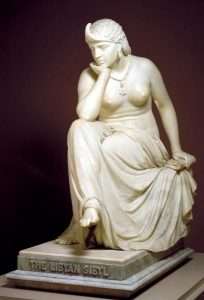
Sphinx is to 'fire' as Sibyl is to 'Soul'.
The kiss curl style was worn by both men and women.
It became a trademark of the singer Bill Haley, who wore a large spit curl over his right eye to divert attention from his left eye, which was blind.[3][4] Other people known for their kiss curls included Josephine Baker,[5] Diana Ross,[6] and Superman.
Apollo to enlarge.
 Side step: Fabre d’Olivet, in his Hermeneutic Interpretation of the Origin of the Social State of Man and of the Destiny of the Adamic Race, sums up all his works. It is the history of the White or Borean Race—ours; and is a condensation of the destinies of this race, whose progressive development he traces across time and space....It is necessary to note with care that all the peoples, whose names are found in the ancient writers ordinarily included under the generic name of Celt or of Scythian, were in reality only the divisions of one and the same people issued from one and the same race. The name of Celts, which they gave in general to themselves, signified the males, the strong, the illustrious; it was derived directly from the word held, a hero, a master. The name of Scythtans, which their enemies gave to them, signified, on the contrary, the impure ones, the reprobates; it came from the word Cuth or Scuth applied to all things which one sets aside or which repels one or which one repels. It designated properly spittle. It was by this offensive word that the Black Race characterized the White, on account of the colour of spittle.
Side step: Fabre d’Olivet, in his Hermeneutic Interpretation of the Origin of the Social State of Man and of the Destiny of the Adamic Race, sums up all his works. It is the history of the White or Borean Race—ours; and is a condensation of the destinies of this race, whose progressive development he traces across time and space....It is necessary to note with care that all the peoples, whose names are found in the ancient writers ordinarily included under the generic name of Celt or of Scythian, were in reality only the divisions of one and the same people issued from one and the same race. The name of Celts, which they gave in general to themselves, signified the males, the strong, the illustrious; it was derived directly from the word held, a hero, a master. The name of Scythtans, which their enemies gave to them, signified, on the contrary, the impure ones, the reprobates; it came from the word Cuth or Scuth applied to all things which one sets aside or which repels one or which one repels. It designated properly spittle. It was by this offensive word that the Black Race characterized the White, on account of the colour of spittle.

Milky white?
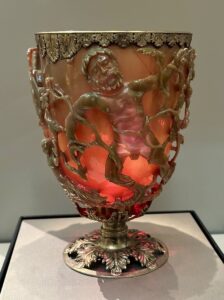
The Lycurgus Cup
Late Roman Empire, AD 300s
This cage-cup is incredibly rare. Its glass contains tiny amounts of gold and silver which cause it to turn from opaque green to translucent red when light is shone through. It may have been part of a wealthy Roman's banqueting set, making its imagery of Dionysus, Greek god of wine, highly appropriate. Its green and red qualities may even have been intended to evoke white and red wine. Alternatively, it may have been used as a lamp because the gilded silver rim and foot were probably added in the late 1700s.
And/or: An elf (pl.: elves) is a type of humanoid supernatural being in Germanic folklore. Elves appear especially in North Germanic mythology, being mentioned in the Icelandic Poetic Edda and the Prose Edda.
In medieval Germanic-speaking cultures, elves were thought of as beings with magical powers and supernatural beauty, ambivalent towards everyday people and capable of either helping or hindering them.[1] Beliefs varied considerably over time and space and flourished in both pre-Christian and Christian cultures. The word elf is found throughout the Germanic languages. It seems originally to have meant 'white being'. However, reconstructing the early concept depends largely on texts written by Christians, in Old and Middle English, medieval German, and Old Norse. These associate elves variously with the gods of Norse mythology, with causing illness, with magic, and with beauty and seduction.
After the medieval period, the word elf became less common throughout the Germanic languages, losing out to terms like Zwerg ('dwarf') in German and huldra ('hidden being') in North Germanic languages, and to loan-words like fairy (borrowed from French). Still, belief in elves persisted in the early modern period, particularly in Scotland and Scandinavia, where elves were thought of as magically powerful people living, usually invisibly, alongside human communities.
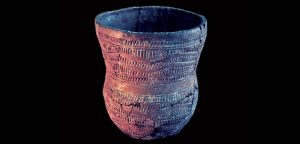
Twice as high as wide?
Continued: ''Accompanying the Weighing of the Heart Ceremony is the necessary Chapter 125 {Book of the Dead} - perhaps the longest and most important part of the Osirian Mysteries {Seti 1 tunnel?}....As he stands before the scales of justice - in the Halls of Ma'at Ani is - as he always was in life - ' a PURE one, washed and fasted'.....Aside from providing us with a list of what we should not do {''negative confessions''}, Chapter 125 offers simple moral truths to live by...None of this is beyond the ability of an ordinary individual to perform. Maat is human decency and the natural laws of attraction, balance, karma, and reciprocity at work in one's life. There follow four inquisitions before Ani may enter into the Hall of Osiris and be announced by Thoth.
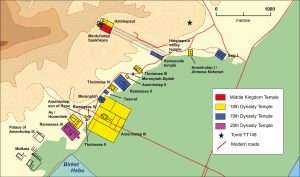
"We know where Tutankhamun’s temple should be, because royal mortuary temples of the Eighteenth Dynasty ran in sequence along the edge of the desert, from Hatshepsut in the north, through Thutmose III, Amenhotep II, Thutmose IV, Amenhotep III, to that of Ay and Horemheb in the south." {'Ancient Egypt' / NOV-DEC 2023}. 'Gap' to enlarge.
The second examination includes knowing the names of the sacred floor, its halls, doors, and hinges - even the hinge sockets {'alabaster'?}. This brings to mind Khaemwast and Si-Osire's travels into Duat as they passed the man whose heart was not true and who now trapped with the door hinge in his eye. From the 5th Dynasty until the last, the books of the afterlife tried to bring the SOUL into the life eternal...with its words of power.'' [Page 261/2 'Imagining the World Into Existence'].
Question. Did the Sphinx Temple have an alabaster floor? And/or is 'Bastet' a link to same word?

Apollo: Curl or knot?
And/or: This helps us to understand the relationship at Rome of Janus and the White Goddess Cardea who is mentioned at the end of Chapter Four as the Goddess of Hinges who came to Rome from Alba Longa. She was the hinge on which the year swung—the ancient Latin, not the Etruscan year—and her importance as such is recorded in the Latin adjective cardinalis—as we say in English 'of cardinal importance'—which was also applied to the four main winds; for winds were considered as under the sole direction of the Great Goddess until Classical times. As Cardea she ruled over the Celestial Hinge at the back of the North Wind around which, as Varro explains in his De Re Rustica, the mill-stone of the Universe revolves. 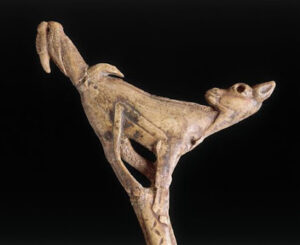 This conception appears most plainly in the Norse Edda, where the giantesses Fenja and Menja, who turn the monstrous mill-stone Grotte in the cold polar night, stand for the White Goddess in her complementary moods of creation and destruction. Elsewhere in Norse mythology the Goddess is nine-fold: the nine giantesses {Ma-gog?} who were joint-mothers of the hero Rig, alias Heimdall, the inventor of the Norse social system, similarly turned the cosmic mill. Janus was perhaps not originally double-headed: he may have borrowed this peculiarity from the Goddess herself who at the Carmentalia, the Carmenta Festival in early January, was addressed by her celebrants as 'Postvorta and Antevorta'—'she who looks both back and forward'. However, a Janus with long hair and wings appears on an early stater of Mallos, a Cretan colony in Cilicia. He is identified with the solar hero Talus, and a bull's head appears on the same coin. In similar coins of the late fifth century B.C. he holds an eight-rayed disc in his hand and has a spiral of Immortality sprouting from his double head.
This conception appears most plainly in the Norse Edda, where the giantesses Fenja and Menja, who turn the monstrous mill-stone Grotte in the cold polar night, stand for the White Goddess in her complementary moods of creation and destruction. Elsewhere in Norse mythology the Goddess is nine-fold: the nine giantesses {Ma-gog?} who were joint-mothers of the hero Rig, alias Heimdall, the inventor of the Norse social system, similarly turned the cosmic mill. Janus was perhaps not originally double-headed: he may have borrowed this peculiarity from the Goddess herself who at the Carmentalia, the Carmenta Festival in early January, was addressed by her celebrants as 'Postvorta and Antevorta'—'she who looks both back and forward'. However, a Janus with long hair and wings appears on an early stater of Mallos, a Cretan colony in Cilicia. He is identified with the solar hero Talus, and a bull's head appears on the same coin. In similar coins of the late fifth century B.C. he holds an eight-rayed disc in his hand and has a spiral of Immortality sprouting from his double head.
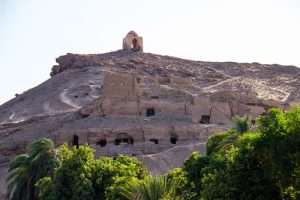
Qubbet el-Hawa or "Dome of the Wind" is a site on the western bank of the Nile, opposite Aswan, that serves as the resting place of ancient nobles and priests from the Old and Middle Kingdoms of ancient Egypt.
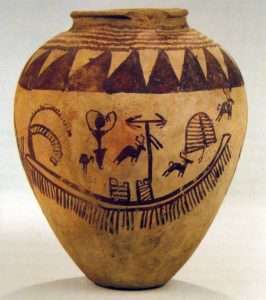 She whistles for the magical breeze that is presently to save the Mariner's life. Here again Coleridge is beautifully exact. The White Goddess Cardea, as has been mentioned, was in charge of the four cardinal winds; mythologically the most important was the North Wind at the back of which she had her starry castle, close to the polar hinge of the Universe. This was the same wind that blew in answer to Gwion's final riddle in the Romance and helped to liberate Elphin, and the wind which, according to Hecataeus, gave its name to the Hyperborean priesthood of Apollo. Whistling three times in honour of the White Goddess is the traditional witch way of raising the wind; hence the proverbial unluckiness of 'a crowing hen and a whistling maid'. Til give thee a wind.' 'And I another.'—as the witches say in Macbeth. ... 'All the quarters that they know, I' the Shipman's card.' The close connexion of winds with the Goddess is also shown in the widespread popular belief that only pigs and goats (both anciently sacred to her) can see the wind, and in the belief that mares can conceive merely by turning their hindquarters to the wind.
She whistles for the magical breeze that is presently to save the Mariner's life. Here again Coleridge is beautifully exact. The White Goddess Cardea, as has been mentioned, was in charge of the four cardinal winds; mythologically the most important was the North Wind at the back of which she had her starry castle, close to the polar hinge of the Universe. This was the same wind that blew in answer to Gwion's final riddle in the Romance and helped to liberate Elphin, and the wind which, according to Hecataeus, gave its name to the Hyperborean priesthood of Apollo. Whistling three times in honour of the White Goddess is the traditional witch way of raising the wind; hence the proverbial unluckiness of 'a crowing hen and a whistling maid'. Til give thee a wind.' 'And I another.'—as the witches say in Macbeth. ... 'All the quarters that they know, I' the Shipman's card.' The close connexion of winds with the Goddess is also shown in the widespread popular belief that only pigs and goats (both anciently sacred to her) can see the wind, and in the belief that mares can conceive merely by turning their hindquarters to the wind.
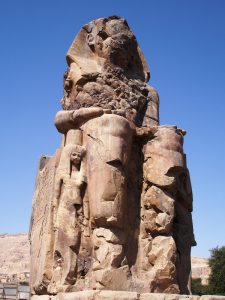 Question 2. The hinge/bolt in the so called 'ascending' passage of the Gt. Pyramid - does it open inwards or outwards? The beginning or end of a journey?
Question 2. The hinge/bolt in the so called 'ascending' passage of the Gt. Pyramid - does it open inwards or outwards? The beginning or end of a journey?
''Opening of the Mouth'' in relation to: Upstream or Downstream as a means.....?
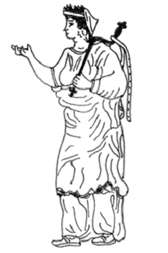
"No one is born to hate. Love comes more naturally to the heart" [key]. [Nelson Mandela].
"Graffiti" (usually both singular and plural) and the rare singular form "graffito" are from the Italian word graffiato ("scratched").[6][1][2] The term "graffiti" is used in art history for works of art produced by scratching a design into a surface. A related term is "sgraffito",[7] which involves scratching through one layer of pigment to reveal another beneath it. This technique was primarily used by potters who would glaze their wares and then scratch a design into them. In ancient times graffiti were carved on walls with a sharp object, although sometimes chalk or coal were used. The word originates from Greek γράφειν—graphein—meaning "to write"......"
'Sculptor' to enlarge.
 "Only he who desires with his whole heart will find, and only to him who knocks vehemently shall the door be opened." [Paracelsus].
"Only he who desires with his whole heart will find, and only to him who knocks vehemently shall the door be opened." [Paracelsus].
Side note: "Depictions of the ‘Driving the Four Calves’ ritual can be found in both mortuary and non-mortuary temples. There were scenes from a statue cult too, paralleled only in the enigmatic temple made by Thutmose III for his father, Thutmose II (mentioned above). Similarly inconclusive is the fact that some blocks refer to: ‘Amun foremost of Ipet Isut (Karnak)’, or to Tutankhamun as ‘Ruler of Ipet Isut’. However, Hatshepsut is ‘Lord of Ipet Isut’ at Deir el-Bahri on the West Bank! Even the description of the temple as a ‘Mansion of Millions of Years’ does not confirm that it was a mortuary structure, as this may be seen for instance in Luxor Temple." {'Ancient Egypt' / NOV-DEC 2023}.

Where will his heart be found? His 'Mother'?

''Divine feminine''? Question. Concept or an actual individual? Twice as high?
A working example: ''In chapter 30, Ani, having aquired the power of 'speech' previously, addresses a petition to his own heart, invoking the divine feminine creative spirit. It begins: 'My heart, my mother. My heart of my becoming.' The text of this speech known as 'Not Letting His Heart be Taken From Him,' often appears inscribed on the talisman of a green scarab beetle. The talisman lay on top of the mummy's actual heart and was tightly bound in the bandages.'' [Page 256 'Immagining the World Into Existence'].
A work in progress: ''The question of the origins of Nefertiti has been a matter of debate since she first became known to scholarship during the 19th century. Nowhere are her father and mother named....although such a lack of parentage is shared by the vast majority of ancient Egyptian queens - with the exception of her mother-in-law, Tiye - both parents named in a series of large scarabs issued by her husband, Amenhotep III. a type of commemorative item that is all but unique to his reign.''
'Carapace'.

"It was included in the exhibition because it was thought to bear the features of Tutankhamun, but the names incised in the back pillar and belt-buckle cartouche were those of Horemheb....On balance the red /amber quartz{ite} are rare {'orange'?}....idealised image of eternal 'youth'...." {'Ancient Egypt' / NOV-DEC 2023}. Male/female aspects?

'Statue cult'?
And/or: ''The first record of Nefertiti's existence comes on blocks {talatat's} from a vast new temple complex at Karnak East, by Amenhotep IV {Akhenaten}, dedicated to the Aten. The buildings of which were demolished by Tutankhamun onward and taken to form the fillings {foundations?} of Pylons II, IX, AND X at Karnak {built by Horemheb}....'' [Pages 8/16 'Nefertiti' / A. Dodson].
Question. Who really began that new ''religion'' {of a single god}. Father or Son?
Refresher: ''East a beginning. West its ending.''
N.B. ''Talatat: from a term used to describe their size - 'Three Handspans'....''
Odd/Even. Male/Female. Light / Heavy - as a means....?
''Westward leading, still proceding, guide us to thy....?
Refresher: ''The first record of Nefertiti's existence comes on blocks {talatat's} from a vast new temple complex at Karnak East, by Amenhotep IV {Akhenaten}, dedicated to the Aten. The buildings of which were demolished by Tutankhamun onward and were taken to form the fillings {foundations?} of Pylons II, IX, AND X at Karnak {built by Horemheb}....'' [Pages 8/16 'Nefertiti' / A. Dodson].
And/or: ''A unique scene to Abydos. In the sacred precinct of the complex {at the time of Tutankhamun?} . The symbol of Osiris being carried by 'twentyfour' priests after a procession outside for a certain feast, and supposedly the head of Osiris is buried here. Outside the walls are found at least 2000 rams {heads?} in mummified form {in a long procession?}. The idea of Akhenaten is long gone, its not there anymore - because, as a matter of fact, found in the FOUNDATION of Ramses II temple just a kilometre away were found fragments from Amarna - used as filler for his foundation.'' {Dr. Sameh: 'Tutankhamun: Allies and Enemies' / PBS America}.
The indication being its a negative act. From the Aten 'back to' Amun.
Question. Could it not have been a positive one?
'Two steps forward and one back' to enlarge. Retrograde?
Fording.
As Dr. Samek says at the beginning of the program: '100 years after the discovery of Tutankhamun, people believe that this is a chance for Tutankhamun to give his story. But does it? Does his tomb, mummy and objects tell us what he really wanted to say? Or is it us that are imposing our own ideas upon him?

Chicks?
REFRESHER: "It is like the divine spark in every seed. First, we are penetrated from without toward the within. And when the germ of the seed has been awakened, the same process occurs as when a farmer sows his seed. That seed penetrates the earth, and the rays of the sun penetrate the seed...The power of the seed starts to awaken outward, and breaks the outer shell of the seed - reaching upward to meet the rays of the sunshine and grows higher and higher into the power of the light. That same process happens within all of us. We have to develop all that is within. A movement occurs - just as within an egg - a little chick starts to develop, starts to form. It is by this constant state of spiritual aspiration {inspiration?} that we 'grow', by our constant desire. We develop by our desires..." [Page 136 'Born of Water and Spirit' / Andrew Lohr].
Question. Which and why?
Question 2. Chickpea?
The Foundation of Mind Research / J. Houston.
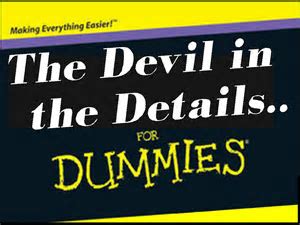

Sore loser or just an idiot?
Now that foundation is exposed. Those that follow should find it no more difficult than any other subject. Once that is...you begin to ‘get your head around it’. As you have to do in any subject. Try it. Start off with the idiot/ dummy series especially anything written by Dennis Hauck. Followed by authors such as Maurice Nicoll / K. Gest / R. Smolley /T. Freke / I. Regardie / P. F. Case / J. Black / C. Wilson / Celia Green / N. Scully / N. Ellis / J. Houston / P. Curott / A. Collins / Rene Guenon, M. Ling, F. Schuon, [in Mr Schuon case... only with a good head of hair. Dont laugh. Proof? See the 'bald' chap on the Phaistos disc {'Nefertem'?}. Compare to the one with a 'good head of hair' {'Hapi'?}. Whose laughing now? ]..to name but a few. Try and understand what they imply within those same books in relation to the keys mentioned. Then read those excellent researched books by such authors as A. Alford / G. Hancock / R. Bauval / D. Wilcock or Z. Sitchin. Attempt to 'see' what they don't see. That 'inner' one. Go on from there. Note down those common links. That is...if you truly want to understand another subject rather than leave it all, to those first impressions.
David Icke uses a similar term ''Seeing is decoding'' when attempting to understand some of the above. He can indeed 'see' [i.e.,understand] those 'altered states' that this subject has defined for thousands of years [in relation to A/B/C - i.e., 'Macro'] - and defines them like no other - almost in a poetic style - but as soon as anything relating to the 'serpent' is mentioned [this readers opinion only] he falls right off his very own precipice, [ 'Micro']. Mr Sitchin does the same - not quite; however as extreme as Mr Icke.
''At the precipice we change.'' Keanu Reeves. ['The Day the Earth Stood Still' / 2008].
'Seeing is believing' - Dynamo - O2 stadium.

Precipice?
"They build their individual towers of Babel which fall, as a rule, according to the law of all towers of Babel, and experience, sooner or later, a salutary fall, as is the teaching of the 16th card of the Tarot. They do not fall from a real height into a real abyss; it is only from an imaginary height that they fall only to the ground, i.e., they learn the lesson that we human beings of today have all learned or have still to learn..." [Taken from the book by the author Tomberg].
Question. Has that single {obsession?} been seeded from elsewhere? i.e.,...
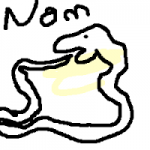 "It is clear - and other mediums confirm this - that people like me are chosen to do our work. I've often been asked, who does the choosing, and i always answer: ' I wish i knew! Because i'd like to have a few words with him! ' I was often aware, however, that certain people were training me, particular when i was healing, including the doctor who had first made contact with me {i.e., deceased}. I saw a lot of him during those early days, and began to communicate with him telepathically...Other spirits arrived, wanting to work with me. Two of them i hesitated to write about, because i realise that the stories sound so incredible. There was a phase when i began seeing rather frightening pictures of snakes, and found myself writing a lot of poetry. I was in bed one night when a man appeared and said: 'I'm William Blake, and i'd like to work with you.' It was he who was sending me the drawings. At that time i had no idea who he was. All i knew, was that i thought his pictures were creepy. I said, 'Please go away. I don't want this'. When a friend told me that Blake was a famous mystical artist and poet, i went to the library to find out more about him, and saw drawings exactly like those he had been sending me. After about two weeks of being shown these terrifying pictures, i finally said to him: 'Look, will you please push off! ' I never saw him again. [Extract from the book 'Mind to Mind' by Betty Shine].
"It is clear - and other mediums confirm this - that people like me are chosen to do our work. I've often been asked, who does the choosing, and i always answer: ' I wish i knew! Because i'd like to have a few words with him! ' I was often aware, however, that certain people were training me, particular when i was healing, including the doctor who had first made contact with me {i.e., deceased}. I saw a lot of him during those early days, and began to communicate with him telepathically...Other spirits arrived, wanting to work with me. Two of them i hesitated to write about, because i realise that the stories sound so incredible. There was a phase when i began seeing rather frightening pictures of snakes, and found myself writing a lot of poetry. I was in bed one night when a man appeared and said: 'I'm William Blake, and i'd like to work with you.' It was he who was sending me the drawings. At that time i had no idea who he was. All i knew, was that i thought his pictures were creepy. I said, 'Please go away. I don't want this'. When a friend told me that Blake was a famous mystical artist and poet, i went to the library to find out more about him, and saw drawings exactly like those he had been sending me. After about two weeks of being shown these terrifying pictures, i finally said to him: 'Look, will you please push off! ' I never saw him again. [Extract from the book 'Mind to Mind' by Betty Shine].
Betty Shine the first person David Icke went to see, {after reading?}: Shortly after experiencing his own unusual events.
Proving the viability of research over those first impressionable ones {'shadow' ones?}.
Refresher: ''Denial of an aspect of wholeness is the key ingredient in the formation of the shadow." [Demetra George].
"Despite his success Icke wrote that in 1989 was a time of considerable personal despair, and it was during this period he began to feel a presence around him...Icke visited B. Shine four times - during the third meeting in 1990 he felt ''something like a spiders web on his face...'' [Wiki/D. Icke].
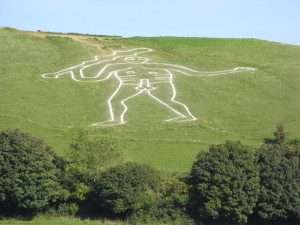
Colossi?

The Colossus of Rhodes.
'Shadowland :{Spider World}' by C. Wilson.
'Arachne Rising: The Search for the Thirteenth Sign of the Zodiac' / J. Vogh.
Analogy of same..."I often reflected that my majestic master could easily have been an emperor or world-shaking warrior had his mind been centered on fame or worldly achievement. He had chosen instead to storm those inner citadels of wrath and egotism whose fall is the height of a man." [Extract from the book 'Autobiography of a Yogi' ]. Try ''giant''.
Shadow = ''archon'' ?

Every village has one?
A present day example..."Shortly after film school i was elevated to get into Art College to finally study a fine arts degree...Unfortunately , both the experience of film school and art school were littered with an array of tough challenges. And although i was at long last, pursuing my ambition of being an artist, i was steadily becoming a little worse mentally each day, aligning myself with a coterie of the wrong sort of people in London and setting myself up for a colossal fall." [Taken from the book by Q. S. Lam].
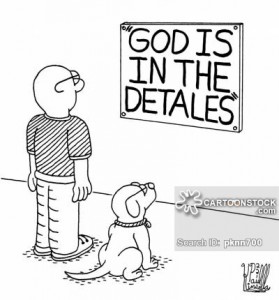 As an example, {i.e.,in relation to an understanding of the 'serpent' symbol} - page 202 'Genesis Revisited'/ Z. Sitchin under the heading 'The Emblem of Entwined Serpents' "In the biblical tale of Adam and Eve in the garden of Eden, the antagonist of the lord god who had caused them to acquire 'knowing' [ the ability to procreate] was the Serpent, Nahash in Hebrew. The term has two other meanings: 'he who knows secrets' and 'he who knows copper'. These other meanings or word plays are found in the Sumerian epithet BUZUR for Enki, which meant 'he who solves secrets' and 'he of the metal mines'. I have therefore suggested in previous writings that, in the original Sumerian version, the 'Serpent' was Enki. His emblem was entwined serpents, it was the symbol of his cult center at Eridu [a], of his African domains in general [b], and of the pyramids in particular [c]; and it appeared on Sumerian illustrations on cylinder seals of the events described in the bible. What did the emblem of entwined serpents- the symbol for medicine and healing to this very day- represent? The discovery by modern science of the double helix structure of DNA offers the answer: the entwined serpents emulated the structure of the genetic code, the secret knowledge of which enabled Enki to create the Adam and then grant Adam and Eve the ability to procreate. The emblem of Enki as a sign of healing was invoked by Moses when he made a nehash nehosheth- a 'copper serpent'- to halt an epidemic afflicting the Israelites. Was the involvement of copper in the triple meanings of the term and in the making of the copper serpent by Moses due to some unknown role of copper in genetics and healing."
As an example, {i.e.,in relation to an understanding of the 'serpent' symbol} - page 202 'Genesis Revisited'/ Z. Sitchin under the heading 'The Emblem of Entwined Serpents' "In the biblical tale of Adam and Eve in the garden of Eden, the antagonist of the lord god who had caused them to acquire 'knowing' [ the ability to procreate] was the Serpent, Nahash in Hebrew. The term has two other meanings: 'he who knows secrets' and 'he who knows copper'. These other meanings or word plays are found in the Sumerian epithet BUZUR for Enki, which meant 'he who solves secrets' and 'he of the metal mines'. I have therefore suggested in previous writings that, in the original Sumerian version, the 'Serpent' was Enki. His emblem was entwined serpents, it was the symbol of his cult center at Eridu [a], of his African domains in general [b], and of the pyramids in particular [c]; and it appeared on Sumerian illustrations on cylinder seals of the events described in the bible. What did the emblem of entwined serpents- the symbol for medicine and healing to this very day- represent? The discovery by modern science of the double helix structure of DNA offers the answer: the entwined serpents emulated the structure of the genetic code, the secret knowledge of which enabled Enki to create the Adam and then grant Adam and Eve the ability to procreate. The emblem of Enki as a sign of healing was invoked by Moses when he made a nehash nehosheth- a 'copper serpent'- to halt an epidemic afflicting the Israelites. Was the involvement of copper in the triple meanings of the term and in the making of the copper serpent by Moses due to some unknown role of copper in genetics and healing."
 'Serpent' in relation to 'the fall' - by way of - mettle of the mind?
'Serpent' in relation to 'the fall' - by way of - mettle of the mind?

Sore loser? American or UN-American?
Closer to the mark: "The ancient ones of early eastern Christianity taught that, in relation to intruding thoughts, we should be so vigilant that as soon as they ''show there heads, like a serpent appearing through a hole, we must cut it off''! This is a potent use of 'stop exercise' which is also meant to halt the entry and influence of ''I's'' that seek to claim our identity. The more you live in a more quiet inner place {an inner sanctuary} where features {negative ones?} cannot take over, the more you will see the difference between passing thoughts and feelings and your deeper self." ['Wisdom of the 4th Way'].
From a different perspective: "Gandalf! - Its Thorin.'....'YES and Fili , Kili and Dwalin. He's taking his best warriors . To cut off the head of the snake.'' {Bilbo Baggins and Gandalf - 'The Hobbit: The Battle of the Five Armies'].
"Where no feet may tread."
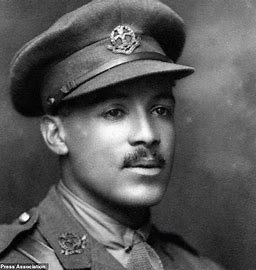
Walter Tull. Military Cross. A team mate of the 'Cobblers'. One of the first.

Something closer to the 'mark'.
Side step: "Adrian Gilbert, who was previously mentioned, has written several books on the subject of ancient knowledge and esoteric wisdom. In his book 'Signs in the Sky' he noted that the term 'serpent' was frequently used in ancient times to define a shadow cast by the sun. I couldn't help remembering that the Celtic cross in Northamptonshire shows an image of intertwined serpents on the circular head. This would make sense if the cross were used for measurements using the shadow of the sun, and a shadow was regarded in ancient times as a serpent." [From the book by K. Gest].
All things whether animate or inanimate have their 'flip side'. Positive/negatives. That ''duality'' principle that ALL use even before the written word came into common use.
Serpent of chaos?
'Shadow' in relation to ''the fall'' {S/W?}. All as a means...
Question. What would ''anima'' {positive aspect} be represented by? AND what direction would it be associated with, i.e.,bottom up or top down?
Something even closer to the 'mark': "....the focus of spiritual initiation and evolution were related as an ''unveiling of Isis''....The reference to being ''conceived'' through the goddess is a clear relation to ''divine birth'' i.e.,to be ''born again''....It is also a reference to the 'Serpent Power'. Isis and sister are the goddess of the serpent power. Being 'born' of them means being born of elevated consciousness....which is the innate life force, latent in every human being." [Page 191 'Egyptian Book of the Dead' / M. Ashby].
''The lengthened shadow of man is history...'' Quote from within.
![images[3]](https://esotericbasics.co.uk/wp-content/uploads/images31.png)
''Meanders'' in a different form. 'See' it?
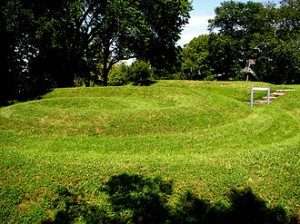
'Snake/Dragon head' on land. 'tail' in the sea.
"There is more to the serpent than meets the eye. Its coils lie at the very foundation of the Western world, and so it is no wonder that is was the foundation stone of the West's greatest myths and legends." Back cover to the book 'The Serpent Grail: The Truth Behind the Holy Grail, The Philosopher's Stone and the Elixir of Life' by P. Gardiner and G. Osborn.
Another example but now in the 'Macro' sense of the 'word' {i.e.,'serpent' }..."As mentioned, the lengthwise {E/W?} axis of Izapa's ballcourt {Mayan culture} is aligned to the December solstice horizon. A monument on the eastern end of the ballcourt shows one of the 'Hero Twins' standing victorious over a completely fallen Seven Macaw {who must be deposed before One Hunahpa can be 'reborn'}. On the western end of the ballcourt we find a throne and several small monuments that each encode the different metaphors by which the alignment was understood. 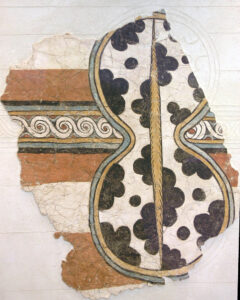
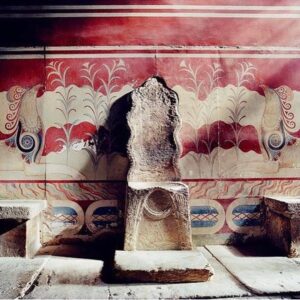
The throne of Minos.
The throne itself has carved legs between which a solar god's head, or solar Ahau face, is emerging. This birth scene faces eastward down the axis of the ballcourt toward the December solstice sunrise, where the convergence of solstice sun and 'dark rift' was tracked. Clearly, the throne depicts the future alignment as a birth. Next to the throne we find a circular stone ring in which a stone ball was placed. In the symbolism of the ball game the December solstice sun is the game ball and the dark rift {or Calactic Center} is the goal ring. Finally, next to the ring and ball we find a serpents head, which, like most ballcourt markers, originally had a solar Ahau face in its mouth. This is the devouring end-of-age image of the sun in the snake's mouth - implying that death must precede rebirth." [Authors hypothesis from the book 'Galactic Alignment: The Transformation of Consciousness According to Mayan, Egyptian, and Vedic Traditions' by J. M. Jenkins].
'Joined at the hip': {therefore Gemini/Thigh constellation links}?
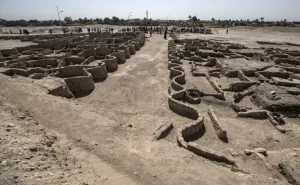
Common factors?
'Shadow' in relation to 'light' as a means to a further {personal?} understanding, {as is the intention of the word 'Throne' in relation to 'West'}. Nothing else. ''End-of-age'' in relation to 'the tail end' of something begins the process {beginning} of something else - defined as the 'end of the world' i.e., death/rebirth {DECEMBER 2012}. Or more to the point {in the 'macro' sense of the 'word'} - the beginning of a new age, i.e., Aquarius - thereafter new symbols {archetypes?} used - but which still explains/explores that SAME subject material {in the form of a 'journey'?}.
![images[3]](https://esotericbasics.co.uk/wp-content/uploads/images3-150x150.png)
In 'journey' form?
"...they have adopted that of Gnosis, which represents simply the notion of learning by intuition." quote within the book by E. Levi.
'God is in the details'.
Mysticism is the source and root of all religions." [Quote from the book by Tomberg]. Link to the word ''Gnosis'' and what it implies, i.e.,in relation to that universal framework and/or the contents of this web page... What the author finally defines as ''spiritual touch'' or ''intuition''.
'Devil in the details'?
"The word 'spiritual' should be associated with the word 'eyes'. This is a reference to the eyes of the mind or heart. To see is to understand." [From the book by T. Nottingham].
A side step..."As for the serpent , the Bible sometimes employs it to symbolize healing and genuine wisdom, but its subtlety is usually sinister. For it came straight from the abhorred fertility cults of the Canaanites and Aramaeans. ['Eve' originally, may not have been derived from 'hay', [life], but from 'hiwya', the Aramaic for snake]......."But 'J' [in relation to the 'authors of the Bible i.e., J, P, D, E ], improves on these traditions by using the serpent to stand for the duality of good and evil, which was familiar to the Persians, and later found a way into the Hebrew religion." [Chapter 9, 'The History of Ancient Israel'. Mentioned elsewhere]. i.e.,..
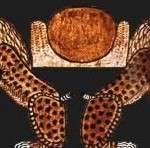 Side note: That ''duality'' that can be represented as {examples of}: King/Queen and/or Thorns/Roses, i.e.,'petals' {flowers?} and/or Dark/Light and/or Bitter/Sweet and/or Spotted/ Unspotted and/or Redeemed/Unredeemed and/or Lucky/Unlucky and/or Ebb/Flow and/or Waxing/Waning and/or Separate/Union and/or Shield/Cup and/or Circle/Square and/or Line/Arc and/or East/West and/or North/South and/or Womb/Tomb and/or Death/Rebirth etc.
Side note: That ''duality'' that can be represented as {examples of}: King/Queen and/or Thorns/Roses, i.e.,'petals' {flowers?} and/or Dark/Light and/or Bitter/Sweet and/or Spotted/ Unspotted and/or Redeemed/Unredeemed and/or Lucky/Unlucky and/or Ebb/Flow and/or Waxing/Waning and/or Separate/Union and/or Shield/Cup and/or Circle/Square and/or Line/Arc and/or East/West and/or North/South and/or Womb/Tomb and/or Death/Rebirth etc.
ALL AS A MEANS....?

'internal' ?
Continued: "...The brain is therefore an organ effecting mimicry, choosing what it is going to mime. It mimes accordingly. Now relevant mimicry is precisely what the Book of Genesis understands by 'cunning' when it says that - " the serpent was more cunning than any other wild creature that the lord god had made" {Genesis iii, 1}. It is, as it were the 'psychological' principle of the serpent, just as enfoldment and movement in a closed circle is its 'dynamic' principle, [i.e.,from 'uncoiled' to coiled. Explained elsewhere. This readers input]. To be cunning is to mime wisdom." [Taken from the book by Tomberg]. ALL as a representation of something. That something that defines a learning process. Represented as 'intelligence' in relation to 'wisdom', i.e.,as represented in one form of expression, with the figures 'Virgil' and 'Beatrice'. Enlarged elsewhere. The real question is - if only for this reader- fact or fiction. A possibility or not?
'Serpent Power' by Sebai Ashby - Just as Dennis Hauck explains Alchemy like no other [if only for this reader,i.e., it was Mr Haucks well grounded understanding - of a difficult subject - that gave this reader his initial inspiration to delve deeper in order to understand the whole] - then Mr Ashby does the same for the ''serpent'', i.e.,what it represents. Try ''precipice'' in the usual box.
This subject not only explains what the 'serpent' truly represents, [as well as other words such as ''copper'' and ''triple'' as already proven]- but understanding the 'divine' relative to A/B/C gives clues as to where that 'start point' is most likely, i.e.,the '12th planet', should there be one, cannot be in [A], the physical world. Think about it, relative to chapter 5, 'The Zelator' and...
"The 'primal revelation', which is referred to by theology and to which natural religion is due, is the hope and faith, which vibrates both in the whole world and in each particular being [generally as a subconscious conviction], that life proceeds from a 'holy' source, that it flows towards an end of supreme worth, and that it is 'gift, benediction and vocation." [Extract taken from the book by Tomberg]. Together with...

A representation of higher or lower or both?
"In speaking of 'higher' or 'lower' worlds, i do not mean to describe an actual physical relation; for in the realm of the spiritual there is no such division, and the words 'high' and 'low' refer only to the place of any particular 'world' on the ladder of causality. To call a world higher signifies that it is more primary, more basic in terms of being close to a primal source of influence; while a lower world would be a secondary world- in a sense a copy. Yet that copy is not just an imitation but rather a whole system, with a more or less independent life of its own, its own variety of experience, characteristics, and properties. The world in which we ordinarily live, with all that it embraces, is called the 'world of action': and it includes the world of both our sensual and non-sensual apprehension. But this world of action itself, is not all of the same essence and same quality. The lower part of the world of action is what is known as the 'world of physical nature' and of more or less mechanical processes...that is to say, the world where nature law prevails; while above this world of physical nature, is another part of the same world, which we may call the 'world of spiritual action'. What is common to these two domains[i.e.,A+B, this readers input] of the 'world of action' is man, the human creature so situated between them that he partakes of both." [page 4, 'The Thirteen Petalled Rose' by A. Steinsaltz]. Think about it, relative to, ...
On what side of the equal sign would 'B' be placed if it was indeed 'primary' over 'A'. Left or right of the equal sign? What would that answer relate to... relative to 'C'?
As a side note - just as Mr Ashby and Mr Hauck have been mentioned - the works of Tomberg - once again; if only for this reader - does the same in relation to the those same universal keys and principles being expressed [and therefore represented] - but now within the Christian and Catholic sub-division - BY WAY OF - the Hermetic one. There is a difference. Can you by now 'see' it yet? If not - study more. As one does in any subject - depending on interest.

Tower {of the fish}?
"...This is why we have repeated so many times in these 'Letters' that practical [i.e.,lived] Hermeticism is neither occult science, nor magic, not gnosis, nor mysticism - but rather their synthesis. For it is a 'tree' not a 'tower'. And it is man himself; the whole man - who is at one at the same time philosopher and magician, gnostic and mystic - who is the 'tree'. " [Extract from the book by Tomberg. 'Letter 16' ].
Tower of Babel? Question. Why should the tree be different? What does it represent?
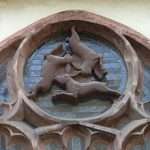 "A working example: "The process John went through to have his revelatory experience, combined with the content of the experience, reveals a spiritual, mystical approach to life. The mystical approach is founded upon a belief that each of us can have an immediate, intuitive perception of spiritual truths {eureka?} that transcend ordinary intellectual understanding by experiencing a direct, intimate union of our soul with god." ['Wisdom of the 4th Way']. 'See' it?
"A working example: "The process John went through to have his revelatory experience, combined with the content of the experience, reveals a spiritual, mystical approach to life. The mystical approach is founded upon a belief that each of us can have an immediate, intuitive perception of spiritual truths {eureka?} that transcend ordinary intellectual understanding by experiencing a direct, intimate union of our soul with god." ['Wisdom of the 4th Way']. 'See' it?
Try ''tongue'' to see something from the Egyptian point of view.
Information gained by way of an ’imaginary’ exercise. Choose your own names. Fill in the blanks. For ‘aspiration / inspiration’ use only, i.e., what these authors refer to as 'practical imagination', [cognitive faculty / eye of horus etc. Explained elsewhere], as opposed to the 'fantasy' aspect of same. Positive aspect of the imagination over its negative. Islams equivalent, the word Barzakh, i.e.,"Barzakh is the world of the imagination that stands as a mesocosm between the spiritual and material worlds. It is the 'interworld', as Henry Corbin calls it." ['The Universal Tree and the Four Birds' by Ibn Arabi].
''Net'' or ''spiders web''?
153?
''Fantasy {phantasia} meant a subjective figment of the mind without objective validity.''
A working example: "The imagination is a 'sun', in the soul of man, acting in his own sphere, as the sun of the earth acts in him." [ Paracelsus].
"Two ways of making a good living....There are two ways of making a good living. One is the result of hard working, and the other, the result of the imagination [requires work, too, of course]. Some may not believe it, but i spent hours perfecting whatever i did." [Taken from Part four, 'on achievement', from the book, 'Striking Thoughts' {Bruce Lee's Wisdom for Daily Living'} by J. Little].
 Or what the author of 'The Sacred History' and 'The Secret History of the World' calls 'idealism',i.e.,"The philosophical term for the 'mind came first' view is 'idealism'. It's a confusing term, because outside academia it is more often used to mean the pursuit of high ideals, while students of philosophy, at least those studying in Anglo-American tradition, encounter it as a quaint theory of knowledge which no one really believes any more and which was last seriously defended in the eighteen century by Bishop Berkeley. For most of history though, idealism was a cosmology and an all embracing heartfelt philosophy of life". [Preface to the book, 'The Sacred History' by J. Black].
Or what the author of 'The Sacred History' and 'The Secret History of the World' calls 'idealism',i.e.,"The philosophical term for the 'mind came first' view is 'idealism'. It's a confusing term, because outside academia it is more often used to mean the pursuit of high ideals, while students of philosophy, at least those studying in Anglo-American tradition, encounter it as a quaint theory of knowledge which no one really believes any more and which was last seriously defended in the eighteen century by Bishop Berkeley. For most of history though, idealism was a cosmology and an all embracing heartfelt philosophy of life". [Preface to the book, 'The Sacred History' by J. Black].
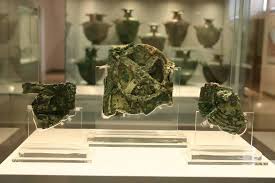 Analogy of same? "...Assuming that irrefutable form of idealism which contents itself with the demonstration that, knowledge being a function of the mind, as the materialists not merely concede, but insist, the universe as we know it is equivalent to the contents of that mind; and assuming also that the mind contains a power able to control thought; then there is no absurdity in asserting that mind may be the master of matter..." [Extract from the book 'The Magister' ].
Analogy of same? "...Assuming that irrefutable form of idealism which contents itself with the demonstration that, knowledge being a function of the mind, as the materialists not merely concede, but insist, the universe as we know it is equivalent to the contents of that mind; and assuming also that the mind contains a power able to control thought; then there is no absurdity in asserting that mind may be the master of matter..." [Extract from the book 'The Magister' ].
"Imagination' is a mental force with power to create matter and also to move it like a magnet. 'God' imagined the world into existence, and through our imagination we become co-creators....An individuals imagination plays a crucial role in moulding that world around that individual. It exerts a pressure on the fabric of space-time, pushing or pulling it, so that the ripples start locally, before spreading out across the universe." [Same book].
Practical example: "You can only dream as far as you can see."

How far?
"My family wanted me to have an arranged marriage - the oldest story in the world - i didn't want one, had a lot of secret relationships, so i ran away - until i decided to confront the problem instead of running from it. Wrote a book about it, thinking it would be a clever way of confronting my parents. It could have gone wrong but it didn't. It worked out. I was just recently looking around the family table at Xmas and seeing all my nephews and nieces now going out with Muslim and Christian - and all this because one of us broke the mould." [ Sathnam Sanghera: Saturday Live / Radio 4 / 20.1.24].

Frog/egg/serpent/bird. Connect them in the internal sense of the word. ''Sweat of the brow'' 'Salt' therefore ''grounded'' link.
"The ancients lived in a cosmos concerned for humanity, and higher mathematics was one way of describing that concern. Some people are hostile to mysticism because they see it as a lapse into lazy or infantile thinking. That is not the case here. The thinking is extraordinary complex and insightful - but it is not empirical thinking. It is the thinking of 'idealism' working itself out into the world and discovering the way the world works, by means of, 'this way' of thinking." [Chapter 6, same book].
"To Jung, the imagination was the key to the secret of nature in alchemy, and the secret of the self in analytical psychology. The 'imaginatio' as the alchemists understood it, is in truth a key that opens the door to the secret of the Opus''. [Extract from the book by M. Katz].
"Mysticism is the source and root of all religions." [Quote from the book by Tomberg]. Link to the word ''Gnosis'' and what it implies, i.e.,in relation to that universal framework and/or the contents of this web page.
Understanding those universal keys within a 'framework' - defines all the above - gives them all - possible substance - a possible form to work on. Before those bigger questions are asked.
Example of same,[positive aspect], could be 'visualizing' oneself in an interview prior to the actual event. Going over what you would like to say, and how you would say it, in order to give a good impression. As a means of giving your self the best possible chance of achieving something that one has an interest in.
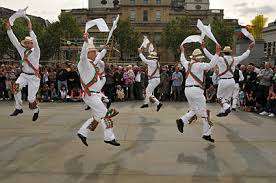 Another example could be... Several friends, [numbers / characters yet unknown], or 'outward bound’ participants come together on a climbing expedition. A ‘fatal’ accident occurs and they all find themselves you know where, [ ‘Afterlife’]. Fortunately each individual has a good understanding of certain subjects. Mythology, Astrology, Sciences, Physics, Religions e.t.c., They pool all these resources of information together and with additional information acquired from the individuals they meet over there begin to understand the purpose of their new environment. Which falls in line with all known ‘esoteric’ lore as briefly explained above...as an example. [ use this link].
Another example could be... Several friends, [numbers / characters yet unknown], or 'outward bound’ participants come together on a climbing expedition. A ‘fatal’ accident occurs and they all find themselves you know where, [ ‘Afterlife’]. Fortunately each individual has a good understanding of certain subjects. Mythology, Astrology, Sciences, Physics, Religions e.t.c., They pool all these resources of information together and with additional information acquired from the individuals they meet over there begin to understand the purpose of their new environment. Which falls in line with all known ‘esoteric’ lore as briefly explained above...as an example. [ use this link].
For example there will be a Muslim / Asian character who amongst other things understands the Quran. Who now besides trying to understand his own religion in relation to his new environment; and visu/versu; goes in search for his older brother who was a member of the Muslim Brotherhood, and who ‘died’ many years previously, [suicide bomber]. He himself, [older brother], since being ‘over there’ has been waiting for his expected ‘just rewards’, [twelve virgins plus paradise. Or is it twenty- four?]. Needless to say he is not a happy chap when nothing shows up. Not even Allah/God.

Any triangles? Seventytwo to enlarge.
Every one agrees regardless of culture or religion that god = allah and allah = god, i.e., Yahwah/YHWH. As explained for the ‘Allah’ equivalent of same ... in that ‘third and final message’...The Quran:- In such books as ‘The Mystical Dimensions of Islam’. By A. Schimmel. As an example. The Quran is composed of what is termed as suras. The largest of which are at its beginning. The smallest towards the end. In other words, recalling Mr Bohr's discipline...from a broad base to a fine point. Do you see anything? One of those ancient symbols. Mentioned elsewhere. Islams esoteric equivalent...
....as are the ’Muqatta-at’. Those ’letters’ that prefix certain sura-s, that not even Muhammad understood. Or at least decided not to mention. It IS surprising however that no mention was made, of same, even within Islams 'Hadiths'. More surprisingly...not even the question.... as what they were, or their importance, has ever been recorded. Every generation since the creation of the Quran up to the present day, have speculated on what those letters mean. Yet no answer came from either Muhammad or within those Hadiths. There has to be a reason... as there is in all things...That inner one? {i.e., in the individual sense of the word}.

Inner or outer?
...The starry inscription at one's birth, i came to understand, is not that man is a puppet of his past. Its messages is rather a prod to pride; the very heavens seek to arouse man's determination to be free from every limitation. God created each man as a soul, dowered with individuality, hence essential to the universal structure, whether in the temporary role of pillar or parasite. His freedom is final and immediate, if he so wills; it depends not on outer but inner victories." [Extract from the book on the life of Paramahansa Yogananda. Enlarged elsewhere ]. Try ''parasite'' {and/or 'its' variations}.
Joffrey Baratheon? {Game of Thrones}.
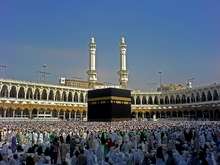 "We now begin a series of seven Surahs [40-46] to which are affixed the Abbreviated letters Ha - Mim [i.e.,part of the Muqatta-at collection]. Chronologically they all belong to the same period, the later Makkan period, and they immediately follow the last Surah in time. As to the precise meaning of Ha - Mim no authoritative explanation is available. If Mim here has a significance to a line similar elsewhere, i.e.,Alif, Lam, Mim - it means the end of things, the last day, and all these Surahs [seven] direct our special attention to that ''Ha''; the emphatic guttural, in contrast to the softer breathing of Alif; may be meant to suggest that the Beginning - is only for the end; the present for the future...But this is mere conjecture, and should be taken for no more than it is worth." [Introduction to Surah 40 of the Quran, by Yusuf Ali]. Think about it in relation to what 'forty' and 'seven' represent within this subject. The tail end of something begins the start of something else? Then try ''ha ha''.
"We now begin a series of seven Surahs [40-46] to which are affixed the Abbreviated letters Ha - Mim [i.e.,part of the Muqatta-at collection]. Chronologically they all belong to the same period, the later Makkan period, and they immediately follow the last Surah in time. As to the precise meaning of Ha - Mim no authoritative explanation is available. If Mim here has a significance to a line similar elsewhere, i.e.,Alif, Lam, Mim - it means the end of things, the last day, and all these Surahs [seven] direct our special attention to that ''Ha''; the emphatic guttural, in contrast to the softer breathing of Alif; may be meant to suggest that the Beginning - is only for the end; the present for the future...But this is mere conjecture, and should be taken for no more than it is worth." [Introduction to Surah 40 of the Quran, by Yusuf Ali]. Think about it in relation to what 'forty' and 'seven' represent within this subject. The tail end of something begins the start of something else? Then try ''ha ha''.
'Mans Search for Meaning' / Viktor Frankl.
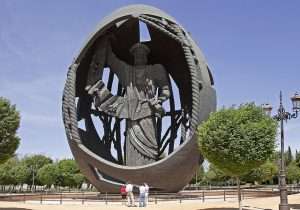
''The Birth of the New Man.'' 'Egg/Incarnation' to enlarge
Possibility of. I.e., "stretching ones envelope." in relation to being on the 'verge', [boundary line] of understanding something new. [Link to Enki, "stretching, his own boundaries". Symbolism of. Mentioned elsewhere].
New Testament equivalent..."Seek and you will find. Knock and it shall be opened". Link to 'doors', false or real, in pagan or Egyptian 'constructions',i.e.,small 'doors' within the shafts in Queens chamber. Mentioned elsewhere.
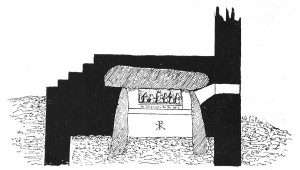 'Alchemy' equivalent: "Neophyte grade {MThIHD} ; meaning 'converted'. The root of the word 'converted', other than its obvious usage in religious terminology, is 'to turn around'. It signifies a turning around of attention to that which is not apparent. It is when the person in Plato's cave first wonders about the shadows on the wall and turns around to see from where they are being cast. This begins a new phase in their life, hence 'Neophyte'; one 'new' to that direction...The word MThChIL is also similar to MThIChH meaning 'stretched', 'extended'. The conversion or transformation that goes on at Neophyte is one where the person is stretched...Interesting by gematria, the word has the value of 488 , the same value as PhThCh, meaning 'gate, 'entrance' 'insight'. " [Extract from the book 'The Magister' ].
'Alchemy' equivalent: "Neophyte grade {MThIHD} ; meaning 'converted'. The root of the word 'converted', other than its obvious usage in religious terminology, is 'to turn around'. It signifies a turning around of attention to that which is not apparent. It is when the person in Plato's cave first wonders about the shadows on the wall and turns around to see from where they are being cast. This begins a new phase in their life, hence 'Neophyte'; one 'new' to that direction...The word MThChIL is also similar to MThIChH meaning 'stretched', 'extended'. The conversion or transformation that goes on at Neophyte is one where the person is stretched...Interesting by gematria, the word has the value of 488 , the same value as PhThCh, meaning 'gate, 'entrance' 'insight'. " [Extract from the book 'The Magister' ].
Landscape equivalent - a u-turn. See it?
"Indeed the material Ka'ba in the city of Makka is kept clean for the pilgrims. How much cleaner should one keep the inner Ka'ba upon which truth will gaze. After these preparations the inner pilgrim wraps himself in the light of the holy spirit, transforming his material shape into the inner essence, and circumambulates the Ka'ba of the heart, inwardly reciting the second divine name - Allah, the proper name of god. He moves in circles because the path of essence is not straight but circular. ITS end is its beginning. Then he goes to the 'Arafat' of the heart, that inner place of supplication, that place where one hopes to know the secret of 'There is no god but He, Who is One and Who has no partners......" [Chapter 18, 'Secret of Secrets' by Al - Jilani]. Think on it relative to what was once known as the ''Great Year.'' Also put ''supplication'' in the box.
Question. Any u-turn within that 'landscape'?
REFRESHER: Hebrew equivalent {i.e.,Deuteronomy}: "If you return to your god. If with all your heart and soul you obey his 'voice'. Then he will bring back your captives. Should you have been banished to the very sky's end your god will gather you again - even from there."

Shed to enlarge.
''The Feast of Fools or Festival of Fools was a feast day on January 1 celebrated by the clergy in Europe during the Middle Ages, initially in Southern France, but later more widely. During the Feast, participants would elect either a false Bishop, false Archbishop, or false Pope.''
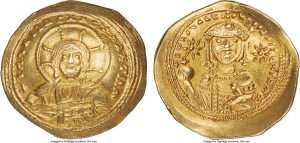 And/or: ''A powwow is a gathering with dances held by many Native American and First Nations communities. Powwows today allow Indigenous people to socialize, dance, sing, and honor their cultures. Powwows may be private or public, indoors or outdoors. Dancing events can be competitive with monetary prizes.''
And/or: ''A powwow is a gathering with dances held by many Native American and First Nations communities. Powwows today allow Indigenous people to socialize, dance, sing, and honor their cultures. Powwows may be private or public, indoors or outdoors. Dancing events can be competitive with monetary prizes.''
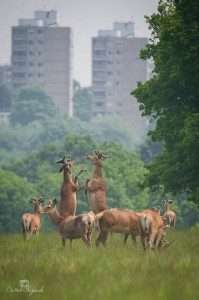 "The only books worth our attention are those which spring from the heart and in turn speak to the heart, the Sufis tell us, and by the 'heart' they do not mean the source of psychological feelings but something much more profound. 'Heart' can be understood as the very center of our psycho - physical being, as the meeting place of soul and mind or, more precisely, as the focal point [link to 'anchor'[key]], where the mind, which in itself is all knowledge or light, is reflected in the mirror of the 'soul'.....
"The only books worth our attention are those which spring from the heart and in turn speak to the heart, the Sufis tell us, and by the 'heart' they do not mean the source of psychological feelings but something much more profound. 'Heart' can be understood as the very center of our psycho - physical being, as the meeting place of soul and mind or, more precisely, as the focal point [link to 'anchor'[key]], where the mind, which in itself is all knowledge or light, is reflected in the mirror of the 'soul'.....
''...meeting place'' in relation to 'crossover' point - therefore that link to horizontal/vertical symbolism. Purpose of.
Side note: "Perhaps it is the ancient importance of this Dog on the Nile that has given the popular name - the Egyptian X - to the figure formed by the stars Procyon and Betelgeuze, Naos and Phaet - with Sirius at the vertices of the two triangles and the center of the letter. On our maps Sirius marks the nose of the Dog...Some have called it Mazzaroth of the Book of Job..." [Info. on Canis Major 'Star Names and Their Meaning'].
Try ''rose'' and/or ''Rosicrucians'' for something further.
"As the Prophet says, 'There is a piece of meat in mans body - when it is in a good state, the whole being improves, and when it is in a bad state, the whole being falls apart. Be aware, that piece of meat is the heart." [Extract taken from chapter 14, 'The Secret of Secrets'].
''gather'' in relation to ''falls apart'' - Recall Part 1.
Side note: "Consciousness is that which one carries within oneself, which rules from within to without until it has totally enlightened us, and it never leaves us stranded, regardless of the neglect into which one might have allowed it to fall." ['Journey into the Light']. Try ''fall''.
 .....We have anticipated then, one of the principle themes of the book by Ibn Arabi, a work concerned essentially with the role of various 'prophets' in 'revelation'. Ibn Arabi names some 27 prophets, all of whom are mentioned in the Quran, each one is a 'vessel' {vase?} of divine wisdom [i.e.,representational of. This readers input] which, owing to this fact, takes on human nature with its limitations, all the while remaining one and indivisible in itself... ''Water derives its color from the vessel that holds it,'' Sufi al-Junaid maintains. This law which places in opposition, the light of revelation and a plan which reflects and confines it, is repeated on every level of the macrocosm and microcosm, of the world, and of man." [Preface to the book,'The Bezels of Wisdom' by Ibn Arabi. Emphasis, this readers].
.....We have anticipated then, one of the principle themes of the book by Ibn Arabi, a work concerned essentially with the role of various 'prophets' in 'revelation'. Ibn Arabi names some 27 prophets, all of whom are mentioned in the Quran, each one is a 'vessel' {vase?} of divine wisdom [i.e.,representational of. This readers input] which, owing to this fact, takes on human nature with its limitations, all the while remaining one and indivisible in itself... ''Water derives its color from the vessel that holds it,'' Sufi al-Junaid maintains. This law which places in opposition, the light of revelation and a plan which reflects and confines it, is repeated on every level of the macrocosm and microcosm, of the world, and of man." [Preface to the book,'The Bezels of Wisdom' by Ibn Arabi. Emphasis, this readers].
Ibn al-Arabi who himself was born on the twenty seventh of Ramadan in A.H.560.
Side note: ''Ramadan (Arabic: رَمَضَان, romanized: Ramaḍān [ra.ma.dˤaːn];[a] also spelled Ramazan, Ramzan, Ramadhan or Ramathan) is the ninth month of the Islamic calendar,[9] observed by Muslims worldwide as a month of fasting (sawm), prayer, reflection and community.[10] A commemoration of Muhammad's first revelation,[11] the annual observance of Ramadan is regarded as one of the Five Pillars of Islam[12] and lasts twentynine to thirty days, from one sighting of the crescent moon to the next....
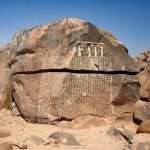
'Any 'heat' emitted?

"Head Jar"?
The word Ramadan derives from the Arabic root R-M-Ḍ (ر-م-ض) "scorching heat",[27] which is the Classical Arabic verb "ramiḍa (رَمِضَ)" meaning "become intensely hot – become burning; become scorching; be blazing; be glowing".
Ramadan is thought as one of the names of God in Islam by some, and as such it is reported in many hadiths that it is prohibited to say only "Ramadan" in reference to the calendar month and that it is necessary to say "month of Ramadan", as reported in Sunni,[28][29][30][31][32][33][34] Shia[35][36][37][38][39][40] and Zaydi[41] sources.''
Muslims hold that all scripture was revealed during Ramadan, the scrolls of Abraham, Torah, Psalms, Gospel, and Quran having been handed down on the first, sixth, twelfth, thirteenth (in some sources, eighteenth)[42] and twenty-fourth Ramadans,[year needed] respectively.[43][self-published source] Muhammed is said to have received his first quranic revelation on Laylat al-Qadr, one of five odd-numbered nights that fall during the last ten days of Ramadan.
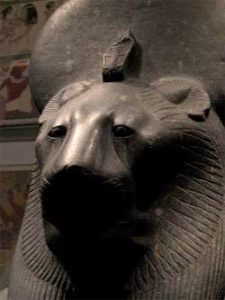
Brow to nose = 'T' shape?
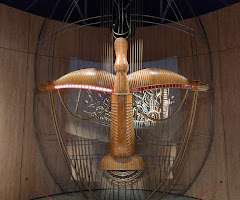
Brow, eyes, nose, mouth. Width or length?
Laylat al-Qadr is considered the holiest night of the year.[55][56] It is generally believed to have occurred on an odd-numbered night during the last ten days of Ramadan; the Dawoodi Bohra believe that Laylat al-Qadr was the twentythird night of Ramadan.'' [Wiki].
Continued: "The solar calendar yielded 12 months, each consisting of thirty days. Every day was associated with a mythic event...such as the 27th of ATHYS {our November 7}, which was the day that Horus and Set made peace after their struggle." [From the book by R. Clark].
Side note: "Sharatan and Mesarthim {Stars in Aries} constituted the 27th nakshatra {'Lunar Mansions'} - the Ashwins or horseman...The two horsemen corresponding to the Gemini of Rome, but figured as a horses head...'' [Page 82, 'Star Names Their Lore and Meaning']. Try ''Ashwin'' to make a connection to the greater whole. Part 2.
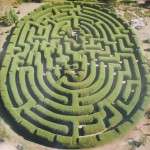
 "Twentyseven is interesting, from the mathematical viewpoint, as the third power of the sacred three, thus as Plutarch noted, as first odd, or masculine cube. It also belongs to the lunar numbers, since the moon is at best visible 3x9 nights. Like 18, 27 appears frequently in traditions where 9 was of importance...In Russian folktales the hero often traverses 3x9 countries before reaching his goal. The number is common in the folk traditions of eastern Europe, such as collecting 27 flowers on St. John's night for protection or prognostication. In Lithuania describes the planting and growing of 3x9 rue, again for protective purposes. 27 is mentioned in ancient Egypt, but in a negative sense. In a board game with 30 squares, the 27th, called water, [wet/dry and/or 'lunar' link. This readers input]- means loss: the player who lands on it loses the game, and it has been speculated that dim memories of the dark moon are reflected in this negative result." [Taken from 'The Mystery of Numbers' by Annemarie Schimmel].
"Twentyseven is interesting, from the mathematical viewpoint, as the third power of the sacred three, thus as Plutarch noted, as first odd, or masculine cube. It also belongs to the lunar numbers, since the moon is at best visible 3x9 nights. Like 18, 27 appears frequently in traditions where 9 was of importance...In Russian folktales the hero often traverses 3x9 countries before reaching his goal. The number is common in the folk traditions of eastern Europe, such as collecting 27 flowers on St. John's night for protection or prognostication. In Lithuania describes the planting and growing of 3x9 rue, again for protective purposes. 27 is mentioned in ancient Egypt, but in a negative sense. In a board game with 30 squares, the 27th, called water, [wet/dry and/or 'lunar' link. This readers input]- means loss: the player who lands on it loses the game, and it has been speculated that dim memories of the dark moon are reflected in this negative result." [Taken from 'The Mystery of Numbers' by Annemarie Schimmel].
Death-rebirth?
"Darkness at noon." {crucifixion}.
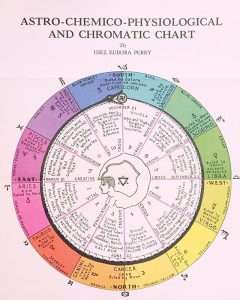
The phrase “hot on the heels” means in close pursuit of someone or something, or immediately after some event1. It originates from hunting terminology, where the “on the heels” part refers to a hunter’s literal closeness behind their quarry. The word “hot” alludes to the warmth of an active living creature, as opposed to the cold of a corpse or the unconsciousness of being “out cold” 1. When hounds are close to their prey, they are said to be “in hot pursuit.”
Side note: I am very connected to the zodiac and was wondering if there is a link between the stars and the timing of Passover. I have also noticed that the Seder always coincides with the full moon. What is the significance of all this?

The Church of Notra Dame de France - Soho - London. Aries-Pisces?
Answer: There is indeed deep astrological significance to the date of Passover. We celebrate the festival of freedom on the 15th of the Jewish month of Nissan, the night the Israelites were freed from Egypt. This is the full moon of the month of Aries, the ram.
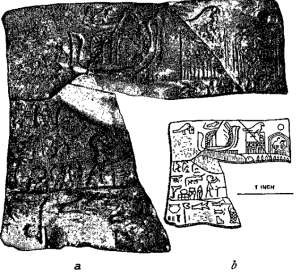
Tablet of Menes: "Inscription bearing Hor-Aha's serekh together with a Nebty-name expressed with the game-board hieroglyph, which could be read mn."

"The crucifixion took place at Passover. which always takes place on the full moon - it therefore means a lunar eclipse NOT solar eclipse took place {as with Abraham in Canaan in 53BC}. Some accounts say that on the night of the crucifixion the moon rose blood red - indicative of a total lunar eclipse. Records say that indeed their was such an eclipse on the 3rd April 33AD just after sunset in what later became known as the land of modern Israel. {'Eclipses: Radio 4 / 20.11.25}.
CONTINUED: Egypt more 'solar' {'known'} than 'lunar' {'UNknown'} ? As a means...?
OR static/dynamic link?
Refresher: ''A doctors prognosis comes from the Latin 'to know before' {i.e., prediction}.''
Oracle?
Question. Can you see the connection between ''water'' ''dark'' and ''negative''? What about dry/light and positive? = ''reflection of a positive result''; represented as the full moon? Question 2. What would that answer indicate? Try ''cube'',i.e.,what does it represent? and why ''masculine''. Clue. Shadow or anima? As a start [or anchor] point, of something. Try ''twentyseven''.

'Spirit' or 'Soul'?
Side note: Passover, also called Pesach (/ˈpɛsɑːx, ˈpeɪ-/;[1] Biblical Hebrew: חַג הַפֶּסַח, romanized: Ḥag hapPesaḥ, lit. 'Pilgrimage of the Passing Over'), is a major Jewish holiday and one of the Three Pilgrimage Festivals. It celebrates the Exodus of the Israelites from slavery in Egypt.[2]
According to the Book of Exodus, God commanded Moses to tell the Israelites to slaughter a lamb and mark their doorframes with its blood, in addition to instructions for consuming the lamb that night. For that night, God would send the Angel of Death to bring about the tenth plague, in which he would smite all the firstborn in Egypt. But when the angel saw the blood on the Israelites' doorframes, he would pass over their homes so that the plague should not enter (hence the name)
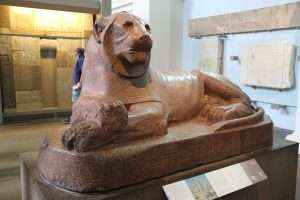
Gebel Barkal lions. At rest/peace? Same lion form found buried next to King Hor-Aha at Abydos. "Still"?

Continued: Now in its positive sense of the 'word' {i.e., ''manifested''}: "As for jewellery, we cite only the bracelet of king Djer, {1st Dyn.} made of 27 elements each having the shape of a palace-facade crowned by a falcon. Thirteen gold parts, poured molten into a mold and then chiselled and burnished, alternate with fourteen turquoise elements." ['Sacred Science'].
Refresher: ''Turquoise is the traditional birthstone for December.''
Side note: The 27 Club is an informal list consisting mostly of popular musicians,[2][3][4][5][6] often expanded by artists, actors, and other celebrities who died at age 27. Although the claim of a "statistical spike" for the death of musicians at that age has been refuted by scientific research, it remains a common cultural conception that the phenomenon exists, with many celebrities who die at 27 noted for their high-risk lifestyles.

The Oxford English Dictionary cites Ælfric's 10th-century glossary, in which henge-cliff is given the meaning 'precipice', or stone; thus, the stanenges or Stanheng "not far from Salisbury" recorded by 11th-century writers are "stones supported in the air". In 1740, William Stukeley notes: "Pendulous rocks are now called henges in Yorkshire ... I doubt not, Stonehenge in Saxon signifies the hanging stones."[14] Christopher Chippindale's Stonehenge Complete gives the derivation of the name Stonehenge as coming from the Old English words stān 'stone', and either hencg 'hinge' (because the stone lintels hinge on the upright stones) or hen(c)en 'to hang' or 'gallows' or 'instrument of torture' (though elsewhere in his book, Chippindale cites the 'suspended stones' etymology).[15]
'Cursus' at Stonehenge?
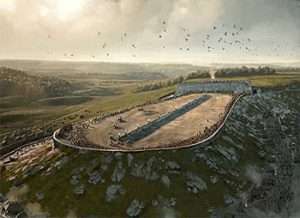
Alte Burg. Described as an oval shape 'hippodrome'. The first of its kind.
"In Egyptian hieroglyphs, a cartouche /kɑːrˈtuːʃ/ is an oval with a line at one end tangent to it, indicating that the text enclosed is a royal name.[1] The first examples of the cartouche are associated with pharaohs at the end of the Third Dynasty, but the feature did not come into common use until the beginning of the Fourth Dynasty under Pharaoh Sneferu. While the cartouche is usually vertical with a horizontal line, if it makes the name fit better it can be horizontal, with a vertical line at the end (in the direction of reading). The ancient Egyptian word for cartouche was shenu, and the cartouche was essentially an expanded shen ring. Demotic script reduced the cartouche to a pair of brackets and a vertical line.
Of the five royal titularies it was the prenomen (the throne name), and the "Son of Ra" titulary[2] (the so-called nomen name given at birth), which were enclosed by a cartouche."
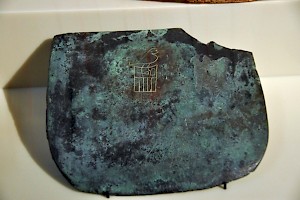
Axe blade with the serekh of king Aha
Less well-known are the square cartouches. Egyptian rulers had more than one name: a personal name and several ones taken at their installation. During the first dynasties, the ruler's most important name was written in the square serekh, which means "that which makes known", i.e., the chosen identity of the ruler.
An example can be seen on the alabaster cup of King Djer, Narmer’s second successor. In the lower register, we can recognize a stylized representation of the façade of a palace. In the upper register, we can read the royal name, Djer. Finally, the square is surmounted by a falcon.

East to West?
We do not have religious literature from this early age, but when we are able to read sacred Egyptian texts, this bird represents the god Horus, who represented cosmic order and protected the king. It is likely – although we cannot prove it – that the falcon on the serekh represented the same deity, and therefore, the royal name inside the serekh is called his "Horus name".
Only king Peribsen, one of the rulers of the Second Dynasty, replaced the falcon with the animal that is usually associated with the god Seth, who represented chaos and was the opponent of Horus. His successor Khasekhemwy had a serekh with both animals. After these two unusual kings, the rulers of the Third Dynasty returned to the falcon serekh, while the kings of the Fourth Dynasty no longer stressed their Horus names, and instead focused on the names that were written in cartouches."
Side note: "Cartouche" = oval in shape like the 'Hippodrome'.
And/or: The nearby Hagia Irene ("Holy Peace") church was completed earlier and served as cathedral until the Great Church was completed. Besides Hagia Irene, there is no record of major churches in the city-centre before the late 4th century.[24] Rowland Mainstone argued the 4th-century church was not yet known as Hagia Sophia.[27] Though its name as the 'Great Church' implies that it was larger than other Constantinopolitan churches, the only other major churches of the 4th century were the Church of St Mocius, which lay outside the Constantinian walls and was perhaps attached to a cemetery, and the Church of the Holy Apostles.[24]
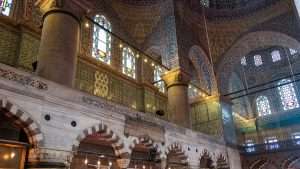
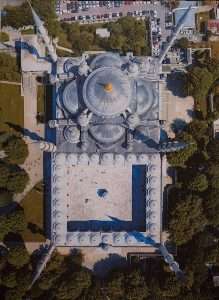 The church itself is known to have had a timber roof, curtains, columns, and an entrance that faced west.[24] It likely had a narthex and is described as being shaped like a Roman circus.[28] This may mean that it had a U-shaped plan like the basilicas of San Marcellino e Pietro and Sant'Agnese fuori le mura in Rome.[24] However, it may also have been a more conventional three-, four-, or five-aisled basilica, perhaps resembling the original Church of the Holy Sepulchre in Jerusalem or the Church of the Nativity in Bethlehem.[24] The building was likely preceded by an atrium, as in the later churches on the site.[29]
The church itself is known to have had a timber roof, curtains, columns, and an entrance that faced west.[24] It likely had a narthex and is described as being shaped like a Roman circus.[28] This may mean that it had a U-shaped plan like the basilicas of San Marcellino e Pietro and Sant'Agnese fuori le mura in Rome.[24] However, it may also have been a more conventional three-, four-, or five-aisled basilica, perhaps resembling the original Church of the Holy Sepulchre in Jerusalem or the Church of the Nativity in Bethlehem.[24] The building was likely preceded by an atrium, as in the later churches on the site.[29]
The first church on the site was known as the Magna Ecclesia (Μεγάλη Ἐκκλησία, Megálē Ekklēsíā, 'Great Church')[21][22] because of its size compared to the sizes of the contemporary churches in the city.[13] According to the Chronicon Paschale, the church was consecrated on 15 February 360, during the reign of the emperor Constantius II (r. 337–361) by the Arian bishop Eudoxius of Antioch.[23][24] It was built next to the area where the Great Palace was being developed.
Continued: There has been no shortage of explanations for these changes, but in fact we just don’t know why Peribsen and Khasekhemwy preferred another animal, and why the rulers from the Fourth Dynasty on preferred other names.''
Side note: Expeditions by Sneferu { 'Smiter of Barbarians'} to the Sinai for turquoise. And/or Hathor Lady of turquoise miners. And/or ''The ratio between the meanders of a river and its width is always somewhere between 10-14." [B. Cox].
Define the parts to 'see' the whole. BEFORE those two bigger questions are asked.

Analogy: ''The Lady with balls.'' : 'Bull-of-the-mother'?
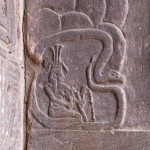 Working example: ''A late text says of Mut 'she is the mother of mothers who gives birth to every god, the wonderful snake who wound herself around her father Re and placed him on earth as Khons'...her most important center lay across from Hierakonpolis, and to her belonged the per-wer shrine....Khons-identified person is said to be able to penetrate into 'the finger, toe, body, arm, the knee and head of Osiris' and grow like the plants, being adorned 'like the turtles' {i.e., Spell 310 +311}. Covered with such a shell {'carapace'?}, the person becomes an incarnation of the moon god, though strangely...in oppositiion to the rising sun of the east. 'Re lives, the turtle dies'....explained by the fact that the new crescent moon is first observed in the West each month as the sun is setting. He replaces Re in the underworld {i.e., the old man of the west}...illuminating the darkness for those on earth....Like Re identified with E/W: 'comes into being like Khepri'....wears the turquoise Menit necklace - over his 'shoulders'...and holds the Uas scepter {Was}...'Iam the double lock of hair that is on the bald'....only fully understood with Min -Amun-Bull-of-his-Mother...'' [Pages 78-80 'Hathor Rising' / A. Roberts].
Working example: ''A late text says of Mut 'she is the mother of mothers who gives birth to every god, the wonderful snake who wound herself around her father Re and placed him on earth as Khons'...her most important center lay across from Hierakonpolis, and to her belonged the per-wer shrine....Khons-identified person is said to be able to penetrate into 'the finger, toe, body, arm, the knee and head of Osiris' and grow like the plants, being adorned 'like the turtles' {i.e., Spell 310 +311}. Covered with such a shell {'carapace'?}, the person becomes an incarnation of the moon god, though strangely...in oppositiion to the rising sun of the east. 'Re lives, the turtle dies'....explained by the fact that the new crescent moon is first observed in the West each month as the sun is setting. He replaces Re in the underworld {i.e., the old man of the west}...illuminating the darkness for those on earth....Like Re identified with E/W: 'comes into being like Khepri'....wears the turquoise Menit necklace - over his 'shoulders'...and holds the Uas scepter {Was}...'Iam the double lock of hair that is on the bald'....only fully understood with Min -Amun-Bull-of-his-Mother...'' [Pages 78-80 'Hathor Rising' / A. Roberts].

Homunculus.
Refresher: ''Fifteen represents the zenith of lunar power, and its relation to the moon can be deduced from the name of an old German measure called Mandel, 'little moon, part of a moon', which consisted of 15 items such as eggs or other small things....Sacred to Ishtar {'5'} + sum of first five integers as well as product of two sacred numbers {3x5} + quarter of 60 - highest number {of god} in Babylon culture...'' ['Mystery of Numbers'].
Venus? 8 beams?
Fifteen Stela's at the boundaries at Amarna? Can that number tell us anything about 'Nefertiti'?
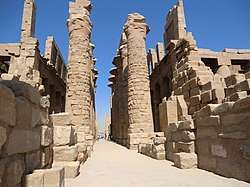
Karnak {'the palaces'}. ''Mountain low, Valley high.''
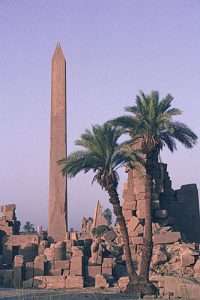
Largest one in Egypt. Hatshepsut's at Karnac. Made of pink grante. Two of them 'penetrate' the ceiling at Karnac - according to some - because Thutmose III wanted to hide them. Disown them. In a certain spot on TOP of that 'ceiling' {purposely envisaged?}, one can LOOK BACK and 'SEE' where one has come from {hindsight/foresight?]. The Beautiful Feast of the Valley' - Egypts most important.
Side note: ''During recent excavations of the pole dwellings on the little LAKE at Burgaeschi, in Canton Solothurn {'landlocked'?}, a group of boulders was discovered wrapped in the bark of birch trees. This very ancient conception of the 'magical' power of stones led to a higher level of culture to the similar importance attached to gems...Another myth belongs to the Navaho Indians of Arizona: In the days of the great darkness, the ancestors of the 'hero' saw the sky Father descending and the Earth Mother rising UP to meet him.They united, and on top of the 'mountain' where the union took place the ancestors found a little figure {'ishon'?}, made of turquoise. This turned into {or in another version gave birth to} Estsanatlehi, 'the woman who rejuvenates or transforms herself'....She was the mother or grandmother of the gods. '' {Page 98 'Alchemical Studies' / C. G. Jung].
A working {synchronistic?} example: ''The colour turquoise became my signature glaze, inspired by the sea around here, that bright beautiful turquoise.'' [Catherine Lucktaylor of WEST Cornwall / 'Rick Stein's Cornwall' / BBC2].
'Caroline' and Khnum to enlarge.

American or UN-American? Who exactly are HIS ancestors!
A work in progess: ''Since the early Bronze Age - and even into the present, a natural spring at Yalburt Yaylasi in the pastorial highlands of Konya Province in Central Turkey {ancient Anatolia} has been a deep human engagement with water...Especially the limestone lined pool by the Hittite king, as a monument to himself - inscribed with his military conquests in S/W Anatolia...Critical for the Hittite agricultural and pastorial society + religious rituals. Many other ''monuments'' built on springs. They saw them as ''direct connection to the underworld and envisioned the point where water comes out of the rock as a portal through which to speak to the ancestors {'AFAR'?}....International treaties were signed close to them, so the ancestors could be witnesses.'' [Page 28 'Archaeology' / March/April / 2023].
Alter of Witness or Sacrifice?
'Sheep decans'?

Astro ceiling in Senenmut bare tomb chamber. Hatshepsut's consort. 'Mars' omitted.
And/or: ''The wolf is the animal of Mars....This hot and bilious man is iron {only?}....whose complexion is choleric....That 'metal', though it begotten by the virtue of all the stars and planets { i.e., by the STRAIGHTWAY, in order to produce out of nothing a corporeal imagination}, is nevertheless begotten in the earth by virtue of the most high and mighty Pole Star called the Great Bear....Mars is also called the Daemogorgon: ''ancestor of all the gods of the Gentiles.'' [Page 141].
'Line of Sight'.
''When the son is brought to life by the opus, he becomes a ''warrior fire'' or a ''fighter of fire.'' [Page 148 'Alchemical Studies' / C.G. Jung].
A working example: "A late Neolithic or early Bronze Age monument that saw the creation of a cemetery in the Anglo-Saxon period has been uncovered in Deal by Kent Archaeological Projects (KAP). Working on the site of a housing development, the team has excavated over 90 inhumations, reflecting both the monument’s primary phase, and the subsequent early medieval use of the site. Many of the later graves contain ‘elite displays of material culture’, said Tim Allen, KAP’s director....
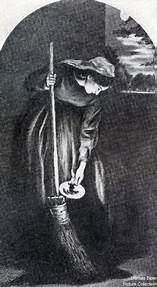

Onion.
The monument was surrounded by a ring ditch 32m in diameter, 3.5m-wide, and 1.7m deep, and its first phase included the interment of crouched burials, some accompanied by distinctive Beaker vessels, inside this enclosed area. One of these was the skeleton of a 12-year-old boy who had been placed in a crouched position at the very centre of the site, together with two beakers. Dr Andrew Richardson, director of Isle Heritage CIC and an expert on Anglo-Saxon cemeteries in Kent, said the ‘Beaker-era monument’ sits within ‘a wider prehistoric funerary landscape’ on the ridge at Mill Hill, but the site also contains burials from the late 6th to late 7th centuries which ‘span the period of the Christian conversion.’
According to traditions established by the chronicler Bede (c.673-735), while much of England was settled by Angles and Saxons, Kent was settled by the Jutes. Archaeological evidence presents a more nuanced picture, however, reflecting a fusion of southern Scandinavian and Merovingian Frankish influences, as well as Romano-British traditions.
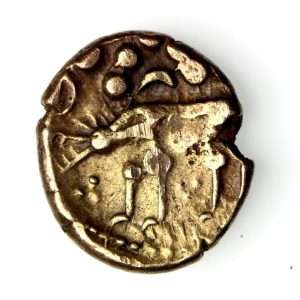
'Drachma' to enlarge.

Sutton Hoo purse clasp: Wolfs / eagles and ducks.
Most of the later burials were found outside the ring ditch, but inside the prehistoric enclosure the archaeologists found the c.AD 550 grave of a warrior who is thought to have died in battle because ‘the front of his skull was smashed in’ and his shield had been used to cover his face, said Tim. His grave goods included a ring sword featuring a garnet in its hilt, and a bronze bucket with two horse motifs. He had been laid to rest alongside a horse and a WOLF size dog, found in a large pit next to the main grave. This is ‘arguably the highest-status male-gendered Anglo-Saxon burial to come out of Kent in the 21st century’, said Andrew.
Another unusual find from the site was a set of scales, complete with ‘intricately decorated weights’, Tim said. Andrew explained that a comparable set had been found in Dover at Buckland cemetery in 1994. ‘I’m hoping that by comparing this new find with that set and others that have been found we can get more of an insight into the standard weights and measures that were being used in this period,’ Andrew said."
Libra?
Side note: ''Consort: A ship sailing with another.''
''Sion is a city in the southwestern Swiss canton of Valais. It’s known for 2 hilltop fortifications: the 13th-century Tourbillon Castle ruins and the Valère Castle complex, with a basilica housing an organ over 500 years old. The 15th-century Cathedral of Notre-Dame-du-Glarier and the conical Witches’ Tower are in the old town. The Majorie and Vidomnat towers house the Valais Art Museum’s regional art collection.''
''In Switzerland, canton is the name given to each of the twentythree states comprising the Swiss Confederation. Three cantons—Unterwalden, Basel, and Appenzell—are subdivided into demicantons, or half cantons, which function as full cantons; thus, there is often reference to twentysix states of Switzerland.''
And/or: ''The Australian National Flag has the Union Jack in the upper left-hand quarter nearest the flagpole (the 'canton') to acknowledge the history of British settlement in Australia.''
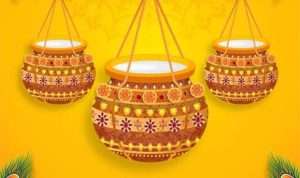
Twentysix links in a figure of 'eight'.
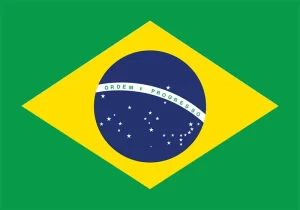
Flag of Brazil. 'Twentysix' stars above the equator. The solitary one = Spica - below. 'Twentyseven' in total. 'nineteen{th}' of November 1889 = Independence Day.
Australia Day is the official national day of Australia. Observed annually on 26 {'twentysix'} January, it marks the 1788 landing of the First Fleet and raising of the Union Flag of Great Britain by Arthur Phillip at Sydney Cove, a small bay on the southern shore of Sydney Harbour.[2] In the present, the government Australia Day Council organises events that seek to recognise the contributions of Australians to the nation, while also encouraging reflection on past wrongs including towards Indigenous Australians and also giving respect and celebrating the diversity and achievements of Australian society past and present....
The meaning and significance of Australia Day has evolved since the first records of celebration in 1808, with contested views on the day existing since at least 1888.[5] Previously, the states celebrated different days that acknowledged their founding, such as Regatta Day in Tasmania, Queensland Day in Queensland or Foundation Day in Western Australia, and the celebration of the first Anniversary Day or Foundation Day (as the day was called) by New South Wales in 1818 was seen in a similar light.[5] Following Federation in 1901, moves for a national holiday gained pace (prompted by lobbying by the Australian Natives' Association which celebrated ANA Day), with the name Australia Day and the date of 26 January finally selected in 1935, with a public holiday at or around that date in all states in 1940.[
Side note: In Jumanji (1995) Robin Williams' character is sucked into a board game as a kid in 1969, while his friend Sarah escapes. He lives in the game-world jungle for 26 years until two different kids bring him back in the overworld by rolling the die and continuing the first turn. They unleash all sorts of jungle monstrosities and the only way to send them all back is to finish the game. In the end Robin Williams wins the game and he and his girlfriend are sent back to 1969 and are able to live a normal life.

'Three' aspects 'under ones belt'? All within the 'circle'. Squaring the circle? A 'gift'? Receiving or giving?
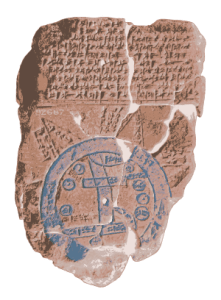
Seven circles. 4 on the right. 3 on the left. East/West?
Change of pace..."Such a division of the 7 into these two constituent principles: the spiritual 3 and the material 4, was used time and again..." [Taken from 'Mystery of Numbers'].
The two brothers are as opposite as Cain/Able. Eventually they get together, sort their differences out, both individually and within the group and then go on to solve a few more ’Group’ questions. He himself, [Asian character/ senior], understands Sufi lore and Egyptian ancient history. It is he who believes he has worked out the final resting place of the three Pharoahs.
Question. You could say. Whats the point? No financial or similar benefit could be gotten from it. Considering their ‘circumstances’. The benefit would be the verification [verily, verily. New Testament]- of the subject. Then for it to be used in their own environment / situation. This character is only mentioned as an example of the positive aspect of the ‘imaginary’ materials framework. Since 9/11 all authors have jumped on the proverbial bandwagon with predictable results. This variation; you may agree; or may not; has a positive twist. Not for the sake of making the story 'different'. But simply because that's the way the story line pans out, i.e.,sometimes the bad guys make good. Nor do we need this subject to inform us of that basic fact.
Everyone knows someone, either directly or indirectly, who while starting on the wrong foot/tack/path has managed to 'change' that situation around. Which fits in with all the amentioned authors.

